Yachting Monthly
- Digital edition


Electric yacht: What are the options for going electric?
- Will Bruton
- July 17, 2020
The options for having an electric yacht or a hybrid-electric yacht are growing in popularity; we outline the current options for those making the switch

The Arcona 380Z is a standard production yacht that has been adapted for electric propulsion. Note the increased solar panel surface area with soft panels bonded to the sails. Credit: Jukka Pakainen
A modern electric yacht can come in all shapes and sizes, from the latest high-tech speed boats with recently developed high-performance electric engines, to a traditional tender with an electric outboard on the back. Increasingly yachts are going electric too as electric engines become increasingly capable of propelling boats weighing several tonnes, and with the rigging for sails, at a reasonable speed for an acceptable length of time.
Since the invention of the marinised engine , there has never been the capacity to store enough fuel to cover significant distances in boats that are smaller than a tanker, with fuel capacity always being the limiting factor. As such the best way to cover long distances on a boat fit for a small number of passengers was, and remains, wind power.
For all the many green attributes that using the power of wind offers, there is no escaping that for most, fossil fuels still represent some part of sailing – whether that be a diesel engine to motor in light winds, onto and off a mooring , or to generate power for onboard electronic systems. Even a small tender used to go from ship-to-shore is often fitted with an outboard motor.
Recent advances in electric power, however, have started to make electric propulsion a reasonable alternative to fossil fuel power. Range will always be an issue but that has long been true of a traditional diesel engine. Improvements in lithuim-ion battery performance is, and likely will continue to, increase range every year.
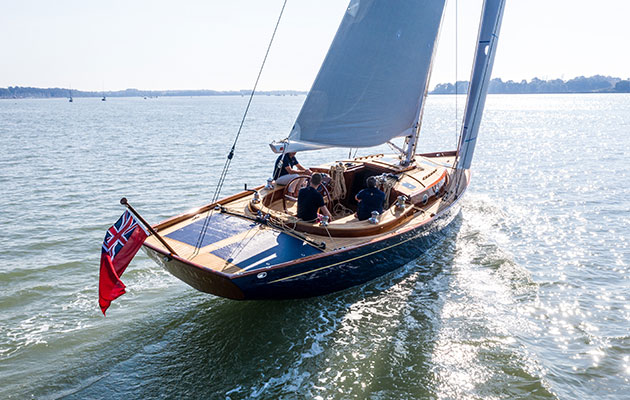
Spirit Yachts 44e – the ‘e’ stands for electric
Additionally electric power and batteries offer the bonus of being able to be recharged via solar panels , a wind turbine or hydroelectric power – via a hydrogenerator mounted on the stern of a boat sailing.
At first glance the electric yacht market could appear in its infancy, but like every revolution, the will of the people is driving forward technology that only a few years ago was seen as the stuff of fantasy.
The market has responded to demand, and battery and motor technology has come on leaps and bounds, driven in part by the rapid development of electric cars.
It may not be commonplace yet, but electric yachting is here, even available ‘off the shelf’, so is it time to get onboard?

The Spirit 111 is a bold hybrid yacht, promising 30 miles motoring under electric power alone. Credit: Ian Roman/Waterline Media
A cutting edge electric yacht
Like Formula One, it’s the cutting edge of electric yachting that trickles down into mainstream production in no time at all.
For Spirit Yachts, a builder defined by a unique blend of traditional and state-of-the-art, electric yachting has been driven by demanding clients that want their yachts to be at the cutting edge.
Spirit Yachts have now produced a number of projects aimed at the all electric luxury yacht market including the Spirit 44e electric yacht and a recent project, the Spirit 111, had all the hallmarks of a superyacht project and the team had to earn their keep delivering to brief.
Managing Director Nigel Stuart explained how it works.
‘The 111 combines several cutting-edge technologies to deliver a something that’s never really been done before. A lithium-ion powered electric drive system can be charged by hydrogenation and also two high-wattage diesel generators.
‘Each generator is 22kw, meaning they can pack a lot of power into the system in a short period of time, they don’t need to run for long to fully recharge.
‘The prop is both a means of drive and power generation, so no separate hydrogenerator is needed. She will be capable of motoring under electric alone for more than 30 miles.
‘When you take on a project that’s electric, it makes you think hard about efficiency so the air conditioning, water heaters and everything in the galley has also been carefully selected to use less power.
‘For her owner there is very little compromise and some major advantages.’
Whilst it’s a long way from the average cruising yacht, the trickle-down effect of projects like the Spirit 111 can’t be underestimated.

Calypso , a Contessa 32, was the yard’s first foray into electric-powered yachts. Credit: Jeremy Rogers
Traditional electric yacht
Jeremy Rogers’ yard in Lymington is the birthplace of the iconic Contessa designs and a veritable temple to long keeled , traditional craft.
Less well known is the yard’s interest in electric auxiliary engines, something they have been involved in for more than 10 years.
Their first project, the refit of a Contessa 32 called Calypso, was an experiment by the Rogers family to see what was possible.
‘ Calypso was a test bed in the technology’s infancy,’ explains Kit Rogers of this early electric boat.
‘Inevitably, we didn’t get it all right, but we learned a lot about the dos and don’ts of electric yachting. The end result was a hybrid. The more we did, the more interesting the project became.
‘It’s not just the obvious, silent peaceful propulsion; it’s also the things you take for granted about a cruising boat. For example, no gas, we didn’t need it because we had electric power.
The yard has also worked on an electric folkboat conversion for a foreign customer.
‘The client, first and foremost, loves to sail. He sees the electric as an auxiliary option, along with the rowing and is excited to own a boat that’s quietly different.
‘He’s looking for a more connected experience and an electric boat helps him achieve it. When you’ve been motoring in and out of marinas under chugging diesel engines for years, the electric motor is something of a revelation.

Arcona has installed solar sails on its latest 380Z electric yacht
Off-the-shelf electric yacht
Perhaps the biggest indication of the future of the electric boat is the willingness of production and semi-production builders to pin their flags to the mast and embrace it.
One of the first was Hanse, who developed a version of their 315 utilising a Torquedo electric pod system.
Providing around the same amount of power as a 10 horsepower diesel, a 4.4kWh lithium ion battery pack powers the system.
Arcona, Dufour, Elan and Delphia also have electric boat models and are each taking their own direction on entering the market.
Arcona’s 380Z (the ‘Z’ stands for ‘zero emission’) fully electric boat has solar panel covered sails, capitalising on the large surface area to top up batteries under sail.
In the multihull market, there is even more scope for solar, wind and hydrogenation due to the horizontal surface area available for solar charging.
What are the options for an electric yacht?
Pure electric.
Purely electric systems can be broadly divided into two categories, high and low voltage.
The latter is the simplest option in terms of how it works and requires less specialist knowledge to install.
Kit Rogers installed a 48v Ocean Volt system in his latest project and remarked on the experience.
‘The advantage of the low voltage system is its inherent lack of complexity. Whilst we’ve coupled it with lithium ion battery technology, it can also be wired up to conventional lead acid batteries. There are pros and cons to both. What surprises everyone is the size, it’s a tiny motor and is surrounded by lots of space where the engine would normally sit.’
High voltage systems are more advanced, and utilising lithium-ion technology, their capacity is improving year on year.
For larger yachts this is generally seen as a better option.
A partnership between BMW and Torqueedo has led to the development of the Deep Blue 315v high voltage battery.
Effectively the same unit as found in the BMWi3 electric cars now often seen on the high street, the system produces a lot of power and is being used on the Spirit 111 project as well as catamarans.
Electric hybrid
One big barrier to entry exists for most potential electric yacht buyers – range.
Even the most advanced set-ups are limited to a maximum of a few hours motoring at cruising speed.
‘The electric motors excel at two things in particular,’ explained Kit Rogers.
‘The first is as auxiliary power for getting in and out of marinas. The second is engaged at low power to very efficiently motor-sail in light airs. If you want to do more than that, at present, you need to add a way of packing in the charge into the battery quickly whilst at sea; which means a generator’ .
As with electric cars and as enthusiasm builds for the technology, a hybrid option, pairing a generator with an electric drive system, is already proving popular and is probably the most practical option for those planning to cruise any distance.
Using a large generator, charge can be quickly put into the system when needed.
Once under sail, the yacht’s propeller becomes a hydro generator, meaning that diesel power is not needed day-to-day.
Solar can also be used to add additional charging capacity.
‘When a fully integrated electric hybrid system is incorporated into a cruising yacht from the outset, its possibilities really become clear,’ explains John Arnold, UK manager at Torqeedo.
‘Sailing for days on end with no engine noise is entirely possible. There are other less obvious benefits too. Electric drives have no long rotating shaft, so can be used as pod drives as well, meaning the boat is far more manoeuvrable than even a yacht equipped with bow and stern thrusters.’

Spirit Yachts 44e
How much does it cost to convert a yacht to electric power?
The technology exists, but anyone seriously considering going electric will want to crunch the numbers.
In the case of taking out a traditional inboard diesel and replacing it with an electric system, it’s relatively easy to work this out.
However, unless you include an auxiliary generator, you will be limited to battery range alone.
For this reason, we’ve done a like for like comparison for a 35ft yacht engine refit, including the cost of a generator to make the system a practical hybrid.
Unsurprisingly, at the moment, there’s a big difference in cost, but at between three to six times the cost, it is gradually coming into the realms of possibility, and prices should continue to drop as technology develops and evolves.
Ocean Volt SD10 Motor system (including batteries, charger and 6kw generator): £30,825.16
Beta Marine Beta 20hp Marine Diesel: £4,100
If you enjoyed reading this….
A subscription to Yachting Monthly magazine costs around 40% less than the cover price .
Print and digital editions are available through Magazines Direct – where you can also find the latest deals .
YM is packed with information to help you get the most from your time on the water.
- Take your seamanship to the next level with tips, advice and skills from our experts
- Impartial in-depth reviews of the latest yachts and equipment
- Cruising guides to help you reach those dream destinations
Follow us on Facebook , Twitter and Instagram.
- Spirit 1.0 Plus
- Spirit 1.0 Evo
- Pod Drive Evo
- E-Series Battery
- G102-100 Battery
- Find a Dealer
- Have a Dealer Contact Me
- Product Registration
- Support Center: FAQ & Guide
- Video Tutorial
- Download Center
- Performance Bulletins

Electric Sailboat Motor: Range, Cost, Best Kits for Conversion
Today, owning a completely green sailboat has been made possible with electric sailboat motors.
Imagine cruising with the silence of an electric sailboat motor and the ease of use with a simple press on the start button. What’s better is there are no exhaust fumes at all with significantly less maintenance.
It’s so appealing that a lot of sailing liveaboards have made their electric sailboat motor conversion.
However, some sailors are still on the fence, worrying about the range and price of the electric sailboat motor.
If you are one of them, you are in the right place!
This post will guide you through every aspect you need to know about electric sailboat motors to help you make an informed decision.
Besides, you will get professional insights on how to make the electric sailboat motor conversion for your own boat and learn the best electric sailboat motors (with honest reviews).
Table of contents:
- Electric Sailboat Motors: Confusion Explained
Electric Sailboat Motor or Combustion Motor
- Electric Yacht Motor Conversion: Two Solutions
- How to Size an Electric Sailboat Motor
Best Electric Sailboat Motors (with Reviews)
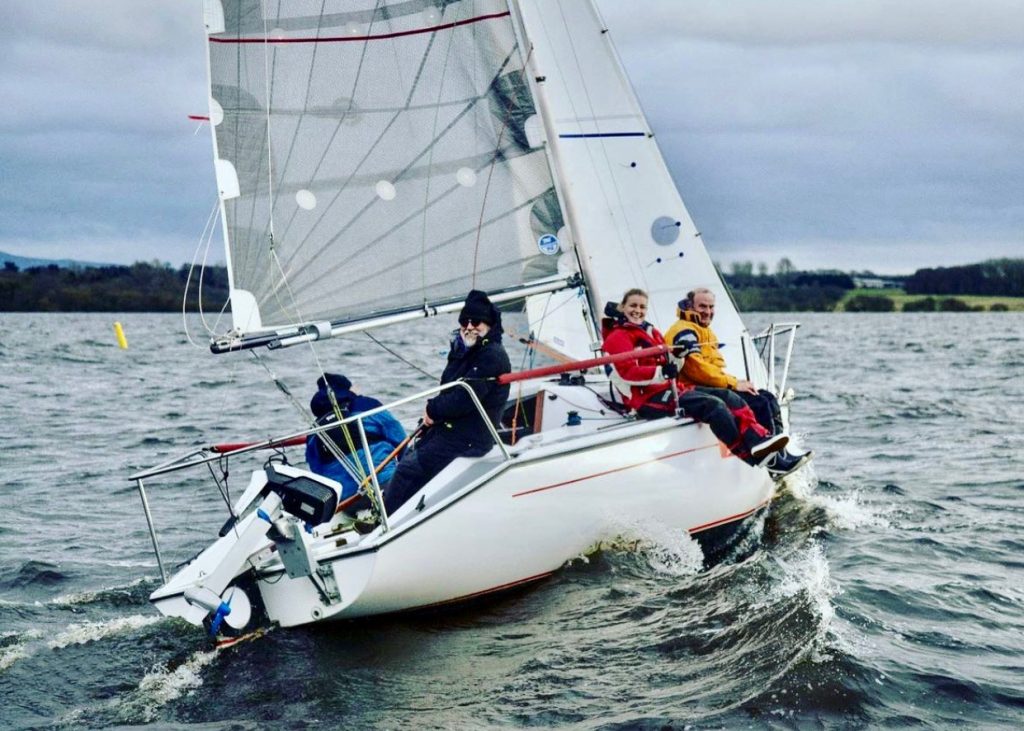
Electric Sailboat Motor: Confusion Explained
Can you go cruising with an electric sailboat motor? Can you put an electric motor on a sailboat? Are there any limitations?
Whether electric sailboat motors are a good fit for your boat is not a YES or NO question. Here we will explain your top worries with statistics and facts. That way, you can make a wise decision according to your situation.
You may hear some complaints about the batteries and range of the electric propulsion.
However, their experience may not suit electric sailboat motors.
In fact, even small electric engines work pretty well in many sailboats. That’s because most of the time, the wind can power the boat, and the motor is just used for docking or in rare times when there is no wind.
Therefore, it makes more sense to learn electric sailboat motor performance in real-world applications.
Here is a test report of a 3 HP electric sailboat motor on an RS21 racing sailboat:
As you can see, the small electric sailboat motor can run at 5.5 mph top speed for one hour continuously.
And there is a big difference in terms of range vs speed for electric sailboat motors:
If you lower the speed, the range and runtime can be greatly extended. The slower you go, the further you’ll get. For example, if you cut your speed in half, the electric sailboat motor can last 7 hours and go 20 miles within one charge.
That’s pretty sufficient if you use the electric yacht motor mostly for docking or as an auxiliary engine.
Faster top speed (and more range) is available with higher power electric sailboat motors depending on your specific requirements. Contact a specialist to design your electric sailboat motor solutions.
Also, don’t forget to get the electric sailboat motor with regeneration (See recommendations below).
That’s to say, when there is a lot of wind and you’re moving rapidly via your sails, they regenerate and store electric power on the batteries to keep you moving at other times. Solar recharging is also a plus.
Essentially, the range depends on how many batteries you have, so it’s not a limitation of electric sailboat motors but energy and batteries.
If you are still worried, you can offset this by getting a diesel generator, which is more efficient than a diesel engine. And it is a range extender when you need it, but for 90% of your motoring that you don’t need the range, you can rely on the electric sailboat motor.
Some of you might be concerned about the extra weight of the batteries.
In fact, an electric sailboat motor with lithium batteries weighs less than a diesel engine, particularly if you include the fuel weight.
If you want a lightweight electric sailboat motor solution, make sure you get one with LiFePO4 batteries . Compared with other marine batteries, they are more compact in design with much less weight and higher energy density.
Some more advanced electric motors for small sailboats (such as Spirit 1.0 Evo) feature an integrated lightweight battery. So you don’t need to worry about the complex wiring to hook it up or extra space to store the battery.
This is a huge plus if you want to use the electric sailboat motor on a tender or dinghy.
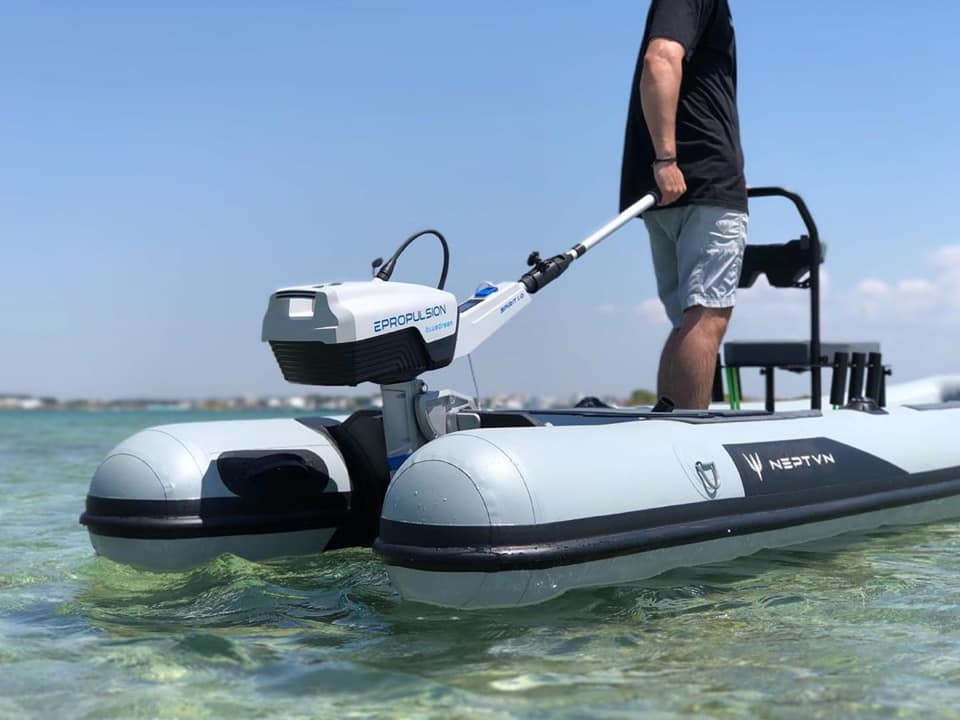
Here is also a chart that collects the weight of some popular electric sailboat motors for your reference:
For many people, another big problem with electric sailboat motors is the cost.
It’s true that a gasoline outboard with similar power is a lot cheaper to buy. However, the electric sailboat motor eventually wins in long-term operating cost. That’s especially the case if you are going to do a lot of motoring.
Electric sailboat motors save on fuel and maintenance costs, which can build up to a large amount over time.
Here is a chart that compares the cost of a 3HP electric sailboat motor (coming with a built-in battery) with its combustion counterpart:
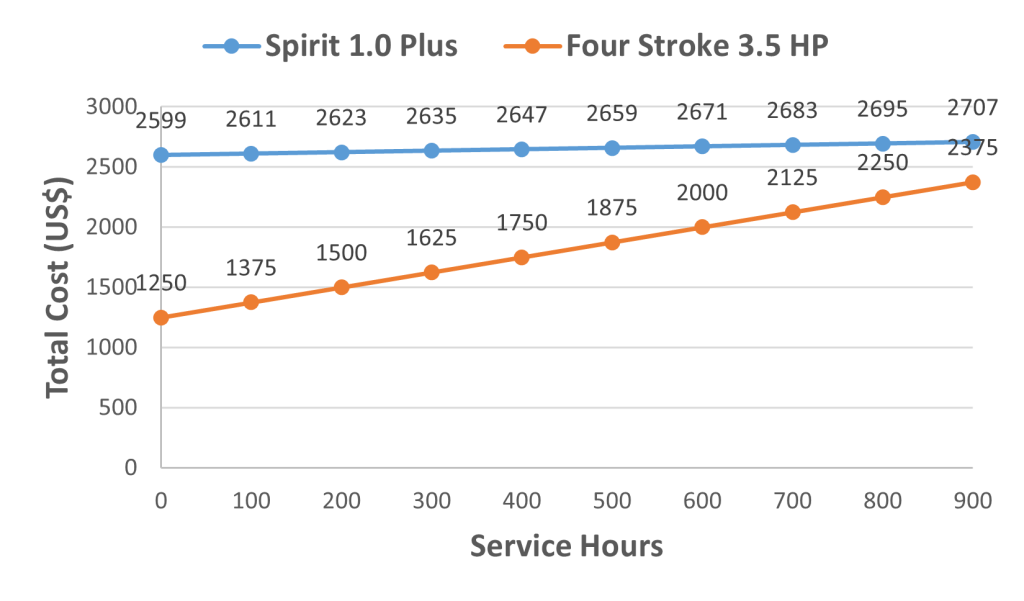
That’s to say, you will cover the price difference for electric yacht motors eventually as long as you use it long enough. Click to check the details of the calculation .
What makes the electric sailboat motor even more worthwhile is it saves you a lot of hassles, especially for sailors who only use the engine in and out of the harbor. Dealing with the maintenance of the gas outboard for a 10 minute motor out of and into the harbor is disproportionate and painful.
*The higher horsepower electric sailboat motor may be different in terms of the cost calculation. Check out the outboard motor pricelist by HP for more information.
As you may have already noticed, electric propulsion has already been widely used in the marine industry:
It’s quiet while motoring, clean to handle, environmentally friendly, with less maintenance and operation costs.
The electric sailboat motors are easier to use with dramatically fewer moving parts to break and no worries about being a diesel mechanic to deal with the hard pulling start. You can have it always on, so it is ready whenever you need it.
And it makes even more sense in sailing applications:
You don’t really need to motor much if your plan is to actually sail. If you are completely becalmed, you will probably just need to motor at 2 knots to keep making way, which is easy for electric sailboat motors.
If you mostly use the motor to get into and out of the harbor, the electric sailboat motor also works great for you.
You can always charge up at the dock, motor out of the marina (or even motor to your sailing area or race start), then hoist the sails and when you’re through, the batteries are charged again.
The electric sailboat motor is also useful as a backup (kicker) motor in case your system goes down. That’s why you can see people pushing a lot of big boats with small electric motors. (Click to learn more information about kicker motors .)
Personally, it’s really nice to have an electric auxiliary in the boat – no smelly, messy diesel and motor oil to deal with, a much simpler system with less maintenance, and much, much quieter operation.
However, powerboats tend to have much higher requirements in terms of both power output and runtime. In that case, an electric sailboat motor can be hard to satisfy your needs.
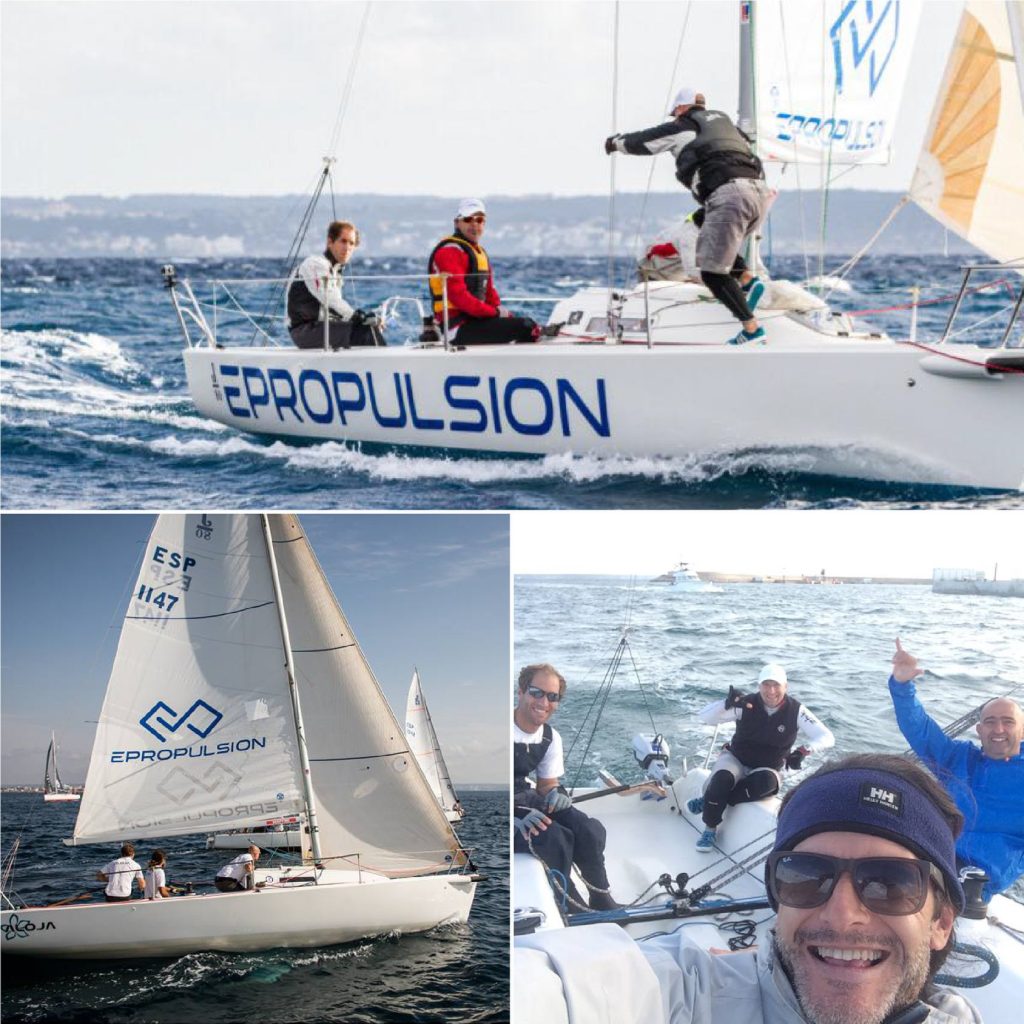
How Do You Size an Electric Motor for a Sailboat?
As a rule of thumb, you will need approximately 1 HP per 550 lb of the displacement of your boat.
Generally speaking, a 3 HP electric sailboat motor can push a sailboat up to 25 ft and a 9.9 HP motor is sufficient for a 30 ft sailboat to motor at a satisfying speed.
However, bear in mind the horsepower you need always depends on your needs and applications.
It’s better to check the data from real-world tests to decide whether the electric sailboat motor is suitable for your specific needs.
For example, the 9.9 HP electric sailboat motor Navy 6.0 allows you to go at 6.9 mph (11.1 kph) on a 30 ft sailboat, and the range can be extended to 46.4 miles if you decrease your speed to 2.9 mph (4.6 kph).
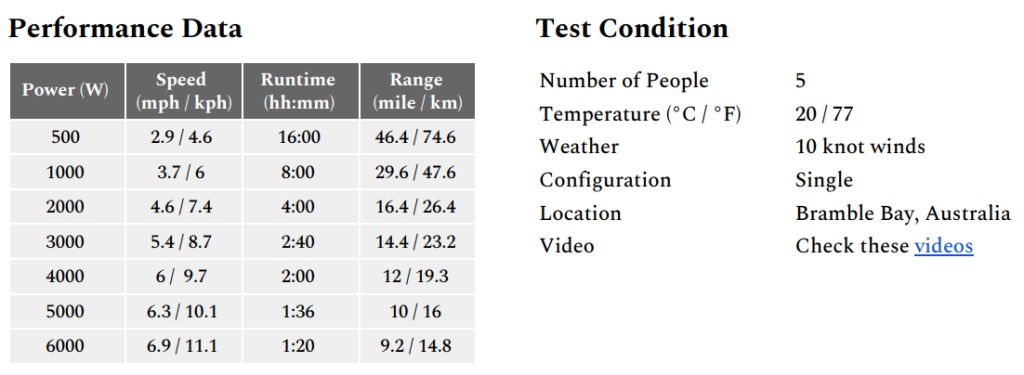
Click to see more test reports with other electric motor and sailboat combinations, and find the electric sailboat motor that suits you best.
If you are still not sure about the size of the electric sailboat motor for you, feel free to leave us a comment and we will get back to you ASAP with professional suggestions.
Electric Sailboat Motor Conversion
Basically, there are two ways for you to convert your sailboat to a clean and quiet electric drive system:
You can either convert your current vessel to electric or buy an engineless yacht and install an electric sailboat motor on your own.
#1. Repower Your Sailboat with Electric Motor
If you decide to replace the diesel engine with an electric motor, you will need to do a lot of preparations:
The DIY approach requires an electric sailboat motor kit (including motor and controller), batteries, a good level of mechanical ability and basic electrical knowledge, as well as some common tools such as a voltmeter.
You will need to take the old engine out for the new electric sailboat motor installation. It’s not an easy task that involves removing the engine mounts and the drive shaft (dealing with the numerous hoses and cables), taking out the engine, exhaust system, fuel tank, and its attendant tubes, etc.
Remember to balance the boat to avoid listing during the electric sailboat motor conversion.
Then in with the new electric sailboat motor. The installation process can be straightforward if you choose the electric sailboat motor kit wisely (See steps below). Furthermore, you can set up solar charging for your electric sailboat motor with solar panels and charger.
Many sailors have recorded their electric sailboat motor conversion process and experience. Be sure to check them out to get some inspiration. For example, Ed Phillips has documented everything which can serve as a guide for newbies to get started.
Mind you there can be a whole heap that can go wrong in designing and maintaining the electric sailboat motor systems. You really need to be totally on top of it if you want decent performance or reliability.
If you are not that technically inclined, it’s better to talk to a specialist first to discuss your plan for a smooth electric sailboat motor conversion.
#2. Install an Electric Motor in a Sailboat
If you own an enginless sailboat, the electric sailboat motor conversion is much easier for you.
All you need to do is to find a reliable electric sailboat motor and install it in simple steps. The whole process can be easily done, even for beginners. Here we take the popular 6 HP electric sailboat motor Navy 3.0 as an example to show you the installation process:
- Step 1 : Rotate the clamps or use the screws to fix the outboard onto the sailboat.
- Step 2: Mount the steering system in the proper position.
- Step 3: Install the tiller on the electric sailboat motor.
- Step 4: Connect the batteries to the electric sailboat motor system.
Click to check the video tutorial that guides you through each step of the installation.
If you are worried about aesthetic issues and want higher horsepower options, an electric inboard motor can be a better suit for your sailboat. If you prefer an inboard motor for your sailboat, contact our OEM team to get an electric propulsion solution tailored to your needs.
Note : You might find some electric trolling motors rated by #s of thrust on the market. Actually, those electric trolling motors for sailboats can only provide limited speed and range. If you are heading into the wind, the trolling motors for sailboats are definitely not an ideal solution.
Once you’ve evaluated if electric sailboat motors are right for you, there are a lot of options for electric systems.
Here are some popular electric sailboat motors with positive reviews from customers worldwide. Fast charger is available for all the models recommended to reduce your charging stress.
#1. 3 HP Spirit 1.0 Evo
If you are looking for an electric motor for a small sailboat, be sure to check out the ePropulsion Spirit 1.0 Evo. It’s suitable for large daysailers or small cruising sailboats under 25 ft.
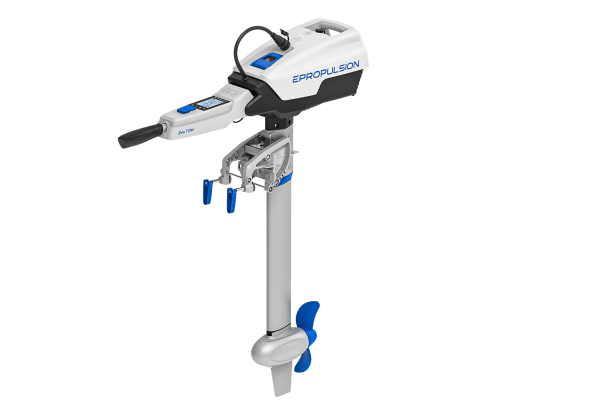
With the Spirit 1.0 Evo electric sailboat motor, you can go 5.5 mph (8.8 kph) at top speed on the 21 ft RS21 sailing boat, or troll for 20 hours continuously at 2.2 mph (3.5 kph) according to our test .
This electric sailboat motor with regeneration allows you to recover energy from the prop while under sail. It will start to generate power automatically when the sailing speed reaches 2 knots.
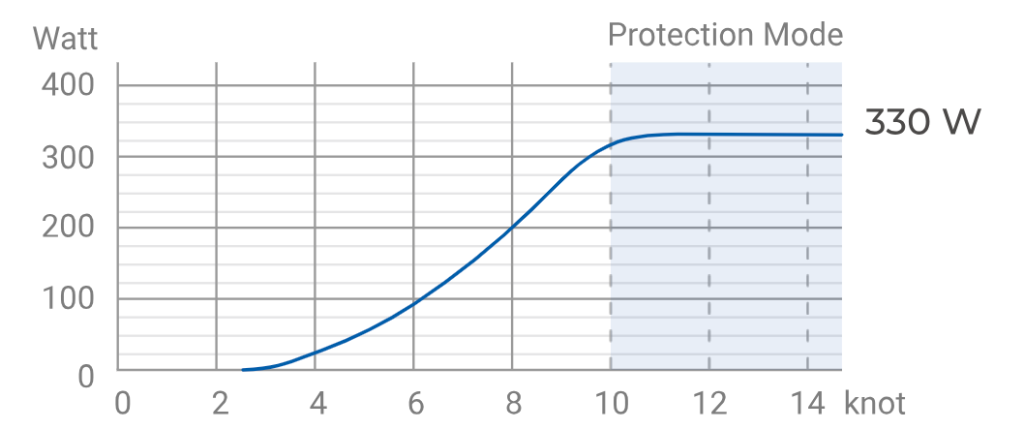
As an electric auxiliary sailboat motor, it can also be easily installed on your tender boats or yacht dinghies since it’s portable and easy to transport (with a lightweight integrated battery).
Features You Will Love:
- Come with the industry-first hydrogeneration capability
- Direct-drive technology makes it maintenance-free
- Portable with a 1276Wh large integrated lithium battery for long range
- Safety wristband keeps you safe in case of MOB
- Digital operation keeps you informed of the battery status
Spirit 1.0 Evo Electric Sailboat Motor Reviews:
“Great weekend with my 17′ sailboat powered by the Spirit Evo. This is great. Quiet and reliable. Went at 3/4 throttle for about 1.5hrs when taking it back to boat ramp.” – Robert Taylor
“Very happy with our Spirit Plus. Pushing our Kolibri 560 a 750 Kg sailboat, with ease. Doing about 5.8 km/h at 500W.” – Frank van Asten
#2. 6HP/9.9 HP Navy Evo Series
If you want a little more juice on the electric sailboat motor, check out the ePropulsion Navy Series. It offers 6 HP and 9.9 HP models for your selection and it provides sufficient power for sailboats up to 30 ft.
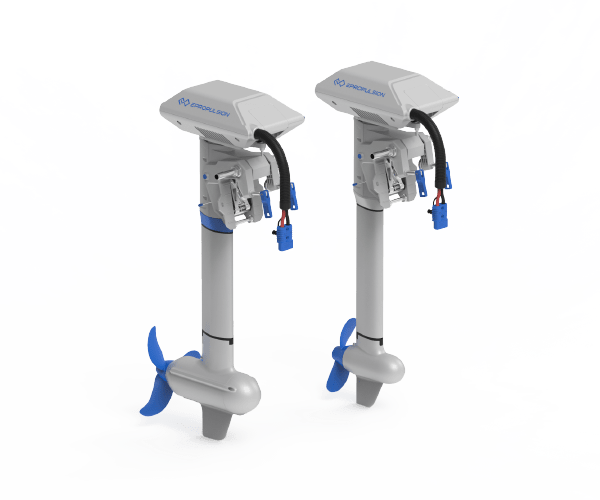
According to our test , the 6 HP electric motor Navy 3.0 can push the Catalina 25 sailboat (25 ft) at 6 mph (9.6 kph) top speed, while the Olga 33 sailboat (33 ft) can go at 7.5 mph (12 kph) with the 9.9 HP Navy 6.0 motor.
The Navy series electric sailboat motor also comes with regeneration features which can be recharged with hydrogeneration, wind turbine, and solar panel.
- Four controls to fit your sailboat installation and your boating style
- Accompany LiFePO4 batteries (need separate purchase) are more energy efficient
- Digital display offers real-time monitoring of the power and battery
- Magnetic kill switch and safety wristband keep you safe on the boat
- Electric start saves you trouble pulling the cord to start
Navy Series Electric Sailboat Motor Reviews:
“I have a Navy 3.0 with E80 on a Catalina 25 sailboat. It is working well. Currently I am using about 4% battery to go in/out of the marina by boat.” – Aaron Young
“Just finished my 8 weeks sailing journey in the Baltic Sea. The two Navy 3 outboards provide enough power for my 33ft catamaran. The 400W solar panels provided enough energy for engines and all other energy consumed on board with 2-6 persons. The two Navy Batteries provide power for engines and all other on-board electric devices. I never had to use shore power, so totally self-sufficient electric system.” – Martin Hildebrand
Recent Posts

ePropulsion Sustainably Mobilizes Hundreds of Sightseeing Bamboo Rafts on the Guilin Li River

Bass Boat Motors: The Only Guide You Need in 2024

ePropulsion’s Revolutionary eLite Electric Outboard Motor Wins Innovation Award in Miami
Join the discussion cancel reply.
Save my name, email, and website in this browser for the next time I comment.
Notify me via e-mail if anyone answers my comment.
This site uses cookies to personalize your experience and analyze site traffic. By clicking accept or continuing browsing the site, you are agreeing to our use of cookies. See our Privacy Policy here .
View the Serial Number
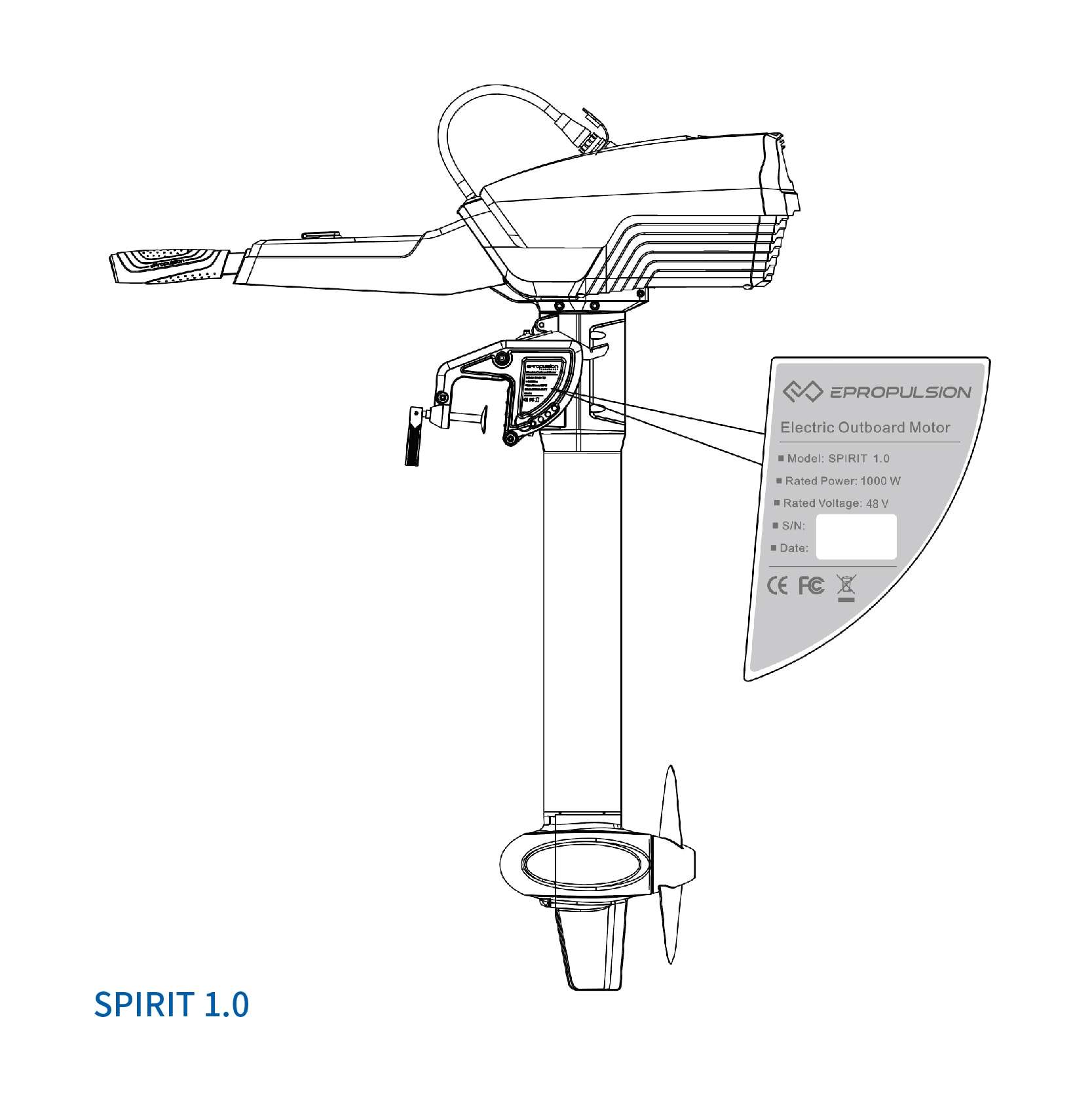

Home » Blog » Gear » Buyers guide to electric boat motors (2023)
Buyers guide to electric boat motors (2023)
By Author Fiona McGlynn
Posted on Last updated: August 3, 2023
Considering making the switch to an electric boat motor? With electric vehicles now commonplace on the roads, it’s no wonder so many boaters are curious about electric boats.
While electric boat motors have been around for a while, in the last several years the technology has taken huge leaps, resulting in more powerful motors, longer-lasting batteries, and ultimately more options for recreational boat owners.
Today, many types of boats can be outfitted with an electric propulsion system including pontoon boats, sailboats, jon boats, powerboats, fishing boats, yachts, and trawlers . If your boat’s combustion engine is in the range of 1 to 135 hp (.75 to 100 kW), you should be able to find an electric substitute.
While electric boating hasn’t gone mainstream—it’s estimated that close to 2% of recreational boats are electric—it’s still a great time to be thinking about making the switch, particularly if you own a tender, sailboat, or boat on a green lake where combustion engines are prohibited.
Table of contents
- 1.1 Benefits
- 1.2 Drawbacks
- 2.1.1 Key features of electric outboard boat motors
- 2.1.2 Electric outboard manufacturers
- 2.2.1 DIY electric inboard boat motor conversion
- 2.2.2 Key features of electric inboard boat motors
- 2.2.3 Electric inboard manufacturers
- 2.3.1 Serial vs. parallel hybrids
- 2.3.2 Key features of marine hybrids
- 2.3.3 Marine hybrid manufacturers
- 2.4.1 Electric pod and sail drive manufacturers
- 3 Batteries
- 4 Ready to catch the electric boating wave?
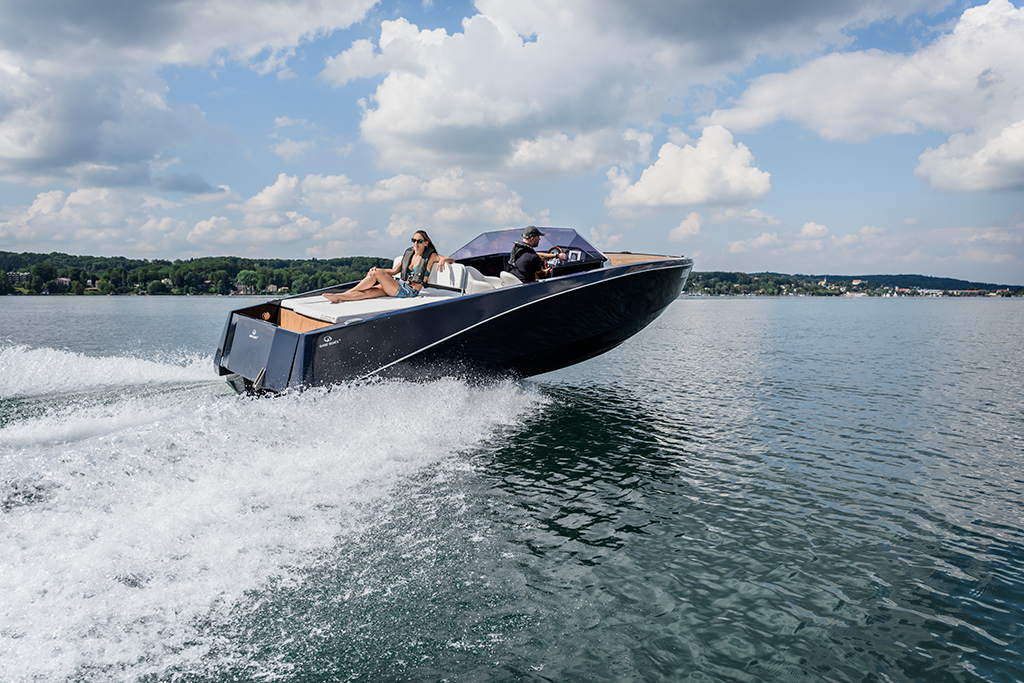
Benefits and drawbacks of electric boat motors
Electric marine motors offer several advantages over internal combustion engines:
- They’re completely silent .
- No noxious fumes or smelly exhaust gases to deal with.
- Instant torque. Electric propulsion provides instant torque, giving you better maneuverability and more consistent speeds in choppy conditions.
- Lightweight. An electric setup (including motor, batteries, and generator) typically weighs less than its diesel counterpart.
- No fuel cost. Charging an electric boat may cost a couple of dollars per charge.
- Easy to maintain. Imagine the maintenance on an outboard with no gas, spark plugs, or oil! Electric motors are simple, more reliable, and virtually maintenance-free.
- Renewable power. Once you’ve gone electric you can get power from renewable sources like wind generators and solar panels.
- Better for the planet. Electric marine motors don’t produce water pollution or produce harmful emissions like carbon dioxide (CO2), nitrogen oxides (NOx), and hydrocarbon (HC).
- Range. The greatest drawback of electric boats is their limited range, which is often measured in the 10s of miles. Range is limited because batteries don’t have the same energy density as fuel — they can’t provide the same energy, pound-for-pound as a tank of gas. A good battery monitoring system, one that displays the remaining range in real-time, can help boaters manage energy consumption and ease range anxiety. For those who want to go farther afield, hybrid propulsion may be a better option.
- Upfront cost. This new technology isn’t cheap. For example, a small electric outboard boat motor may sell for two-and-a-half times the cost of a gas outboard. However, prices are expected to come down as the industry reaches scale.
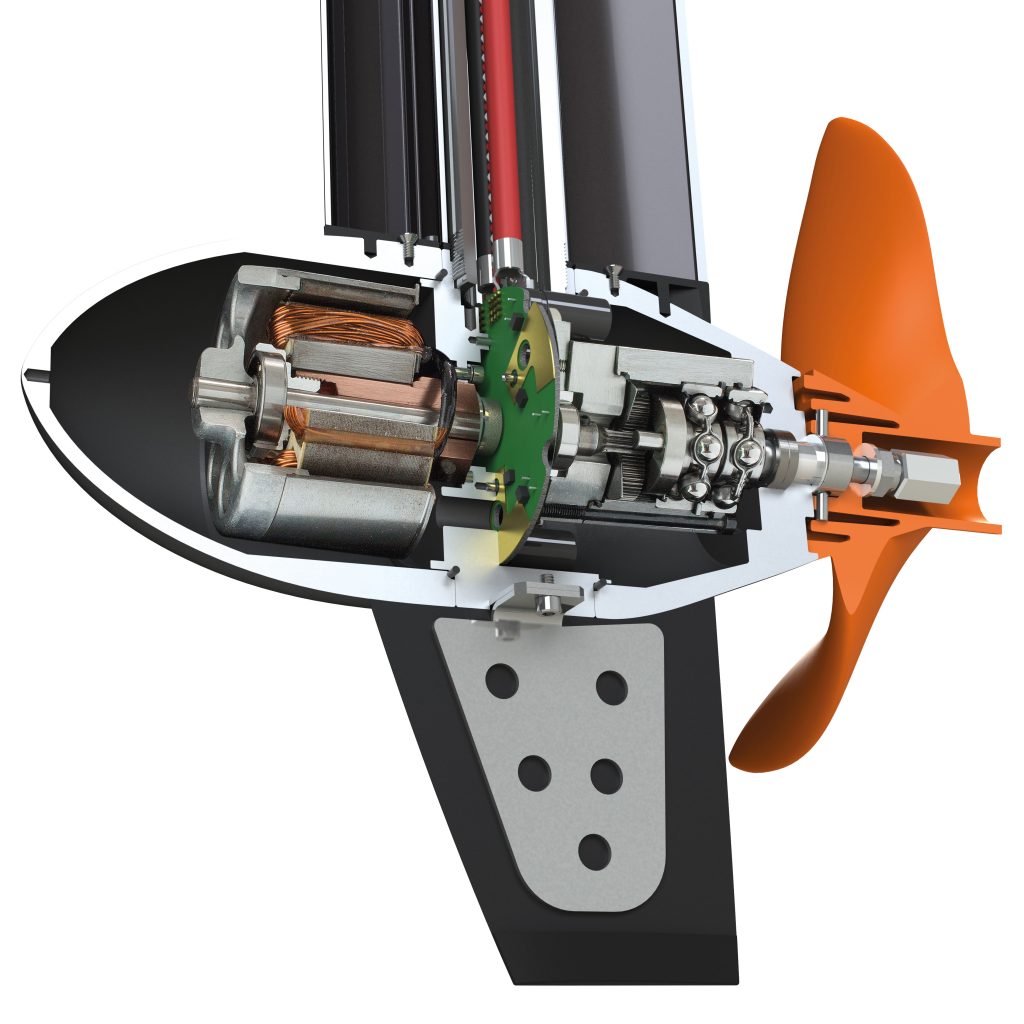
Types of electric boat motors
Electric outboard boat motors.
Some of the first electric outboards to hit the recreational boating market were smaller electric motors, typically used as trolling motors on fishing boats.
Today, it’s possible to buy far more powerful electric outboard motors in the 1 to 80 hp (.75 to 60 kW) range , with ever more powerful versions hitting the market each year. In 2022, Norwegian start-up, Evoy launched the world’s most powerful outboard to date, the 225kW Storm, a 300-hp beast of an electric outboard!
The range on electric outboard boat motors varies dramatically depending on your boat, total weight, propellor, and battery capacity .
The range also depends on how fast you want to travel. If you go slowly you’ll have a much greater range.
For instance, at a slow speed (5 knots) Torqeedo’s Deep Blue 50R , a 50 kW motor (80 hp equivalent) with a 40 kWh battery, has a listed range of 33-100 nm. But at full throttle (20-25 knots), the listed range drops to 16-20 nm.
To get a better sense of what range to expect on your boat (at both low and high speeds), you can look at the manufacturer’s website. See our list of electric outboard brands below.
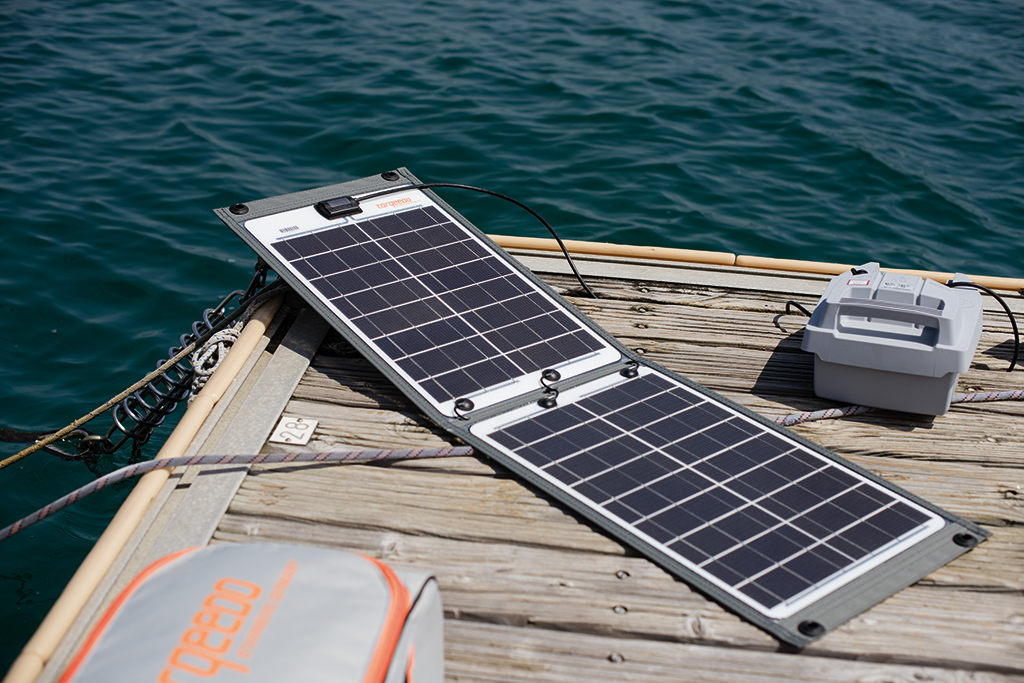
One of the great things about electric outboards is that they can use renewable power sources. So, for instance, you could plug your boat into a portable solar panel while picnicking and get an extra boost for the trip home.
Some electric outboard boat motors can even generate power! Motors with hydro regeneration capabilities can charge the batteries while the boat is being towed or under sail.
While hydro regeneration is a fairly new feature for electric outboards, some manufacturers, like EPropulsion, are offering it across their outboard product line.
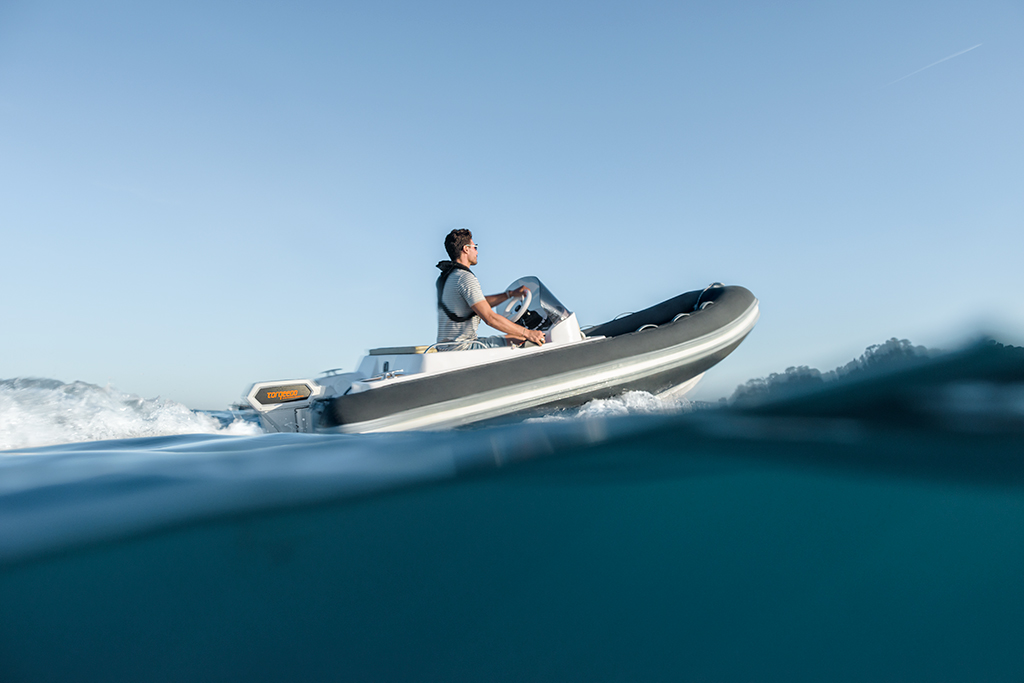
Key features of electric outboard boat motors
Each electric outboard motor brand has slightly different standard offerings and add-on features. Here are some of the key features and options to look for.
- Waterproof. Some electric outboards are fully sealed and designed to withstand immersion
- Remote controls. Choose between tiller and remote throttle controls
- On-board computers . Some electric outboards come with chartplotter connectivity, navigation functions, sonar, GPS anchoring, and autopilot features
- Built-in or stand-alone batteries. Some of the smaller motors come with built-in batteries, while the larger ones have separate battery packs
- Battery monitoring and tracking systems that calculate and display the remaining range in real-time
- Shaft length. Electric outboards come in both short and long shaft lengths to accommodate a variety of applications.
- Hydro regeneration capabilities
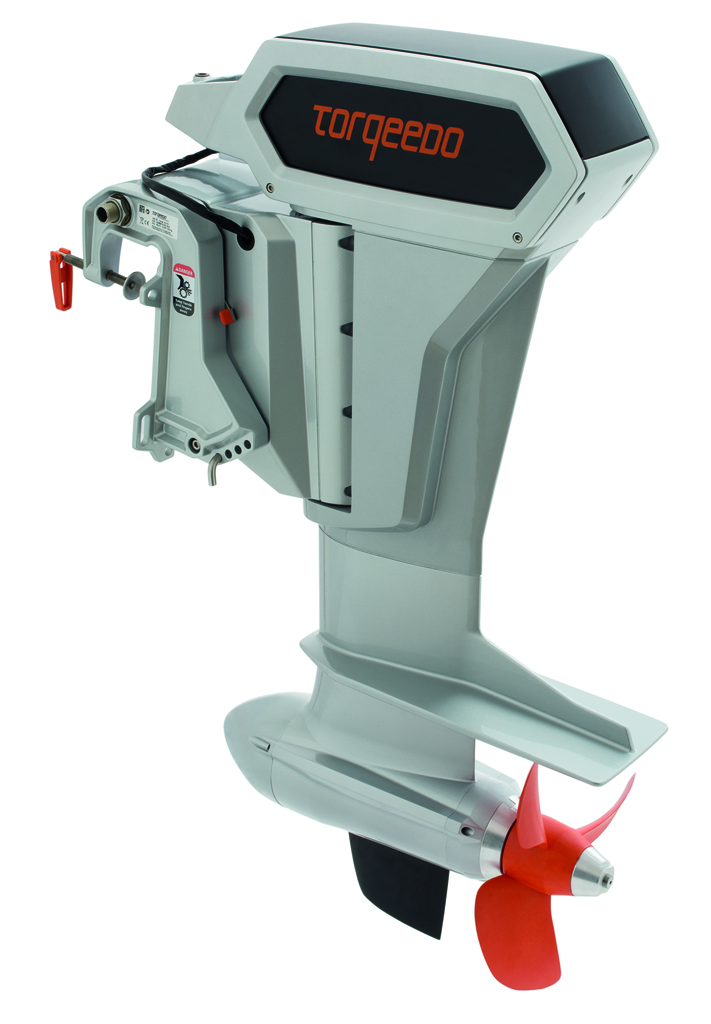
Electric outboard manufacturers
These electric outboard boat motor manufacturers (listed in alphabetical order) range from small startups to large companies and serve the North American market.
If you’re looking to learn more about what each of these companies offers (and how they compare) I’d highly recommend checking out the Plugboats’ electric outboard guides and directories . Jeff Butler, the editor at Plugboats has done a great job of compiling motor specifications from across the market.
Headquartered in San Diego, California, Bixby makes a small electric motor system for kayaks, inflatable boats, canoes, and paddleboards.
Elco has been building electric motors for 125 years and counts the likes of Henry Ford and Thomas Edison among their customers. Their award-winning electric marine motors range from 5 to 50 hp. The company is based in Lake George, New York, and its electric motors can be found on boats around the world.
Flux Marine
Flux Marine was founded by mechanical engineering Princeton grads and offers three outboard models—a 40 hp, 70 hp, and 100 hp. In 2021, they won an award for the best new green product at the Newport International Boat Show.
Joe Grez, a consumer product developer from Washington, invented the EP Carry , a compact, ultralight electric outboard system because he was concerned about exposing his young daughter to the carbon monoxide (CO) emissions produced by gas outboards.
The EP Carry retails for $1,600 and is a great size for small vessels like dinghies, canoes, inflatable boats, and kayaks.
ePropulsion
ePropulsion , based in Guangdong, China, manufactures 3 to 9.9-hp electric motors for sailboats, fishing boats, as well as dinghies and tenders. They all come with hydro regeneration capabilities.
Mercury Marine launched the Avator 7.5 electric outboard (3.5 hp equivalent) in early 2023. The leading outboard manufacturer is currently developing more powerful 20e and 35e models which it plans to release later this year.
In 2023, Newport , a well-known US-based inflatable boat manufacturer, launched three small outboards ranging from 1.8 to 3 hp.
If you’re into fishing, you’re probably familiar with the Minn Kota name, derived from MINNesota North DaKOTA, prime fishing country where the company has its roots. They introduced their first electric trolling motor back in 1934 and they’ve been making them ever since.
Pure Watercraft
Pure Watercraft was founded by CEO Andy Rebele in Seattle in 2011. Their 25 kW (50 hp) motor starts at $16,500.
Ray Electric Outboards
Ray Electric Outboards is a 3rd generation family-owned business based in Cape Coral, Fl. They manufacture one outboard model that can be operated at different power ratings ranging from 10 to 22 hp.
Stealth Electric Outboards
The 50 and 75-hp Stealth electric outboards were developed by Scott Masterston of Houston, Texas.
German manufacturer, Torqeedo , has been leading the propulsion industry for years and sells some of the best e outboard motors in the 1 to 80-hp range
Vision Marine Technologies (formerly The Canadian Electric Boat Company).
Based in Quebec, Canada, Vision Marine Technologies has been in the boating industry for 25 years and produced some very innovative electric boats. In 2021, they launched E-Motion 180E, one of the most powerful electric outboards on the market.
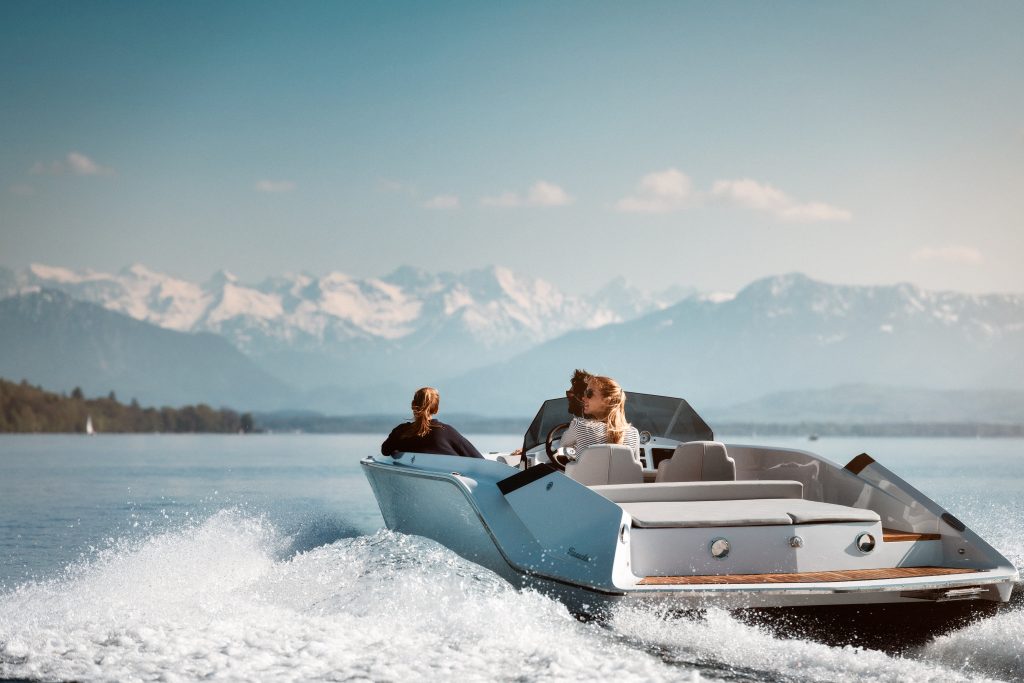
Electric inboard boat motors
Today’s electric inboard motors can provide anywhere from 3- to a whopping 330 hp (2 to 246 kW) and are used in a range of applications from heavy displacement vessels to fast, planing powerboats.
Similar to outboards, the range on electric inboard engines will vary based on your boat, load, battery capacity, and boat speed (among other things).
However, with an inboard electric boat motor, you have the option of a hybrid motor which can significantly extend your range. We’ll discuss the pros and cons of hybrid boat motors later in this post.
Sailors may also want to consider choosing an inboard electric motor with hydro regeneration capabilities. These electric power motors can charge the battery while the boat is under sail.
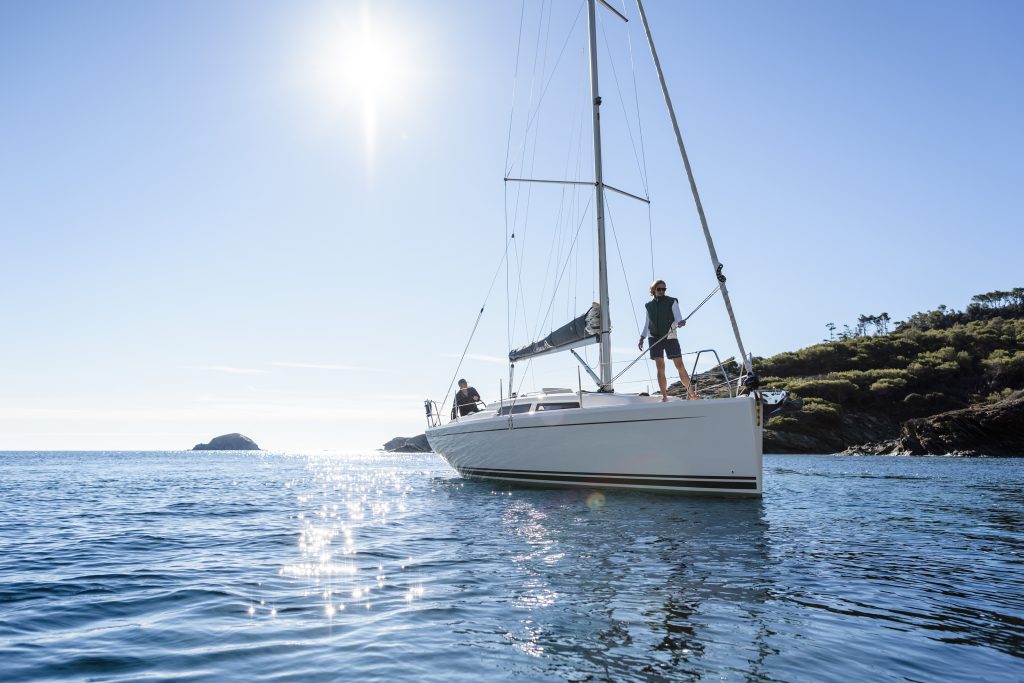
DIY electric inboard boat motor conversion
One way to save money on an electric inboard is to do the installation yourself. There are a few DIY electric inboard boat motor conversion kits available on the market.
I’ve spoken with a few sailors who’ve had great success replacing their inboard diesel engines with these electric boat motor conversion kits from Thunderstruck-EV , an electric drive manufacturer in Santa Rosa, California.
Key features of electric inboard boat motors
Each brand has a slightly different set of electric inboard motor options. Here are some of the key features and options to look for.
- DIY conversion kits
- On-board computers and touchscreen display
- Waterproof system components
Electric inboard manufacturers
US manufacturer, Elco Motor Yachts , has been building electric motors for over 125 years, having gotten their start in 1893, supplying electric boats for the Chicago World’s Fair. They have seven inboards ranging from 6 to 200 hp.
Electric Yacht
Electric Yacht is a US supplier focused on providing plug-and-play electric motors for DIY installations on sailboats. Their electric propulsion systems range from 10 to 30. They’ve had over 450 installs in 10 years of production.
Oceanvolt is a leader in regenerative systems and their electric inboard motors are popular among sailors. They offer shaft drive systems ranging from 6 to 60 hp.
Torqeedo, a German manufacturer, is the world’s leader in electric boat motors. They have two lines of inboards, one for displacement boats and another for fast planing boats. Their Deep Blue inboard systems range from 25 kW to 100 kW (40 to 135 hp)
Hybrid systems
Hybrid systems combine an electric motor and combustion engine, so you can cruise in silence (but know you’ve got enough gas to get home). These systems offer many of the benefits of pure electric motors, without the limited range.
If you want additional power for onboard luxuries like air-conditioning, hybrids can also provide a significant increase in house-side fuel efficiency.
The downside to any hybrid solution is that the systems are far more complex . Not only do they require more equipment, but, for an optimized system, you’ll need highly sophisticated software to manage multiple power sources and switch back and forth between diesel and electric.
Unsurprisingly, the increased complexity adds cost, making hybrids less economical than either a conventional or pure electric install.
Serial vs. parallel hybrids
As with cars, there are two types of hybrid systems: serial and parallel. A serial hybrid uses a generator to power a large electric motor connected to the drive shaft. Whereas, a parallel hybrid has both a conventional combustion engine and a small electric motor connected to the drive shaft.
There are plenty of factors to consider when choosing between a parallel and serial system. Marine mechanics and electrical expert, Nigel Calder, does a great job of explaining serial and parallel hybrids in detail.
In general, serial systems may be a better fit for boats that can get most of their propulsion energy from renewable sources (e.g., a sailing catamaran). Whereas, a parallel system makes more sense on boats that regularly require sustained propulsion (e.g., Greenline’s power yachts ).
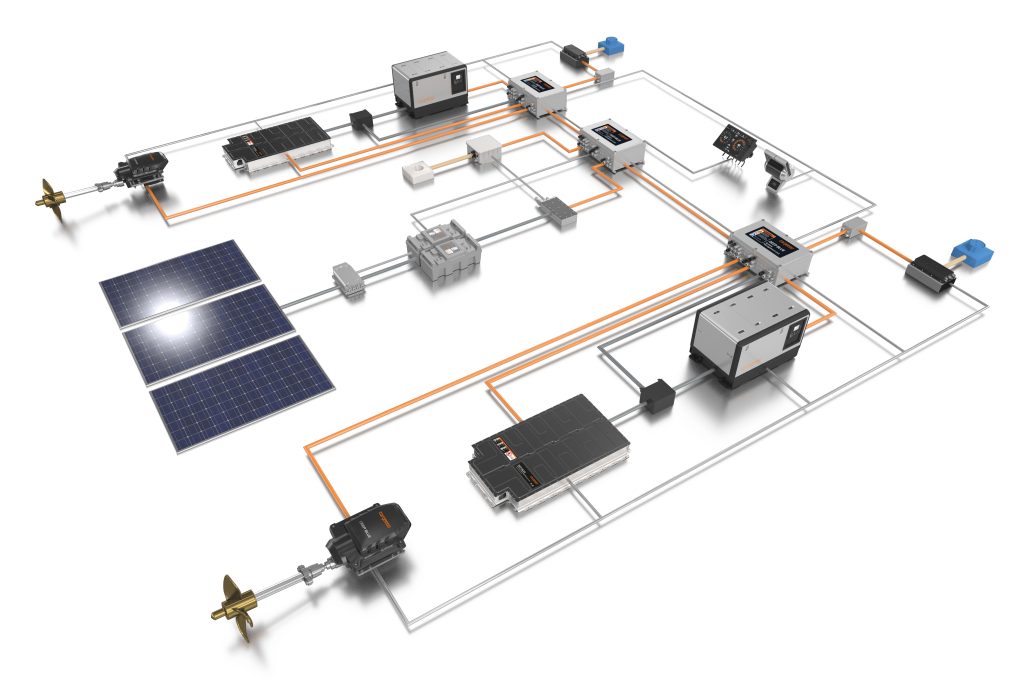
Key features of marine hybrids
- Parallel and serial hybrid options
- Integrated energy management systems
Marine hybrid manufacturers
Elco motor yachts.
Elco manufactures serial, parallel, as well as a combined serial-parallel system. Their systems can be used on sailboats, trawlers, yachts, and boats up to 85′ feet.
Hybrid Marine Ltd.
Hybrid Marine sells parallel hybrid systems in the 10 to 230 hp range. Beta, John Deere, and Yanmar’s hybrids all incorporate Hybrid Marine technology.
Finnish manufacturer, Oceanvolt , offers serial hybrid systems for both sailboats and powerboats.
Torqeedo makes hybrid systems for yachts up to 120 feet as well as powerful motorboats.
Electric pod drive and sail drive
Several manufacturers are now making electric pod and sail drives. These electric drive systems are more efficient and can save space onboard.
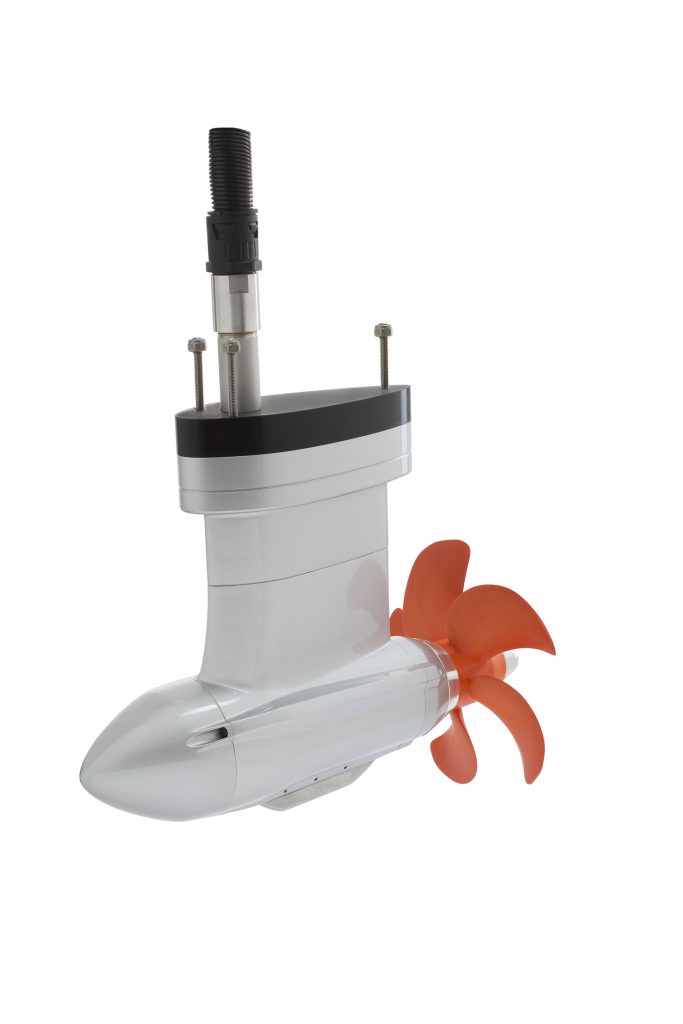
Electric pod and sail drive manufacturers
Electric Yacht produces a range of sail drives that can replace diesel engines up to 75 hp.
propulsion sells a 3 hp, 6 hp, and 9.9 hp fixed pod drive.
Oceanvolt’s sail drives range from 6 kW to 15 kW (8 to 20 hp)
Torqeedo sells a 40 hp and 80 hp equivalent electric sail drive as well as electric pod drives in the 6 to 25 hp range.
While it’s possible to power an electric motor with a conventional lead-acid battery, there are many good reasons to upgrade to lithium-ion batteries.
Their increased usable capacity is roughly double what you can get out similarly sized lead-acid battery. More battery capacity means more range—and hours of fun—on your electric boat.
They also charge more quickly and have a longer life span than lead-acid batteries. Unlike flooded lead-acid batteries, which need to be watered, lithium-ion batteries are practically maintenance-free.
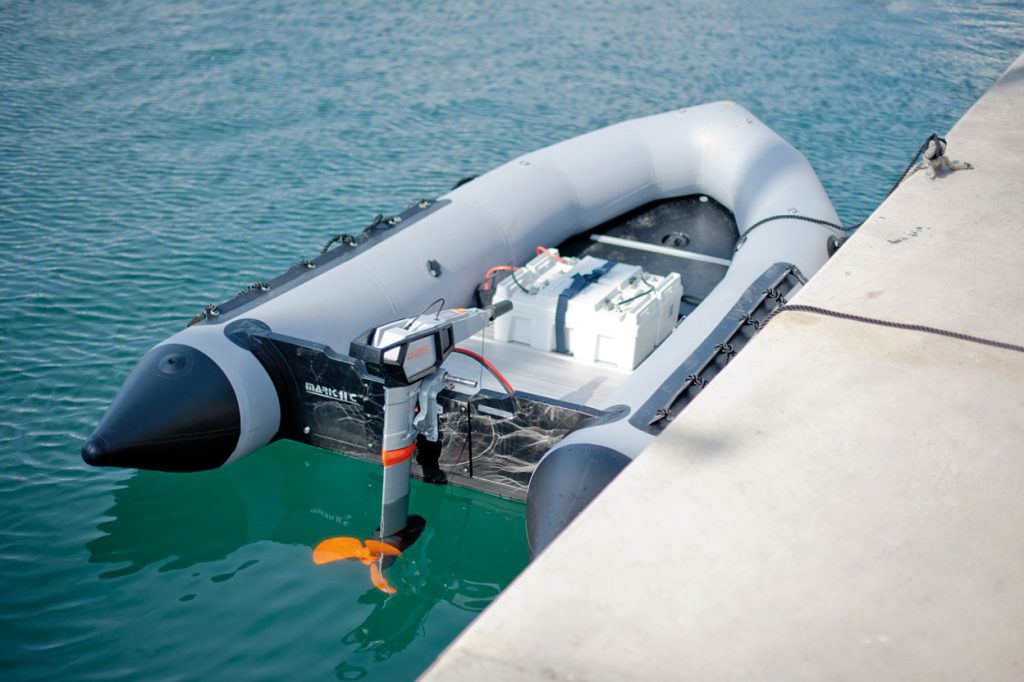
The downside is that lithium-ion batteries are far more temperature-sensitive and can’t be charged much above 113 F (45 C) or below 32 F (0 C).
They can also present major safety issues . Lithium-ion batteries can go into what’s known as thermal runaway—a self-heating process that can cause the battery to catch fire.
Simply put, lithium-ion batteries are NOT a drop-in substitute for lead-acid batteries. They need to be specially designed for the marine environment and paired with a robust battery management system.
Electric motor manufacturers often provide complete solutions (including motor, batteries, and battery management system). It’s a good idea to work with a manufacturer with extensive marine experience and an ABYC-certified technician on any installation.
The other catch is that lithium-ion batteries cost two to four times as much as lead-acid batteries. However, the increased capacity and longer life span may make lithium batteries a better value option over the long run.
Ready to catch the electric boating wave?
With ever more powerful and feature-packed electric options launching each year, it’s an exciting time to be in the market for a new motor or engine. If you have any doubts about whether an electric boat motor is right for you, head to your local boat show and see, first hand, what all the buzz is about.
Fiona McGlynn is an award-winning boating writer who created Waterborne as a place to learn about living aboard and traveling the world by sailboat. She has written for boating magazines including BoatUS, SAIL, Cruising World, and Good Old Boat. She’s also a contributing editor at Good Old Boat and BoatUS Magazine. In 2017, Fiona and her husband completed a 3-year, 13,000-mile voyage from Vancouver to Mexico to Australia on their 35-foot sailboat.
Douglas McQuilken
Sunday 30th of January 2022
Great article!
For those who wish to collaborate with prospective & current electric boaters, highly recommend this forum - https://groups.io/g/electricboats
Thanks for the suggestion, Douglas!
Terms and Conditions - Privacy Policy
- THE PRINCESS PASSPORT
- Email Newsletter
- Yacht Walkthroughs
- Destinations
- Electronics
- Best Marine Electronics & Technology
- Boating Safety
The All-Electric Yacht Evolution
- By David Schmidt
- January 13, 2022
The powerboat drivers idle near their starting lines off Monaco, waiting for the signal to punch the throttles. But they’re different from those who have raced here since 1904: These nine boats are competing in the Solar Class at the 2021 Monaco Energy Boat Challenge.
Every July, the Monaco Yacht Club organizes this race, which features next-generation technologies. This year, after five days of competition—including a 16-nautical-mile-lap race, slalom racing and a championship race—the Dutch-flagged Sunflare solar team claimed top honors in the sun-powered class.
Is their boat’s top speed of about 29 knots going to break any world speed records? No. But the Monaco Energy Boat Challenge is a harbinger of recreational boating’s not-so-distant future.
That future, of being carbon-free, has been a long time coming. German inventor Moritz von Jacobi created an early electric boat in 1839, a 24-footer that could carry 14 passengers at roughly 2.6 knots. In 1882, Anthony Reckenzaun, an Austria-born electrical engineer, built Electricity , a steel-hulled launch with onboard batteries that was considered one of the first “practical” electric vessels. Other innovations continued until circa 1910, when Ole Evinrude’s gasoline-fired outboards began their own revolution.
Now, a century later, electric yachts harness technologies such as solar panels, electric drivetrains, lightweight construction in carbon fiber, lithium-based batteries and, in some cases, hydrofoils. These boats’ performance, comfort and range can rival some traditionally powered yachts—and they are clean and quiet. Much like Teslas, they sometimes also come with memorable acceleration curves.
Contemporary electric boats range in size and complexity. There are displacement monohulls such as Zin Boat’s 20-foot Z2T and Z2R and X Shore’s 26-foot Eelex 8000. There are hydrofoilers such as the upcoming Navier 27 (see sidebar). There are also boats like those contesting the Monaco Energy Boat Challenge, as well as bluewater cruisers with multiple hulls.
“The first advantage is space,” says Michael Köhler, CEO of Silent-Yachts . “Catamarans have more surface area, which benefits the number of solar panels that can be installed.”
Other advantages of multiple hulls in electric-boat design include increased form stability (no ballasted keels) and reduced drag. “This low resistance means they’re better suited for electric motoring, as they need a lot less energy to move than monohulls,” says Nicolas Lapp, Sunreef Yachts’ strategy consultant for research and development.
One key to reducing a yacht’s energy requirements involves reducing its displacement. “The lighter the yacht, the less energy is needed to move it,” Köhler says. “For this reason, our yachts are made of lightweight carbon fiber.”
While all of the yachts discussed in this article can be charged via shore-supplied AC power, cruisers typically want greater autonomy. To that end, Silent-Yachts and Sunreef Yachts use solar panels. The team at Silent-Yachts specs its panels from California-based SunPower, while Sunreef Yachts created the marine industry’s first flexible solar panels, which are flush-mounted on hulls, masts and superstructures.
Aesthetics matter in yachting, and not everyone wants to cruise aboard a solar farm. Here, Lapp sees an opportunity. “If you want sustainability to be cool and attract the attention of new generations, the appeal of the product is something you cannot neglect,” he says. “Seamless integration of the solar panels was a way for us to prove that sustainability [can] generate green power [and] cool looks.” (After all, no one buys a Tesla because it looks like a Chevy.)
While the Caribbean and Mediterranean are blessed with abundant lumens, other world-class cruising grounds—say, the Pacific Northwest—aren’t equally illuminated. Because of this, electric cruising yachts typically also include redundant systems to ensure that the navigation lights stay on without heading to a marina.
“Every Silent yacht is equipped with a backup generator,” Köhler says. “This makes sure you never run out of energy, even when facing longer periods of unfavorable weather conditions.”
Rainy-day alternatives can include other green-power solutions. Sunreef Yachts typically specs dual wind generators atop its yachts’ rooftops. However, Lapp is realistic about their capabilities.
“Wind turbines can only supply a small fraction of the energy that our solar panels can,” he says, explaining that, in the right conditions, Sunreef’s panels typically generate 40 times more juice than the turbines. “What’s nice about working with wind is that your generators work all the time.” That includes under navigation, at the dock and throughout the night.
Energy sources aside, these experts say that high-quality batteries offering high performance are critical. Larger-capacity battery banks ensure more power reserves, but adding them can affect a yacht’s performance.
“The weight of the battery banks is also an important factor, as it can reduce or increase the overall efficiency,” Köhler says.
Battery performance is also critical for electric-powered coastal craft. One example is X Shore’s Eelex 8000, which has a high-performance 225 kW electric motor and dual 63 kWh lithium-ion batteries that can be charged anywhere there’s a power socket, or supercharged using the same technology as electric cars.
“The batteries can be charged in five to eight hours with three-phase power plugs and one to two hours with superchargers,” says Elias Wästberg, X Shore’s project manager.
While superchargers don’t exist in the middle of oceans, builders of electric-powered bluewater boats have already done this math. Silent-Yachts says its power catamarans are built to offer transatlantic autonomy, but a lot depends on how the owner uses the boat to minimize energy consumption.
“During sunny conditions, a general rule of thumb is that cruising at 6 knots maintains a balance between consumption and production,” Köhler says. “This basically means unlimited range. …The main thing that owners can do to increase range is reduce speed and turn off any appliances.”
This begs the question: Do owners need to downshift their expectations for onboard comfort when going electric?
“There’s no need to make any sacrifices or closely monitor energy levels,” Lapp says. “A lot of energy saving is done automatically. For example, at night, the air-conditioning system focuses solely on selected areas and cabins. … It consumes 70 percent less energy than most systems.”
And should the battery banks get thirsty, there’s always the generator.
Cruising with zero emissions might be a selling point for some customers, but one need not squeeze trees to embrace yachting’s future. “Running costs and maintenance levels are much lower compared to regular-motor catamarans,” Köhler says.
Then, there are unquantifiable returns. “You get to enjoy the absolute luxury of cruising in total silence and without disturbing the marine life around you,” Lapp says, adding that this experience helps owners create “better connections with the environment.”
Finally, there can also be the grin factor. “The Eelex 8000 can accelerate from 0 to 20 knots in 4.2 seconds,” Wästberg says. “The software captures 150 data points every second, allowing for real-time analytics of battery and engine performance, including temperature, humidity, pressure, location and the craft’s system status.”
While electric yachts boast some impressive capabilities, free lunches are unicorns. Electric yachts don’t emit carbon dioxide, but their carbon footprint likely deepens with stem-to-stern life-cycle assessments of their photovoltaic panels, carbon-fiber hulls and lithium-based batteries. Then there’s the inconvenient financial truth that all batteries have a finite number of charge cycles and eventually need refitting. Also, for now, diesel mechanics greatly outnumber certified electric-boat technicians, especially in remote locales.
Still, few people gifted with foresight would have bet against Evinrude’s outboards in the early 20th century. The same holds true for today’s electric boats. One only has to look at the Monaco Energy Boat Challenge to realize that some of the brightest minds in the marine and technology fields are committed to a carbon-free future.
Couple this trend with the fact that electric yachts are already providing better performance and compromise-free cruising, and yachting’s future is looking bright (green).
Navier Boats teamed up with Paul Bieker, an America’s Cup-winning naval architect and hydrofoil expert, to create the Navier 27. It delivers 30-plus-knot top speeds or a 75-nautical-mile range at slower speeds. While impressive, hydrofoils require active control, which is a crux that Navier solved by creating an autonomous foil-control system.
Sunreef 100 Eco
It’s one thing to build a solar-powered vessel for the Monaco Energy Boat Challenge; it’s a different challenge to build an electric 100-footer that can accommodate 12 guests and five crewmembers. The Sunreef 100 Eco’s flexible solar panels mean this cat can accommodate 2,610 square feet of solar-farm space and generate up to 46 kilowatts per hour of DC power, which should keep its high-performance lithium-ion batteries topped off.
Hands on the Helm
While the Navier 27 will initially require human hands on its helm, down-the-road software releases are expected to enable autonomous driving.
Panel Planners
While photovoltaic panels can be fitted to any yacht, catamarans present themselves as an ideal platform, given their beam and broader coach-roof space.
- More: Electric , Electric Boats , Electric Motors , Electric Yachts , Silent-Yachts , Sunreef Yachts , Yachts , Zin Boats
- More Yachts
Tankoa Introduces 230-Foot Milano
New flagship for bering yachts: the b165, power catamaran popularity rising, “energy observer” zero-emission boat showcases sustainability, for sale: ocean alexander 74, for sale: 127-foot burger motoryacht, new to the yacht charter fleet.
- Digital Edition
- Customer Service
- Privacy Policy
- Email Newsletters
- Cruising World
- Sailing World
- Salt Water Sportsman
- Sport Fishing
- Wakeboarding
The Pros, Cons, and Future of Electric Yachts and Sailboats
- By Sail Greener
- Last updated: April 27, 2022

Sail Greener is supported by our readers. When you buy through links on our site, we may earn an affiliate commission.
If you sail you likely spend considerable time—and money—cleaning, fixing, and worrying about your diesel or gas engine. When it comes to safety, your backup propulsion is as important as your sails. Can you rely on electric motors for safety? What are the pros and cons of buying an electric sailboat?
Diesel engines are reliable, but they pollute. Diesel (and gas) engines emit greenhouse gasses and exhaust that includes particulate matter and carcinogens that are a risk to human health.
Until recently, alternatives to marine diesel engines were limited. Boat owners could carry out their own repower projects or purchase expensive commercial electric motors. Storage capacity was a problem.
Fortunately, the winds are shifting and there are now numerous high quality and economically competitive alternatives to traditional marine engines. In this article we describe the pros and cons of purchasing a new motor or repowering an existing engine. We also describe the market for marine electric propulsion systems and identify leading boat builders, manufacturers, and installers.
Why do we need electric sailboats?
The climate is warming and we continue to pump greenhouse gasses into the atmosphere at a torrid pace. Transport emissions, including road, rail, air and marine transportation, account for nearly a quarter of global CO 2 emissions. 1 https://www.ipcc.ch/report/ar5/wg3/transport/ According to the United Nation’s International Maritime Organization , marine traffic accounts for nearly 3% of the world's CO 2 emissions.
While emissions from recreational boaters are less than those from shipping and fishing fleets, they are still considerable. According to an estimate from electricmotoryachts.com , if just 5% of the roughly 13 million registered boats in the United States today repowered with electric, boaters would eliminate an estimated 1 billion pounds of CO 2 emissions. Scaled across boaters around the world, the potential for boaters to meaningfully reduce greenhouse gas emissions is significant.
Exposure to diesel emissions also poses health risks. The smallest particulate matter can contribute to heart attacks, strokes, and lung disease. High exposure to small particulates can impair brain development in children. The International Agency for Research on Cancer , part of the World Health Organization (WHO), classifies diesel engine exhaust as carcinogenic to humans.
Is there a market for marine electric propulsion?
Global concern over climate is leading to a revolution in how we produce and use renewable energy. This is particularly true in the transportation sector. Sales of electric cars in 2019 increased 40%. In 2020, Tesla motors alone produced almost 500,000 new electric vehicles. This helped to propel Elon Musk to become the world’s wealthiest person. Electric vehicle penetration is still just about 3% but growing dramatically 2 https://www.mckinsey.com/industries/automotive-and-assembly/our-insights/mckinsey-electric-vehicle-index-europe-cushions-a-global-plunge-in-ev-sales# A key factor driving this growth, according to the European Patent Office (EPO) and the International Energy Agency, is innovation in rechargeable lithium-ion batteries and other storage technology. Batteries now account for nearly 90% of all patenting activity in the area of electricity storage. Between 2005 and 2018, patenting activity in batteries and related electricity storage technologies grew four times faster than the average of all technology fields. 3 https://www.iea.org/reports/innovation-in-batteries-and-electricity-storage
It is clear we are reaching a tipping point for electric automobiles and trucks 4 https://www.theguardian.com/environment/2021/jan/22/electric-vehicles-close-to-tipping-point-of-mass-adoption . Is the marine sector also experiencing an electric revolution?
The market for marine electric propulsion systems is lagging what is happening with cars and trucks. However, the potential for growth in this sector is extraordinary. In an article published in Yachting World, Christoph Ballin, CEO of electric motor manufacturer Torqueedo, estimated that only about 1.3% of marine propulsion systems are electric. 5 https://www.yachtingworld.com/features/future-yachting-smart-technology-126136 According to an article published in 2017 by IDTechEx there are over 100 manufacturers of electric boats and ships with an estimate of more than $20 billion in global sales by 2027 for non-military boats. According to the IDTechEx report, recreational boats are the largest—and fastest—growing electric marine market by sales.
The growth potential is enormous considering the size of the recreation economy. In the United States alone, in 2019 outdoor recreation generated US$ 788 billion dollars in output. 6 https://boatingindustry.com/news/2020/11/12/orr-provides-breakdown-of-latest-recreation-economy-data/ An estimated $37 billion of this came from retail sales of boats, engines, accessories and marine services. According to the U.S. Bureau of Economic Analysis (BEA) Outdoor Recreation Satellite Account (ORSA) data, Boating and fishing was the largest conventional activity for the nation as a whole, adding US$ 23.6 billion to the economy. This was the largest conventional activity in 30 states and the District of Columbia and the second largest activity in 11 states. 7 https://boatingindustry.com/news/2020/11/12/orr-provides-breakdown-of-latest-recreation-economy-data/
Pros and Cons of Electric Motors for Boats
What are the pros and cons of electric motors for sailing?
Pros of electric propulsion
- Less noise : Electric motors are quieter than diesel engines and nearly vibration free.
- Lower long-term cost : Motors last a long time and require no fuel. You need batteries and electricity, but the sun and wind can recharge your batteries. You won't need to constantly change engine fluids, filters, or worry about leaks or old tanks.
- Cleaner and healthier: You won't end up with an oily mess in the engine room and bilge
- No emissions, no exhaust : Passengers and crew won't be exposed to hazardous fumes and particulates. You won't be spewing out carbon pollution.
- Instant power: Electric motors can go from zero to full torque instantaneously. Motors do not need to wait for engines to warm up.
- Weight and storage : Electric propulsion systems are typically less heavy than equivalent diesel systems. OceanPlanetEnergy.com estimates that electric propulsion systems are typically 1/3 the weight of diesel systems. This depends, however, on the weight of your battery bank.
- Easier maintenance and lower costs: Electric motors are simpler and easier to maintain than diesel generators. OceanPlanetEnergy.com estimates that maintenance costs could be 1/20 of the maintenance costs of a diesel engine in the first decade, even less over time because of electric propulsion systems use far fewer moving parts.
- Increased reliability and safety : Fewer moving parts translates into fewer breakdown which means which means more safety.
- Regeneration: Batteries can be recharged while sailing using, solar, wind, and hydro generation systems. For example, at sailing speeds over 6 knots Oceanvolt systems are reportedly able to generate significant power for recharging the battery bank.
- Improved maneuverability: Electric motors have high torque at low RPM, which can make maneuvering in tight spaces like marinas more precise. Electric motors can switch from forward to backward instantaneously.
Cons of electric propulsion
- Range anxiety: Depending on your battery bank and ability to recharge, you may have less range with an electric motor compared to a diesel engine.
- Cost: Electric motors can be expensive relative to combustion engines, but costs are plummeting.
- Lack of familiarity : Sailors familiar with traditional engines may not feel prepared or comfortable to switch to a new form of power.
- Fires: There can be a small risk of fires from batterie with improper maintenance, but this is also true with internal combustion engines.
- Charging time: Recharging batteries can take time, but charging times are changing quickly. Tesla V3 Superchargers support peak rates of up to 250kW per car, which translates to about 75 miles of charge in 5 minutes for a Model 3 and charge at rates of up to 1,000 miles per hour 8 https://www.tesla.com/blog/introducing-v3-supercharging . In January 2021 the Israeli company StoreDot announced new “exreme-fast-charging” lithium-ion batteries that could charge a car battery capable of 100 miles of charge in 5 minutes. It will only be a matter of time before similar speed and capacity is available for boaters.
Industry Leaders
Who are industry leaders in the electric sailboat space?
Electric propulsion companies
Numerous companies produce electric and hybrid propulsion systems for the marine sector. Some of the best known and highest quality brands that provide electric propulsion systems for yachts and sailboats include:
- Elco Motor : Elco is one of the industry leaders in this field. The company has been around for more than 125 years and now produces a wide range of outboard and inboard electric and hybrid propulsion systems.
- OceanVolt : The Finnish company is one of the industry leaders in electric propulsion. The company produces a wide range of electric propulsion systems for monohulls and multihulls. The company has provided cutting-edge electric propulsion systems for Vendée Globe racers, including Alex Thompson’s Hugo Boss and Conrad Colman in 2017, and other racers like French Olympic sailor Damien Seguin.
- Torqeedo : When Torqeedo was founded in 2004, concepts like “clean tech” and “electromobility” were just a glimmer in Mother Earth’s eye. One of the pioneers in the modern marine electric propulsion sector, Torqeedo is now one of the market leaders. The company offers outboard and inboard electric motors and hybrid drive systems ranging from 0.5 km to 100 kw in addition to diverse accessories from lithium batteries and solar charging equipment to smartphone apps.
- Aquamot : This German company produces in-house electric propulsion systems for electric for boats and ships, including motors, batteries, and chargers.
- Kraeutler Elektromotoren produces a wide range of industrial, ship drive, and boat motors, including drive units for motor and sailing boats.
Electric sailboat manufacturers
Who builds sailboats with electric motors?
Electric propulsion is going mainstream. Dozens of boat builders are building electric-only boats (like SoelYachts.com and Silent-Yachts.com ). Some traditional yacht builders now offer electric propulsion options—and this will likely grow to include all major manufacturers in coming years. Examples of leading yacht manufacturers that include electric propulsion options include:
- Arcona Yachts : A leading builder of high quality yachts from Sweden, Arcona is starting to offer high quality zero-emission models, such as the Arcona 415 .
- Alva Yachts : The German luxury electric yacht brand has designed both mult-hull (non-sail) and monohul (sail) boats. The company’s 25-m Ocean Sail 82 was designed with a hybrid propulsion system and a high capacity battery bank.
- Baltic Yachts : The Finish producer of luxury yachts and a world leaders in advanced composite yacht building in 2020 selected Oceanvolt for the company’s 68-foot Café Racer manufactured in Finland. The Javier Jaudenes designed boat is just over 20 meters long and 5.5 meters wide.
- In 2001 Elan Yachts and Oceanvolt agreed to partner to build a full range of electric-powered yachts ranging from the luxurious GT6 to the the sporty E-Line performance cruisers.
- Hanse Yachts : The world’s third largest boat builder, Hanse produces the Hanse 315, which includes an electric rudder-drive option.
- Salona Yachts : A Croatian boatbuilder, Salona builds the Salona 46, a fast, comfortable, and luxurious electric yacht and winner of the Best Green Boat Award at the Newport International Boat Show .
- Sunreef Yachts Eco : A manufacturer of luxury bespoke multihulls, Sunreef Yachts Eco catamarans are equipped with composite-integrated solar panel systems and lightweight batteries for energy efficiency and environmentally-conscious luxury cruising.
- Wally : The Dutch yacht builder produces, among its many other models, the 11.35 meter Wallynano MKII, which relies on an OceanVolt electric propulsion system
- Zen Yachts : A new company established in 2021, Zen builds what it claims is the world's first series production catamaran equipped with a wingsail.
Electric conversion companies
Who can help me convert my sailboat to electric propulsion?
A growing number of companies are dedicated to helping boat builders and individuals convert their yachts. These companies may provide design and support options for advanced battery systems, solar and wind systems, hydrogenation, and overall system design. Some of these companies produce their own electric motors and systems. Leading companies in the field include:
- OceanPlanet Energy : This company includes some of the giants of the industry. Bruce Schwab was the first American to officially finish the Vendee Globe. Nigel Calder is one of the best known sailing technology writers, including his must-read classic, Boatowner’s Mechanical and Electrical Manual. The company provides energy storage, charging, and monitoring systems; system design and consulting.
- Electric Yacht : The Minnesota, USA-based company with the eponymous name supports sailors interested in electric propulsion systems. The company helps boaters design and size system and provides motor kits, batteries, chargers, and other components. The company provides examples of conversion projects on its website.
- e Marine Systems specializes in distributing solar panels, wind generators, electric propulsion drives, inverters, and energy storage systems. The company is located in Fort Lauderdale, Florida, USA.
- Naval DC produces both “pure” solar and hybrid electric systems ranging from 10 kW to 1 MW. The company provides lithium battery solutions, data and monitoring systems, electric propulsion, and matched propeller systems.
Yacht dealers
A small but growing number of yacht dealers offer new and used electric boats. Green Yacht Sales is an example of a small company that supports the sale of electric yachts and systems from diverse manufacturers.
Global clearinghouses, like YachtWorld and Boat Trader , now provide options to filter searches for electric propulsion sailboats.
Battery technology and companies
Until recently, the amount of energy batteries could store was limited. The cost of buying a new battery bank was prohibitive for most sailors. Today, however, costs are dropping and batteries provide more charge. Range anxiety remains one of the biggest reasons sailors don’t want to swap out polluting diesel engines for quieter and cleaner all-electric systems. However, this concern will soon be obsolete.
There are many high quality marine battery suppliers. Some of the major players in the LiPO market include:
- ChargeEx Lithium Ion Batteries
- Dakota Lithium
- Dragonfly Energy
- Victron Energy
Successful Examples
Okay, this all sounds good in theory, but is it really possible to throw out your old engine and install a new motor? Here are a few examples of individuals and companies making the switch to electric yachts.
As with many disruptive technologies, it is easier for wealthy individuals to pay more—often much more—for tomorrow’s technology today. That said, these Super Early Adopters are a harbinger of things to come. These individuals may be risk takers but they are also typically really smart and forward-thinking.
Swedish billionaire Niklas Zennstrom is one example of a pioneering “mogul” in the electric yacht world. The founder of Skype and former Time Magazine 100 Most Influential People awardee, in 2018 Zennstrom’s team launched Rán VII. Yachtingworld described the boat as “…so angular it calls to mind Darth Vader or a Stealth bomber.”
Zennstrom shared his views on the future of electric racing in a CNN article in 2018:
“Having gone through the design, build and initial test cycle there is no doubt to me that the future for racing yachts is electric propulsion. It's lighter, less drag, quieter, and most importantly it is environmentally friendly.”
Do-it-yourselfers have been converting electric sailboats for years. The mainstream boating magazines and the media are increasingly showcasing the stories of these sailors retrofitting their boats. A few examples of well-publicized electric yacht conversion stories include:
- In 2019 Yachting World wrote an article, “How hybrid sailing yachts finally became a feasible option.”
- Dufour 382: According to an article in Yachting World , the owners Alcyone , a Dufour built in 2016, was retrofitted with an Oceanvolt SD15 saildrive moto r.
The future of electric sailboats
We are facing a climate emergency and the world is mobilizing to reduce emissions of greenhouse gasses. A growing number of boat builders, engine and battery producers, service companies, and individuals are addressing this need by building and retrofitting emission-free sailboats. We are still in the early stages of this transformation, but change is coming quickly.
Some of the major challenges—and opportunities—for catalyzing this transition in coming years include:
- Battery storage, charging, and cost: The pace of technology change in the battery sector is dizzying. The amount of charge, the time to charge, and the price per kilowatt of battery storage systems are all improving. Superchargers are already widespread on land. How long will it take for marine supercharging stations to fill the world’s marinas?
- Overcoming tradition : Sailors who have used the same technology for decades may hesitate to switch to new technology. Sailors used to heavy yachts and small batteries may look with skepticism on this new technology. Range anxiety is very real in the middle of the ocean.
- Cost : As with any new technology, early adopters may have to pay more. The cost of electric propulsion, solar and wind power, and battery storage are dropping quickly. Cost will soon be less of a concern and may become a clear benefit.
- Retrofits: Many boats still sailing form 1960s and 1970s so 50 years of old boats locked in. But this is also an opportunity for individuals and companies who are willing and able to take this space
- Manufacturing: making boats expensive and companies may not want to take risks. But new companies are emerging, and the major yacht companies now coming out with electric options (examples).
We are at the dawn of a new age of sailing. With each passing month electric propulsion technology is improving. Motors are getting better, batteries and solar panels are getting cheaper, and electric sailboats are starting to become mainstream.
Finding more information
If you want to learn more about healthy products, check out The Sail Greener Guide to Healthy Sailing . If you want to learn more about who is working to conserve the ocean, see our list of The Best Ocean Conservation Organizations for Sailors .
- Sail Greener
- Originally Published: February 26, 2022
Table of Contents
- climate , diesel engine , electric motor , environment , sailboat , yacht
Like this post? Share with friends and colleagues!
Related articles.

Climate Change and the Future of Sailing
Earth’s climate and oceans are changing. What does human-induced climate change mean for the future of sailing?

Green Boat Shows 2022
What major international boat shows promote green events or themes? Check out our calendar of 2022 International Boat Shows to find out!

Quiz #1: Ultimate Sailing Logo Quiz
Sail Greener Quiz #1: Ultimate Sailing Logo Quiz

Electric Yachts for 2022
A growing number of boat builders are joining the electric yacht revolution. What are some of the best eco-friendly sailboats and catamarans for 2022?

Best Yacht Charter and Boat Share Companies for Sustainable Sailing
Looking for the best yacht charter, boat share, or boat rental company that has eco options? What is the size and growth potential of the green yacht charter market? Check out the latest on eco yacht charters.

The Sail Greener Guide to Toxic Products and Health
Hazardous chemicals and compounds are used to build and maintain sailboats. Learn how you can use non-toxic alternatives to reduce your exposure to toxic substances and risks to your health and the health of the environment.

The Best Ocean Conservation Organizations for 2022
Are you concerned about the the world’s oceans and want to help? Check out the Sail Greener guide to the world’s best ocean conservations organizations!
Recent News: Boats and Gear

Orcas attack The Ocean Race
(June 22, 2023; Day 8) – As the final leg of The Ocean Race passed along the western shore of Europe before turning in to

This Sleek 80-Foot Electric Catamaran Uses Solar Power to Cruise With Infinite Range
The zero-emissions multihull sports an innovative solar skin that continuously generates power at sea….click HERE to read the rest of the article from the ORIGINAL

Exhibitors and Events at Electric Boat Show Milan 2023
The second Electric Boat Show is taking place at the Idroscalo in Milan this weekend and has a wide range of electric boat exhibitors and

Historic sailing ship starts first cargo service across Europe
De Tukker, the first ship operated by Dutch sustainable shipping company Ecoclipper, has set sail on the firm’s maiden voyage — 111 years after it

Francis Joyon “The great way to limit your carbon footprint is to have a very small budget”
On the occasion of Francis Joyon’s stopover in the city of Marseille, we went to meet him to discuss The Arch project and his vision

An art contest to invent the sailing ship of the future
The association Windship launches a contest for children to imagine the sailing ship of the future. A great opportunity for sailors, artists and inventors to
World tour for model boat inspiring citizen science against environmental pollution
A model sailing boat which represents a key part of a project working to banish single use plastics has embarked on a global tour that
Torqeedo more than doubles warranty to 5 years on Travel electric outboards
Torqeedo announced today that it is introducing a new, industry-leading warranty that more than doubles the existing warranty from two (2) to five (5) years

Solar panel: how to choose the right one for your boat?
More and more harbors are forbidding the use of electricity when you are not on board, for reasons of economy, ecology and safety. So how

Life in ocean’s twilight zone ‘could disappear’ amid warming seas
Less food is falling to dimly lit waters, home to specially adapted marine life – but emissions cuts would stem decline Life in the ocean’s

Oceanvolt Servoprop, now available for large boats
Distributed by e-Nav Systems, the Oceanvolt electric motorization solutions are completed with a complete propulsion system available for sailboats up to 70 feet or 25

Spirit Yachts goes all-electric for Southampton Boat Show
Yacht designer and builder Spirit Yachts will be displaying two electric drive sailing yachts at this year’s Southampton International Boat Show from 16-25 September 2022.
More News...
An updating news feed on the latest about sustainable sailing. Check out the following topics: - Boats and Gear News - Products and Apparel News - Oceans and Environment News - Charter and Travel News CHECK THE LATEST NEWS...
Looking for book recommendations for maintaining your boat, ocean science and conservation, adventure, and other good reads? BROWSE BOOKS...
Current Weather!
Need to high quality weather data for wind, sun, tide, and more? Check out the latest with our detailed global weather map VIEW CURRENT WEATHER!...
So many videos, so little time. We do the work to put useful green sailing videos in one location. CHECK OUT THE VIDEOS...
More Resources
A curated list of helpful web pages and links to keep you learning about Sailing Greener.
Sign up for FREE email updates
Boats & gear news, products & apparel news, from seahorse earrings to jellyfish brooches: this ocean-inspired high jewelry is swimming in style, bendy solar panels are just as good as regular ones, societal cost of ‘forever chemicals’ about $17.5tn across global economy – report, seajet, a range of antifouling products for a cleaner and more eco-responsible hull, first sustainable and recyclable optimist launched, charter & travel news, hawaii fires: a visual guide to the explosive blaze that razed lahaina, ‘huge’ coral bleaching unfolding across central america prompts fears of global tragedy, biden administration’s gulf of mexico offshore wind sale on the horizon, clean me a river: southeast asia chokes on mekong plastic pollution, florida rocked by home insurance crisis: ‘i may have to sell up and move’, archipelago, a finnish haven of peace and nature in the baltic sea, oceans & environment news, noaa confirms june was earth’s hottest on record, much of greenland’s ice could melt even if world doesn’t get warmer, deep-sea mining spurs fish to vacate mining sites, study finds, protecting marine life also helps people nearby, study says, norway moves to open its waters to deep-sea mining, un adopts historic high seas treaty.
⋅ Privacy Policy
⋅ Terms and Conditions
⋅ Disclaimer
Signup for free updates!
Get notified about new articles
By clicking the button you agree to the Privacy Policy and Terms and Conditions
Subscribe to the Sail Greener Newsletter
Get notified about new articles
Privacy Overview
Functional cookies help to perform certain functionalities like sharing the content of the website on social media platforms, collect feedbacks, and other third-party features.
Performance cookies are used to understand and analyze the key performance indexes of the website which helps in delivering a better user experience for the visitors.
Analytical cookies are used to understand how visitors interact with the website. These cookies help provide information on metrics the number of visitors, bounce rate, traffic source, etc.
Advertisement cookies are used to provide visitors with relevant ads and marketing campaigns. These cookies track visitors across websites and collect information to provide customized ads.
Other uncategorized cookies are those that are being analyzed and have not been classified into a category as yet.
- 2024 BOAT BUYERS GUIDE
- Email Newsletters
- Boat of the Year
- 2024 Freshwater Boat and Gear Buyers Guide
- 2024 Boat Buyers Guide
- 2024 Water Sports Boat Buyers Guide
- 2023 Pontoon Boat Buyers Guide
- Cruising Boats
- Pontoon Boats
- Fishing Boats
- Personal Watercraft
- Water Sports
- Boat Walkthroughs
- What To Look For
- Best Marine Electronics & Technology
- Watersports Favorites Spring 2022
- Boating Lab
- Boating Safety

Four Electric Boat Motors Compared
- By Randy Vance
- Updated: September 17, 2020
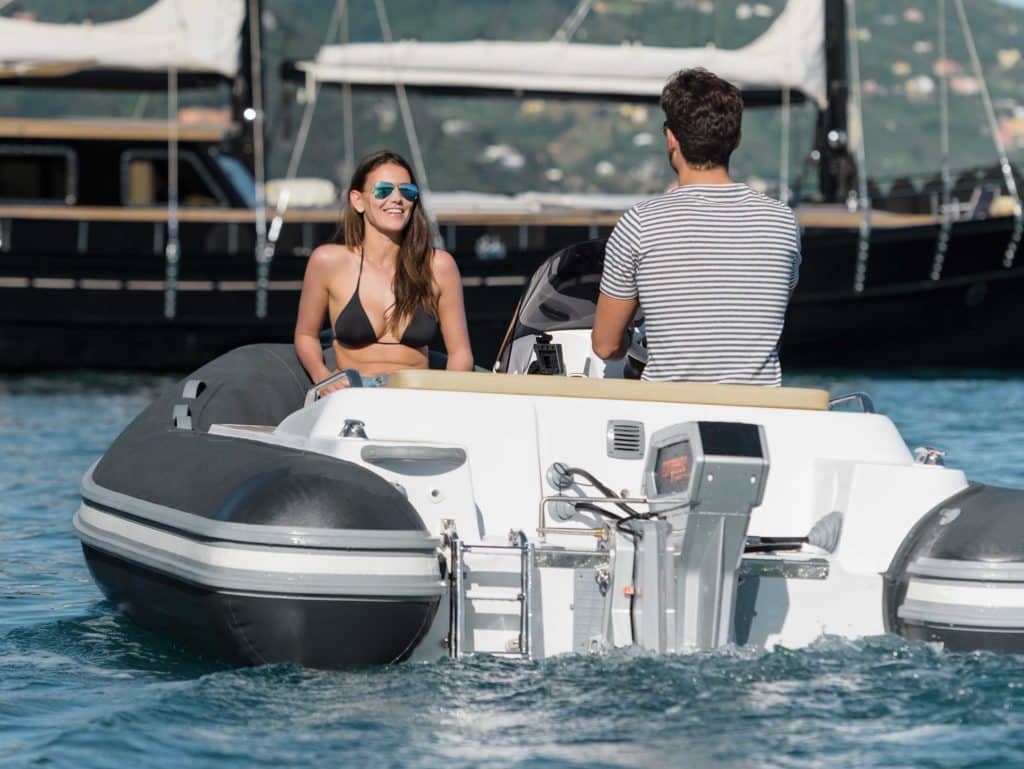
Electric marine propulsion is rapidly advancing in market share while providing a fun and unique boating experience not available from internal combustion power.
Electric Motors Then
You might be surprised to learn that electric boats have been around since 1838. Inventors from Prussia, England and America began making vessels with lead-acid batteries—tons of lead-acid batteries per vessel—to move passengers quietly and efficiently. But the internal combustion engines invented in the late 1800s were more powerful and convenient, and with the exception of Elco electric motors, electric power fell away in popularity. In 1934, Minn Kota manufactured the first electric outboard. Then, in the 1960s, bass tournament fishing popularized big-horsepower gas engines for speed, and electric trolling motors for precise boat handling. You might say the fishermen were ahead of the curve by about 60 years on hybrid boats.
Electric Motors Today
We are focusing on production models that can be easily installed by a do-it-yourselfer or OEM without special training. Lithium-ion batteries can be volatile if not properly installed, so some companies require their trained tech to do that.
Electric outboards are expensive, and while we’ve listed the purchase cost, the batteries available are too numerous to name or price, and can cost more than the motor.
A mathematic equation easily converts kilowatt-hours to horsepower, and our math revealed the calculated horsepower to be considerably less than the equivelant horsepower suggested by manufacturers.
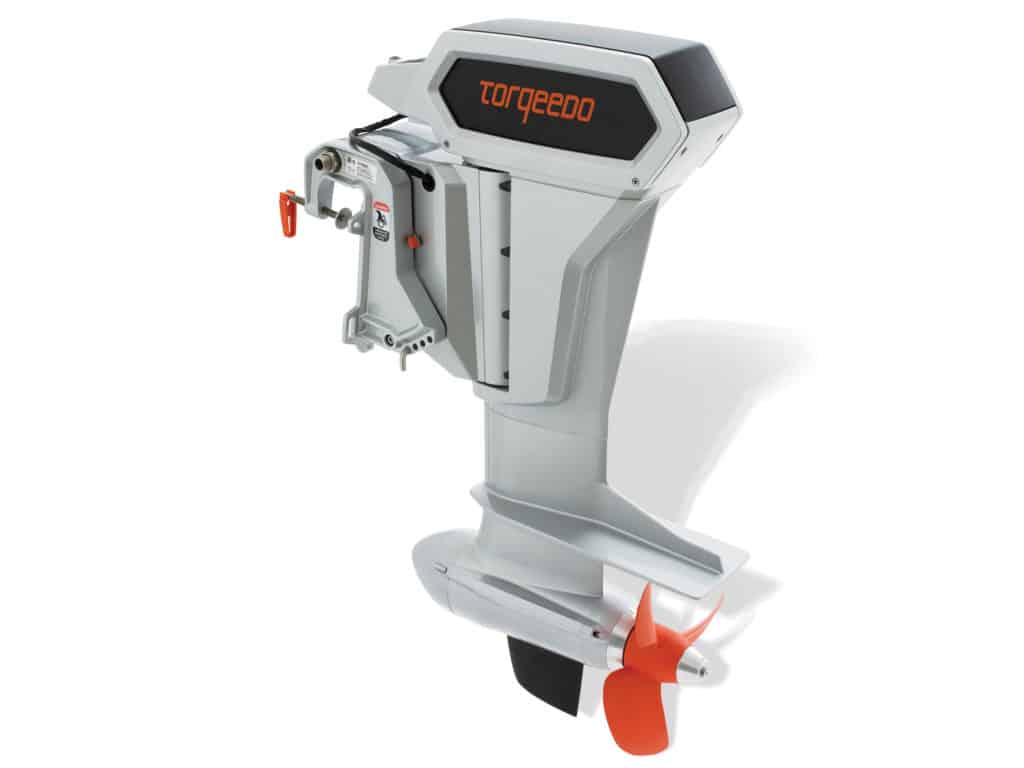
Torqeedo provides completely integrated motor, battery and controls. Electronically controlled systems give its motors greater range per battery capacity and, similar to a fuel gauge, help operators conserve energy when needed or tell them when they can splurge on maximum throttle. The batteries are provided by BMW, but it is Torqeedo’s control system that manages output, heat and recharge operations to protect and optimize battery capacity and motor performance.
Range of Power: Outboards from Ultralight 403 at 400 W (about 1 hp) to Deep Blue at 50 kW (about 80 hp equivalent with 20 percent hole-shot boost), and inboards up to 100 kW (about 135 hp).
Most Popular Motor: Torqeedo’s Cruise 10 ($8,999) puts out 10 kW, or about 14 hp, but performs comparably to a 20 hp outboard thanks to Torqeedo’s software. In remote control, it is popular among pontoon boaters in particular, and commonly installed on pontoons used on neighborhood lakes requiring electric propulsion. Through digital controls, peak output is boosted beyond nominal output for a short time to improve acceleration at the hole shot, then returns to nominal output for optimal heat, range and speed control. A side- or top-mount controller—akin to the throttle—will cost $1,399, by the way.
Best Battery: The Torqeedo 48-5000 (5,000 Wh) lithium-ion battery ($5,159) is rated IP67 waterproof; connecting two or more in parallel extends the range.
Battery Compatibility: Compatible with any lithium-ion or AGM battery bank providing 48 volts, the Torqeedo can only operate in smart mode, measuring discharge, heat and other factors to dynamically manage power with Torqeedo batteries. With nonproprietary battery banks, Torqeedo motors mathematically, and less accurately, estimate range and consumption.
Chargers: The 2213 charger ($899) can recharge a 48-5000 battery in under 10 hours. It is rated IP65 water-resistant. The 2212-10 charger ($2,199) can recharge it in two hours.
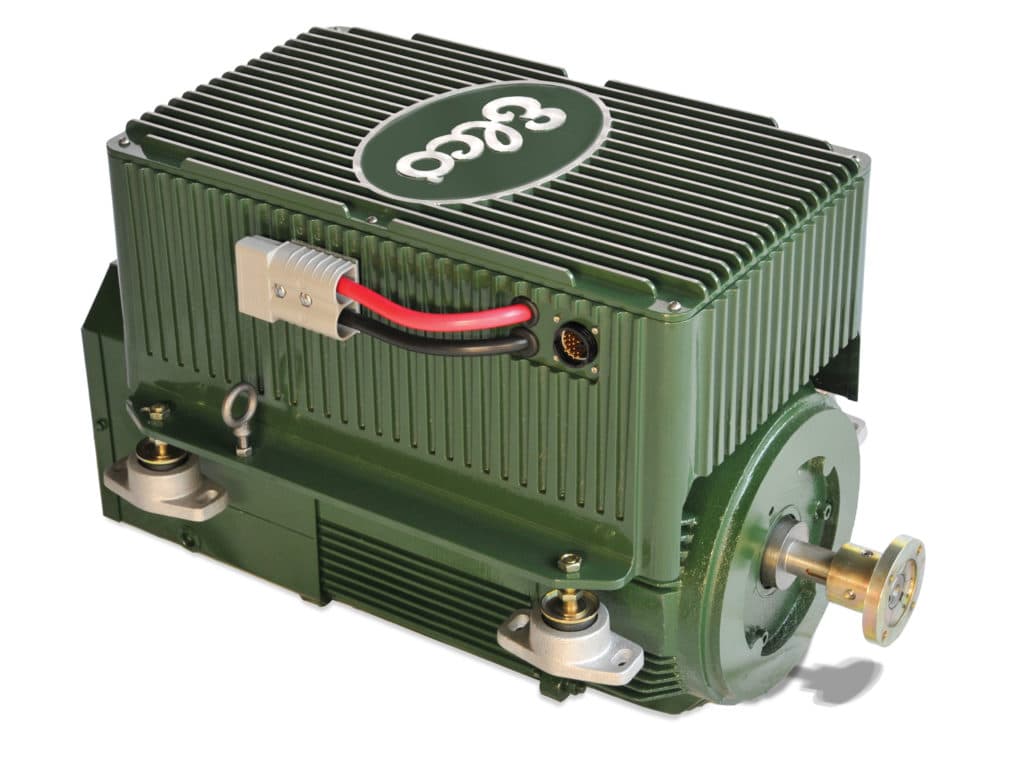
Elco Motors
Elco has been building electric outboards for over 100 years—a figure that seems implausible to boaters who are beginning to see electric propulsion for the first time. The company’s engineering philosophy has remained the same: build plug-and-play systems, relying on battery power preferred by the customer, and design its motors to fit existing motor mounts, or provide standard transom clamps to make repowering simple and seamless.
Range of Power: Elco builds electric outboards with tiller or remote controls from 3.7 kW (about 5 hp) to 37 kW (about 50 hp). Elco’s inboards range from EP 6 to EP 100, with horsepower equivalents from 6 to 100.
Most Popular Motor: The EP 70 inboard ($15,995) can replace inboard diesel kickers and trawler motors, providing a top speed of 8 to 10 mph (7 to 8.5 knots) and a range of 23 to 41 miles. Its peak output is 51.5 kW (about 69 hp), and continuous output is 29.75 kW (about 40 hp). It needs nine 8-D 12-volt AGM batteries for a total of 108 volts. Lithium-ion batteries are also compatible in comparable volts and amps.
Best Battery: Battery banks from Lithionics are most commonly selected for new builds, and an EP-12 Victron AGM Deep Cycle 12V/220Ah bank is ideal ($5,409).
Battery Compatibility: Elco batteries are completely brand agnostic and connect with any quality battery bank providing the motor’s power demand. However, lithium-ion batteries still provide the most efficiency, along with full power to complete discharge. Even though their upfront investment is often more than double that of AGM batteries, the cost per charge is comparable while also lightening the boat and bringing better performance and range.
Chargers: The ElCon UHF3300 (1x) charger (starting at $825) takes three to four hours to restore battery banks, and the PFC 5000 fast charger reduces the time to two to three hours.
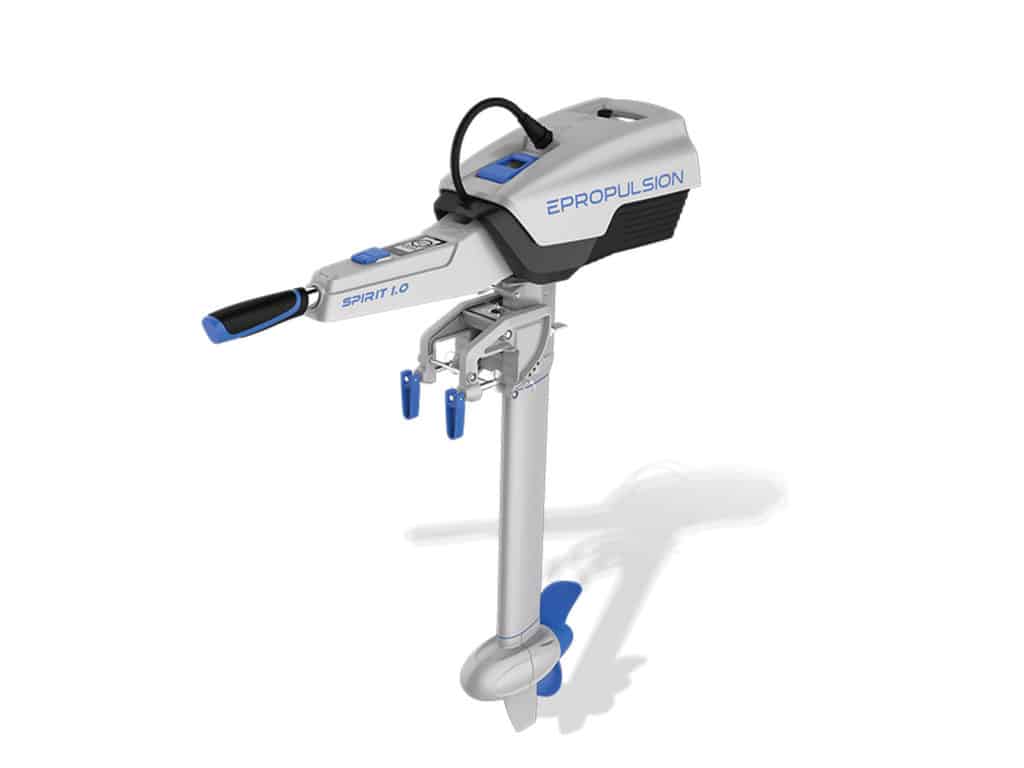
ePropulsion
This company boasts five electric propulsion systems engineered at the Hong Kong University of Science and Technology, and entered the market in 2013. HKUST is also known as the incubator of many electronic products, including the DJI drone. Persistent engineering has brought new innovations to the marketplace.
Range of Power: The smallest offering from ePropulsion is a strap-on stand-up-paddleboard motor. Mainstream power includes two large outboards boasting 1 kW (about 1.35 hp) and 3 kW (about 4 hp) power, two pod drives of the same output, and the most popular portable Spirit 1.0 Plus.
Most Popular Motor: The Spirit 1.0 Plus ($1,999 including charger) is ePropulsion’s top-selling motor, ideal for small vessels, square-stern canoes, tenders and more. It’s a 1 kW motor that the company says offers 3 hp equivalent power with an industry-first direct-drive brushless motor. That’s a quiet arrangement, making the motor lighter and more efficient. It’s got a 75-minute run time at full speed, making 22 miles on a quickly exchangeable, integrated and included floating battery. Take a spare battery ($899) for longer range.
The Navy 3.0, ePropulsion’s latest motor, is 3 kW, or about 4 hp, though ePropulsion claims 6 hp equivalence. It’s available in tiller-steered and remote-control models. Its direct-drive, no-gear-case motor was a breakthrough in electric outboards, using a brushless motor that produced less sound and drag, and increased power and efficiency, offering a more serene experience.
Best Battery: There are three E-Series 48-volt batteries offered: The E40 ($1,200) provides 2,048 Wh, the E80 ($2,000) provides 4,096 Wh, and the E175 ($4,000) offers 8,960 Wh. The data-cable connections in ePropulsion batteries give battery management, enhancing range and speed.
Read Next: ePropulsion Lithium Iron Batteries
Chargers: Chargers available from ePropulsion are 10-, 20- and 30-amp modes ranging from $300 to $620.
Read Next: Learn About Garmin and Lowrance Electric Motors
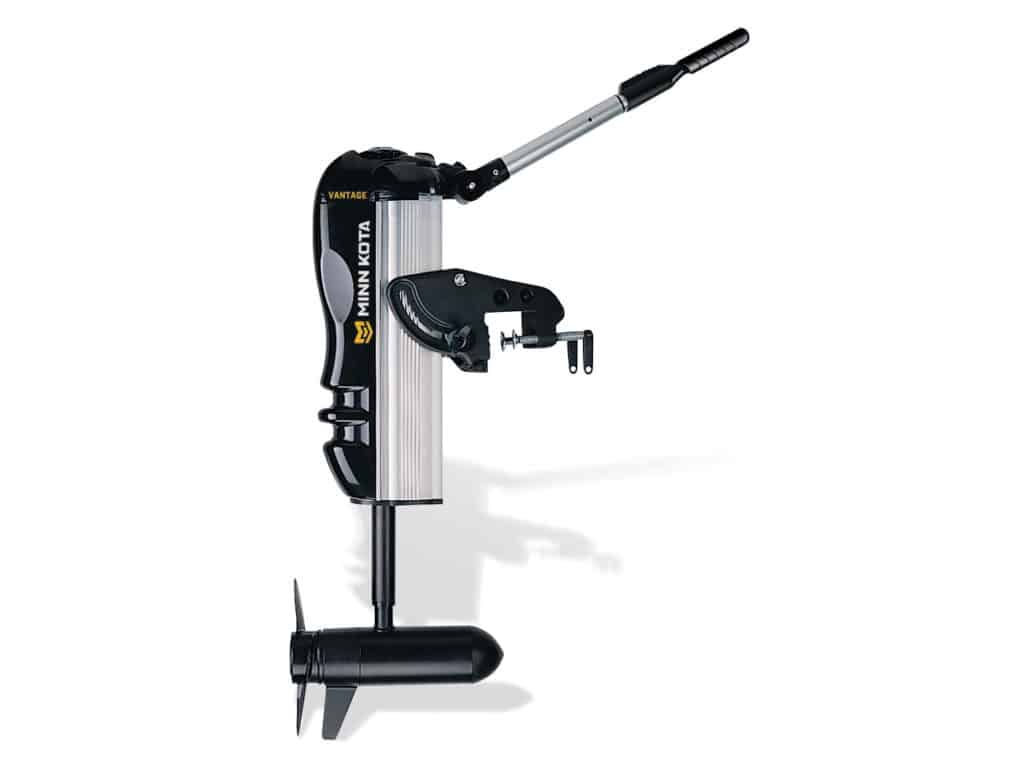
Minn Kota Motors
Minn Kota has been making electric outboard motors since 1934, and its first model was a gear-driven, transom-mounted motor with a tiller. As time progressed, it improved motors slowly until the tournament bass-fishing craze began in the early 1960s. In that time, the motors have been popular as primary propulsion for dinghies and utility boats used for tenders, or positioning the boat for casting.
Range of Power: Models today range from simple tiller- steered motors to digitally remote-controlled motors complete with autopilot features and smartphone compatibility. The Vantage is the company’s primary propulsion motor.
Most Popular Motor: The Vantage ($1,549.99) is not Minn Kota’s most popular motor, but it’s a top contender in the boat market where electric propulsion is desired or required. The tiller-steered Vantage is ideal for use as a kicker for trolling, or propulsion for a tender or small johnboat. The variable-speed motor is digitally controlled to manage and conserve power for optimum range. Forward, neutral, reverse, and power trim to raise it are easily accessible on the tiller of this 24-volt motor. For some reason, Minn Kota does not list specs such as amps, kilowatts or watt-hours.
Best Battery: Minn Kota doesn’t offer batteries, but the motor is compatible with any battery bank producing 48 volts.
Battery Compatibility: Lead-acid, wet-cell batteries are still the most commonly used for small electric motors, but AGM (absorbed glass mat) batteries are more durable, offer more charge cycles, and are quickly replacing wet-cell batteries. Lithium-ion batteries shave 75 percent of the weight of lead-acid batteries, deliver full power to total discharge, and are actually more economical per charge cycle in spite of a 100 percent premium over AGMs.
Chargers: An MK 345 PC Precision Charger ($449.99) provides three-bank charging at 15 amps per bank.
- More: Boats , elco , electric boats , Engines , epropulsion , minn kota , torqeedo
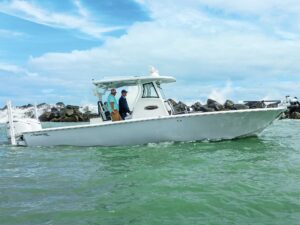
Boat Test: 2024 Tidewater 3100 Carolina Bay
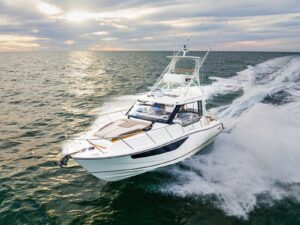
Boating On Board: Boston Whaler 365 Conquest
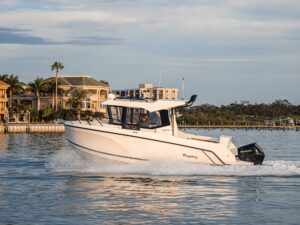
Boat Test: 2024 Bayliner Trophy T23 Pilothouse
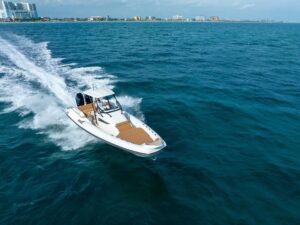
Boat Test: 2024 Nuova Jolly Prince 33 CC
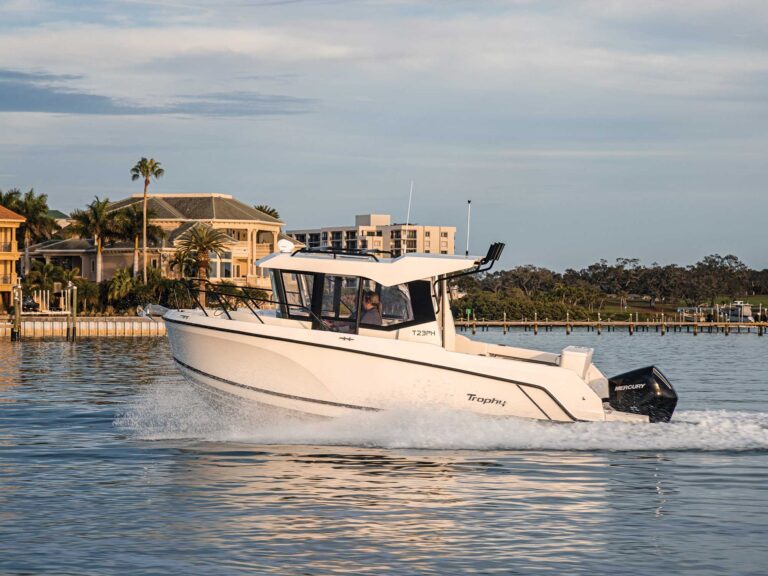
What to Do if Your Boat’s Engine Dies
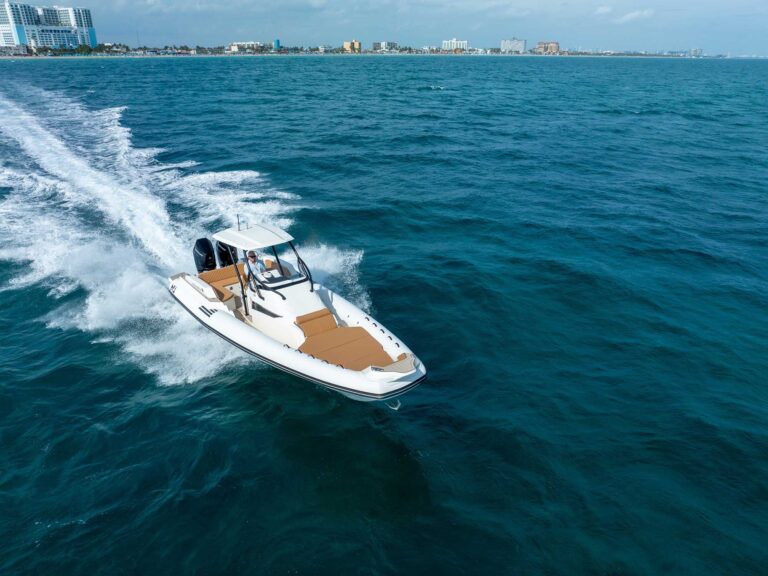
ProTournament Elite Gen 3 Chargers

- Digital Edition
- Customer Service
- Privacy Policy
- Cruising World
- Sailing World
- Salt Water Sportsman
- Sport Fishing
- Wakeboarding
Many products featured on this site were editorially chosen. Boating may receive financial compensation for products purchased through this site.
Copyright © 2024 Boating Firecrown . All rights reserved. Reproduction in whole or in part without permission is prohibited.

My Cruiser Life Magazine
Electric Boat Motor: The Right Way to Power Your Boat?
Electric-powered toys are everywhere. Lithium battery technology has come far enough that electric cars are just as functional as their internal combustion engine (ICE) counterparts. We have electric scooters, e-bikes, skateboards, electric aircraft , and now boats.
Electric boat engines can now be purchased at every West Marine store and local chandlery. These are great options for some tenders. Furthermore, yacht companies are developing new and unique ways to integrate hybrid and completely electric marine motor systems in their top-of-the-line yachts. And there are tons of enterprising voyagers out there who are converting old boats into revolutionary all-electric cruising vessels.
So what’s right for you, and what are the limits of this incredible technology? What of the diesel engine—the ever-present goblin of the cruising boat—are its days numbered? Here’s a look at what’s going on in the world of electric engines for boats.
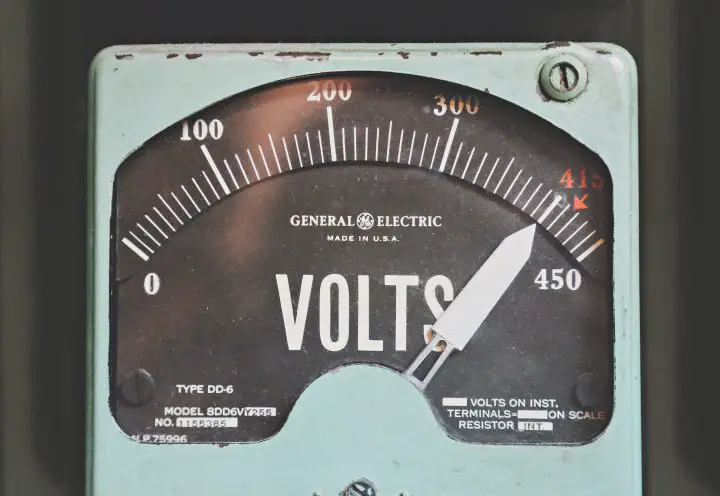
Why Get an Electric Boat Engine?
Electric engines are all about the amount and access to electricity you have. It takes an enormous amount of energy to get a boat moving. To get it moving fast, you need a colossal amount of energy. In other words, you need a big engine to move a boat and an even bigger one running at high power to move a boat quickly.
For over a century, the only thing with enough energy density to conveniently carry around this much power has been with fossil fuels. But advances in lithium batteries and other technologies now enable us to use electric motors to their full potential.
So, while there’s a lot of focus on the coolest new electric boat motors, the real focus should be on the battery tech. Having enough of these expensive batteries on board is the key to your potential to use electric motors successfully.
There are plenty of use cases where electric engines make a ton of sense, but also a few where the old ways may still be better.
Successful use of electric motors is all amount efficiency. An efficient hull, powered appropriately by the right size motor, can provide good range and cruise at comfortable hull speeds. This applies to any size vessel, from a small hard dinghy with a three-horsepower electric outboard to a displacement-hulled cruising boat with several hundred horsepower worth of electric motors installed. But, of course, as the boat and motor get bigger, so does the battery bank.
While you can put a small electric motor on an inflatable dinghy, the hull shape is much less efficient, so range and efficiency suffer. So too, is the case with putting electric motors on semi-displacement hulls. These boats were designed to use a lot of power and push water out of its way. So, no surprise, they require a lot of battery power. It’s generally cost-prohibitive to make this kind of boat electric.
Fast planing boats are a different matter. The amount of power it takes to get a boat up on plane is huge. The batteries to carry that huge amount of power are expensive and take up space—much more than a little fuel tank.
For a heavy displacement cruising boat (power or sail) that needs as much range as possible, a hybrid solution with a large onboard diesel generator, large battery bank, and electric propulsion may be the best. This could theoretically provide a range limited only by the amount of fuel the generator carries, making it equivalent to a traditional ICE cruising boat.
To whet your appetite for the future, here’s a look at the Torqeedo Deep Blue Hybrid system installed on one of the fastest catamarans , the Gunboat 60 Moonwave .
One use case where it’s hard to see an advantage is in very high-performance planing hull vessels. While you can make electric motors equivalent to any horsepower, you must carry the energy in batteries to feed them. This becomes something of a diminishing return, as the weight of sufficient battery capacity will limit the payload of the boat. Charging such a vessel would also require a colossal amount of infrastructure.
Advantages of Electric Boat Engines
- Zero emissions
- Very low maintenance — no carburetors, spark plugs, or oil changes
- Reliable and long-lasting
- Simple installation in most cases
- More efficient power production
- More instant torque than regular internal combustion engines
- Extremely well-suited for short-range, low-speed applications, i.e., sailboat auxiliaries, motor launches, or slow tenders
- Large battery banks can also provide power for air conditioning, cooking appliances, or water heating
Disadvantages of an Electric Boat Engine
- For longer range or high-speed operations, electric propulsion is usually coupled with a standard genset
- Limited by size, weight, and cost of batteries
- High power demands limit effective charging options—plug into shore power or run a generator.
- Large battery banks and limited shore-side infrastructure mean long recharge times.
- High initial cost for motors and batteries
- Rapidly developing, first-generation technology
- Usually requires high-voltage, direct current so that other onboard power consumers may need a separate electrical system or greater system complexity.
Electric Motor Dinghy Outboards
If you own a small boat or dinghy, it’s easy enough to strap an electric outboard motor on the back and call it good. These motors are widely available and have been so for well over a decade. They’re reliable, powerful, and small enough to recharge nearly any big boat.
The only negatives to this type of motor are that they are expensive and require some repower source.
View this post on Instagram A post shared by Torqeedo (@torqeedo_group)
We have an older Torqeedo outboard on our hard dinghy. It’s wickedly efficient. The 1,000-watt motor seldom gets used over 30 percent of its power, enough to push us along at hull speed (about 3.5 knots) for over 20 or 30 miles. Since we seldom motor for more than a few minutes to the beach and back, one charge lasts weeks. We plug in the battery to charge it when we’re motoring the big boat, so we don’t have to worry about extra solar capacity or running the generator to charge the outboard.
Compared to the many gas outboards we’ve owned, the Torqeedo is easily my all-time favorite. Never once have I yanked a pull cord only to be disappointed that it’s hard or impossible to start. Push the on button, twist the throttle, and you’re off. And never once have I frantically torn down the carburetor on the cockpit table, looking for some tiny spec clogging the jet—because it doesn’t have a carburetor. Oh, be still, my beating heart!
We tried the Torqeedo on our last RIB, which was a very nice 9-foot Zodiac with a lightweight aluminum hull. It weighed about 80 pounds, as does our hard dinghy. But the Zodiac took more power from the Torqeedo, so the battery life would be more of a problem. Where our hard dinghy uses 20 to 30 percent of power (350 watts max) to cruise at a comfortable speed, the Zodiac took 50 to 70 percent—more than double the power. Despite the difference in power, the speed difference wasn’t that much: Those 700 watts would push the Zodiac at about 4.5 knots.
View this post on Instagram A post shared by Lucy, Matt, Chelsea (@boatlifelarks)
The story’s moral is that if you have a slow dinghy and want to go electric, there’s only one reason not to—the cost. Our second-hand Torqeedo cost more than a brand-new gas outboard would have, but I think it was well worth it. A new one is more than double the cost of a gas engine. But next time, I wouldn’t hesitate to spend the money and buy new. It turned out to be worth it.
I also wouldn’t hesitate to go electric if you have a small daysailer or trailerable sailboat that you take out and mostly sail. The ePropulsion electric outboard motor even regenerates power from the spinning prop when under sail. For sub-30-foot outboard-powered sailboats, these engines make perfect sense.
For a planing dinghy, your options are much more limited, and you’ll have to do much more research. Ten to fifteen-horsepower electric outboards are out there, but they require large, separate battery banks. Beyond the cost difference with gas engines, you’ll have to have a good way to charge this battery bank. On a cruising power boat, that might not be a problem. Cruising sailboats might be able if they have a large diesel generator on board.
Gone with the Wynns recently reviewed a few electric options for their next dinghy, including an amazing jet drive from OC Tenders.
New Electric Marine Motor Manufacturers
Here are five electric outboard manufacturers you’ll want to check out if you think strapping one of these bad boys on your tender might work for you.
- Torqeedo —Electric outboard motor maker known for their highly portable dinghy engines. The company is one of the leaders in the market, with new inboard and high-performance engines powered by BMW battery packs.
- ePropulsion —Electric outboard boat motors, pod drives, and inboards. Even their smallest line of outboards have regenerative charging while under sail. Torqeedo’s biggest competitor.
- Mercury Avator —Brand new electric outboard option from Mercury Marine. The first and currently only model is 750 watts, but the design is unique.
- Elco —Long-time maker of electric outboards with up to 50 horsepower and even more powerful inboards.
- Temo —A French company with a completely different take. This 450-watt motor more closely resembles an oar. Extremely simple and perfect for small sailing dinghies.
- Pure Watercraft —A high-power, modular outboard for any boat that takes between 20 and 50 horsepower. Used on fishing boats, pontoon boats, large RIBs, and classic launches.
Bigger Boats and Electric Boat Engines
It’s one thing to convert to a slow dinghy, but many cruisers consider a large go-fast dinghy a requirement when traveling. However, getting one of those fully electric is challenging and expensive. So, it might be more interesting for many cruisers to talk about electrifying their big boat first.
In the case of sailing vessels, less has always been more. That is, the fewer power-hungry consumers you employ, the smaller the battery bank required and the longer you can live off-the-grid or under sail. A small solar or wind generator can extend your small battery bank even further. There are just a few normal considerations everyone has when living on a sailboat .
Motor yachts take a different course. Bring all the luxuries, and the boat will generate the power required. This requires onboard generators (gas or diesel) to supply air conditioning, heating, water heaters, or water makers—all running constantly. And since the genny is purring anyway, there is no need for renewables.
But a big group of people, especially liveaboards, long-distance cruisers who spend all their time on their boats in various locations, and those with a liveaboard catamaran , want the luxuries without running the generator constantly. Lithium house battery banks and more solar panels have made this possible. So as solar arrays and battery banks grow, it’s a natural progression to transition to include electric propulsion.
Electricity is a modern-day necessity, so having more of it is very handy. With power, you can cook, use the watermaker , heat or cool your home, and, if you have enough, replace your propulsion ICE with electric motors. You can recharge at the dock or use solar, wind, and hydro generators.
Converting an Old Boat to Electric
Getting to the future, where there’s hopefully a wide variety of completely electric-powered yachts on the market, has been a long time coming. Liveaboards, cruising boats, and yachts all have heavy electrical requirements. So improving the electric system on boats is something that cruisers have been doing for decades.
There are many ways to convert an existing boat to electric propulsion. One advantage of proceeding this way is that you can pick and choose your priorities and make a system that precisely meets your needs. Quite a few of the sailing YouTubers have gone this route, including Sailing Uma .
Here’s a look at one man’s completely custom catamaran conversion. He took a 44-foot charter catamaran and made it an all-electric trawler. With diesel gensets as backups, he has an unlimited range and plenty of backups.
A few companies specialize in electric motors for yachts or electric conversions. Here’s a handful.
- Electric Yacht —motors, batteries, and charging components for converting sailboats to custom electric systems
- Oceanvolt —maker of highly-regarded electric motors for sailboats, including ones with regenerative charging while sailing
View this post on Instagram A post shared by Oceanvolt (@oceanvolt)
New Electric Boats to Consider
The concept has been proven, and the market is there. There are tons of new companies out there that are now making electric boats. Everything from small tenders to 100-plus-foot electric yachts are hitting the market now. Here are four awesome companies that offer next-generation electric boating experiences.
Greenline Yachts
Greenline makes modern express cruisers with extensive solar and hybrid technologies built in. While most of their boats are standard diesel or diesel hybrids, they offer electric-only boats on a custom basis. Their website has some great comparisons to see range and speed estimates for the same boat with the three different types of drivetrains.
Zerojet Jet Electric Motor Dinghy
The Zerojet is an all-electric jet boat built on a Highfield RIB or an OC Tender carbon hard dinghy. It’s zippy and fun like a jet ski but practical like a dinghy. The 20-horsepower jet drive can be coupled with a five or ten-kWh battery bank. As Zerojet is actively looking for more boatbuilders to partner with, you’ll likely see this powerful drive option popping up on more small boats.
Vision Marine Technologies Launches
One use case for electricity is indubitably the launch—a slow tender that goes on short trips and spends most of its time plugged in at a dock for recharge. Vision has created a line of tenders that are modern and all-electric. The Fantail and the Quietude have classic lines, with the Volt designed to work with ePropulsion outboards.
Silent Yachts
Silent makes ocean-going motor catamarans from 60 to 120 feet long, available with various power combinations of electric propulsion engines, lithium battery banks, and diesel generators. The generators allow for an unlimited trans-oceanic range. You can add a towing kite that is more efficient for downwind than the typical sailboat for an extra boost. Silent also makes a foiling speedboat and a small tender.
View this post on Instagram A post shared by Silent Yachts USA (@silentyachtsusa)
Will Your Next Boat Have an Electric Marine Motor?
I, for one, am very excited by the electrification occurring in the marine industry. There is room for improvement in how boaters use and manage electricity onboard their vessels. While an electric boat engine might not be right for everyone, tons of boats out there could only be made better by going electric.
Electric Engines for Boats FAQs
How big of an electric motor do i need for my boat.
Sizing the correct electric motor for your boat is not a matter to be taken lightly. Generally, electric motors are marketed with horsepower equivalent numbers since most of us are not thinking in terms of watts just yet. Then, if you know how much horsepower your vessel is designed to take, picking the right electric motor is simple.
What is the strongest electric boat motor?
The US Navy’s nuclear-powered fleet of vessels uses enormous electric motors for propulsion. Electric propulsion is the logical choice since these vessels have a huge amount of electric power thanks to their nuclear reactors. Some of the largest are rated as high as 40 megawatts, or about 53,000 horsepower.
In recreational boating, several electric boat motor manufacturers now make outboards and inboard motors of any horsepower, from 2 to 300 or more.
Can you put an electric motor in a boat?
Yes! Several companies are making electric outboard motors (Torqeedo, ePropulsion, Mercury, Elco, etc.), plus many others are making electric boats (i.e., Greenline, Silent Yachts, Alba, etc.). There are also hybrid boats and fully electric vessels with solar panels for recharge. Electric vessels can be dinghies and tenders or large eco-friendly yachts.

What is the range of an electric boat motor?
As with internal combustion engines, it’s impossible to answer what range an electric boat has because there are too many variables. For example, how large the battery bank is, how large the electric motor is, and how much of that power is being used at the time will all affect the equation.
Matt has been boating around Florida for over 25 years in everything from small powerboats to large cruising catamarans. He currently lives aboard a 38-foot Cabo Rico sailboat with his wife Lucy and adventure dog Chelsea. Together, they cruise between winters in The Bahamas and summers in the Chesapeake Bay.
Leave a comment
Your email address will not be published. Required fields are marked *
Save my name, email, and website in this browser for the next time I comment.

HYBRID AND ELECTRIC MARINE POWER AND PROPULSION SYSTEMS

Zero Emission
No environmental restrictions

No high voltage risk
Remote System Interface
State of the art Lithium Ion battery technology
Safe installation and operation
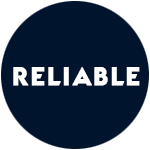
Instant power output for maneuverability
Zero to full torque in an instant
No waiting for engine rev to settle
No pre-start warning beep
Best quality components available

Patented Technology
Hydro power regeneration
Superior thrust efficiency and energy capture
Remote diagnostics
Low maintenance
System Solutions for a Range of Marine Activity
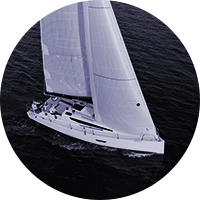
THE FACTS ABOUT ELECTRIC POWER, BATTERIES AND PROPULSION
Today's electric motor technology has already moved from
the open road to the open ocean.
Instant High Torque
Electric motors are in constant ‘stand by’ mode; you can engage the control lever at any time for instant forward or reverse propulsion.
Electric motors achieve instant torque with Electromotive Force while internal combustion engines need to build RPMs gradually by increasing piston firing frequency.
Hydro Generation
At sailing speeds over 6 knots Oceanvolt systems are able to generate significant power for recharging the battery bank by activating at the touch of a button.
Power regeneration increases exponentially with each additional knot of speed.
Lithium Ion batteries are superior to other battery storage technology; highest storage capacity, high effective current delivery, high charge capacity resiliency and wide temperature range performance. In today's digital age, where everything is just a click away, 1xbet mobile takes a significant chunk of the online casino services sector. Starting as an online casino service in 2007, 1xBet expanded its services in 2014 to include sports betting. Fast forward to 2018, and they marked their entry into the Indian market. Their app and website, designed in a calming blue and white hue, are not just a treat for the eyes but are also super intuitive. With a support interface that covers 50 languages, including Hindi, the platform ensures that language is no barrier to placing your bet.
Oceanvolt highly skilled technical team ensures proper installation and system-optimization. Only the highest quality Li-Ion batteries are used - to ensure performance and safety.
For those interested in a hybrid solution, generators are a highly efficient way to extend range while at sea.
DC generators have the advantage of rapid recharging capability.
AC generators are, generally, smaller and even portable which means that the generator can be aboard only in situations where longer motoring might be required.
Battery recharging is accomplished with shore connection, hydro generation (an integrated part of all Oceanvolt systems) and/or solar panels.
In Hybrid solutions , a generator (either AC or DC) can be used to recharge batteries / extend motoring range.
Integrated components
It is essential that all system components are properly selected and installed.
Our team of highly skilled technicians ensure that all components are compatible and that system management software is optimized.
Oceanvolt blog

For immediate release: Oceanvolt appoints Mikael Heikfolk as new CEO

Oceanvolt & Blue Marine showcase electric innovation at Seattle Boat Show 2024
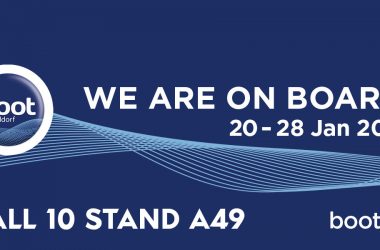
Where to find Oceanvolt at BOOT 2024
Owner testimonials.
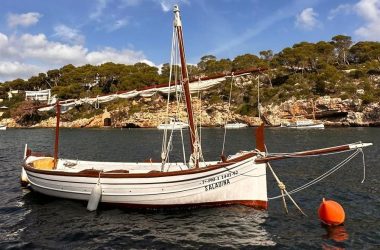
Traditional Mallorcan Llaut
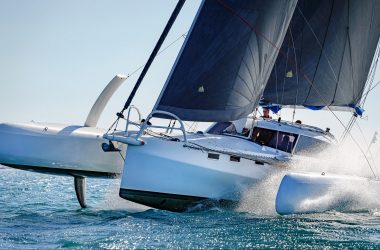
Rapido 40 #7 “NullEins”
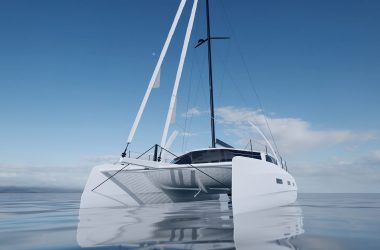
SQ46 Sailing Catamaran
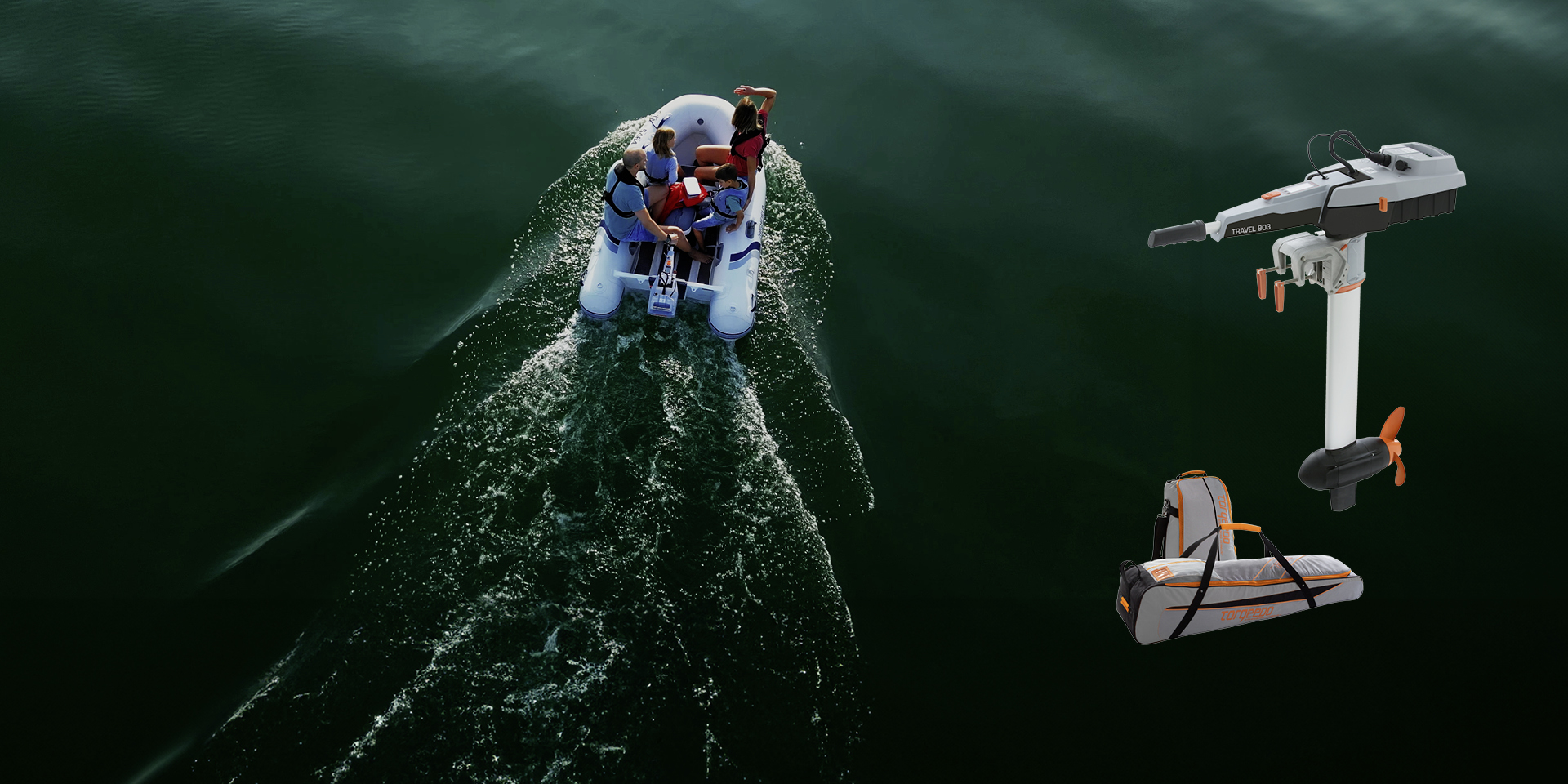
JavaScript functionality for your browser has been deactivate. Please activate JavaScript so you can use all functions on this page.
Welcome to Lake
Discover places to stay and unique experiences around the world.
- How It Works
Home - Blog - Electric Motor Boats: Revolutionizing Water Travel with Sustainable Technology
Electric Motor Boats: Revolutionizing Water Travel with Sustainable Technology
Kristia Goodnight
December 19, 2023
In this article
Get started.

A growing number of boating enthusiasts have embraced electric boating , a move that promises an eco-friendly future with zero emissions on the water. Imagine gliding across the water silently while also doing your part for the environment. With electric motor boats , that vision becomes a reality.
Why Choose an Electric Motor Boat?

Boats with electric motors provide a ride that’s not only whisper-quiet but also free of harmful emissions . You’re essentially navigating the waters without leaving a carbon footprint. Plus, while the upfront costs might be higher, electric boats often lead to savings over time. You can say goodbye to the expensive fuel costs of traditional gasoline engines.
A recent market prediction indicated a surge in the electric boat sector, expected to expand from $3.3 billion to $19 billion between 2023 and 2032. This growth shows a widespread consumer shift towards greener alternatives, which is not only better for the planet but also increasingly better for your wallet.
Advantages of Electric Motor Boats
Electric motor boats are making waves in the maritime world, bringing you a host of advantages that traditional boats simply can’t match. Let’s set sail and explore these perks which are as refreshing as a gentle sea breeze.
- Environmental Benefits: Electric boats contribute greatly to preserving water ecosystems. By emitting zero pollutants directly into the water, they help maintain the delicate balance of marine environments. Understanding that over 70% of the Earth’s surface is covered in water, every little bit helps to keep these vast expanses pristine.
- Zero Emissions on the Water: What if you could enjoy your time on the water knowing you’re not compromising air quality? With electric boats, that’s exactly what you get – zero emissions. Breathing in the fresh air without the smell of fuel is not just a luxury, it’s a step towards cleaner boating .
- Reducing Your Carbon Footprint: Boaters are becoming increasingly eco-conscious. Electric boats offer a tangible way to reduce your carbon footprint, and as battery technology improves, these reductions will only get greater.
- Quiet and Efficient: The serenity of boating is often disrupted by the roar of a diesel engine. Electric motors, however, glide through the water in near silence, enhancing the peace of your voyage. Moreover, the efficiency of electric propulsion means more energy is going towards moving you forward, not just making noise.
- The Peace of Electric Boating : Imagine slicing through the waves without disturbing nature’s soundtrack. The quietness of electric boating allows you to have conversations, listen to the wildlife , and genuinely relax without engine hum as your constant companion.
- Energy-Efficient Propulsion: Electric motors boast an immediate torque delivery, making them nimbler than traditional engines. They turn energy into propulsion more effectively, often resulting in a smoother, more responsive boating experience .
- Lower Operating Costs: Electric boats can be kinder to your wallet as well. Owners often see significant savings with electric propulsion. From bypassing the gas pump to benefiting from fewer moving parts requiring less maintenance , the numbers add up quickly.
- Savings on Fuel and Maintenance : A noteworthy trait of electric boats is their lower running costs. While upfront costs can be higher, the savings on fuel and maintenance can offset these initial expenditures over time. It’s a financial breeze that keeps more money in your pocket.
Calculating the Cost Savings
Working out the cost savings of an electric boat is akin to a pleasant fishing trip: rewarding and surprisingly simple. Consider the factors:
- Fuel expenses: Nearly eliminated.
- Maintenance: Drastically reduced due to fewer mechanical parts.
Each trip out becomes an opportunity to savor the smart choice you’ve made for both your wallet and the environment.
Types of Electric Motor Boats
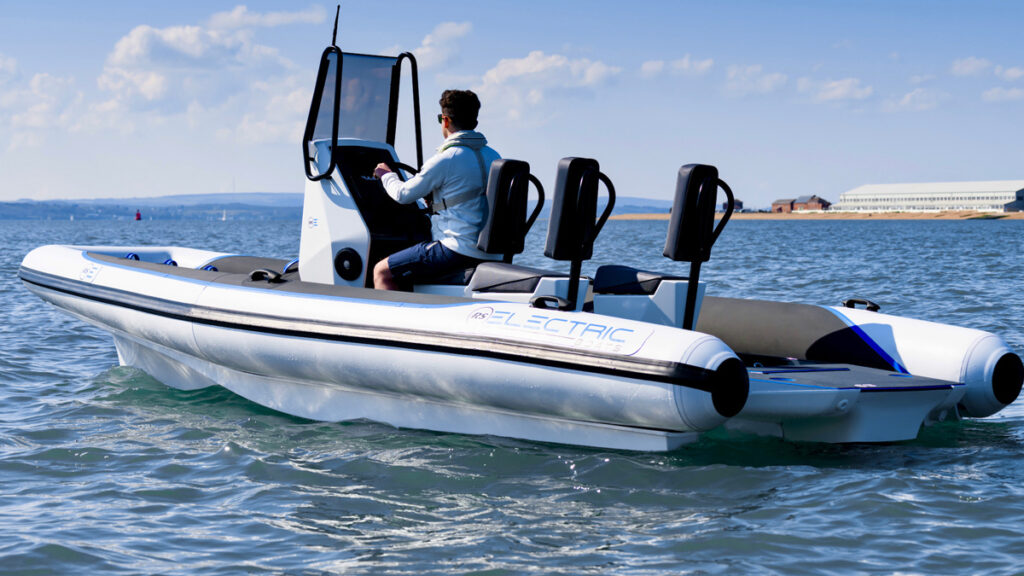
Electric motor boats offer a quieter, cleaner, and more sustainable boating experience . Whether you’re seeking a leisurely cruise on a pontoon or a high-powered ride, electric boats cater to a variety of marine adventures.
Electric Propulsion Boats
These boats are equipped with an electric motor that uses lithium-ion batteries for power, offering a whisper-quiet operation and zero emissions. With a range that can vary widely, efficient electric propulsion typically requires less maintenance than traditional combustible engines.
All-Electric Boating Experience
Going all-electric means full commitment to electric boating . You’re not only embracing an environmentally conscious choice but also enjoying silent rides and reduced vibration. Manufacturers are now offering models suitable for everything from fishing to high-speed racing.
Leading Electric Propulsion Models
Models from Torqeedo and ZeroJet , for example, lead the way by integrating electric outboards with advanced technology to enhance the boating experience. These electric boats come with a display that tracks your range and battery life, ensuring you know just how far you can explore.
One standout brand making waves is the Beneteau Group with its Delphia range , moving to a fully electric lineup by 2024. This bold move by a major player showcases the industry’s commitment to eco-friendly innovation.
Range and Charging Considerations
When considering an electric boat, it’s important to think about your travel range. Most boats can cruise comfortably for several hours on a single charge, but as with electric cars, increased battery capacity grants a longer range. High-capacity lithium batteries can now offer ranges comparable to their combustion counterparts.
Hybrid Electric Boats
Hybrid electric boats offer a best-of-both-worlds solution, combining an electric motor with a traditional combustion engine . This setup allows for greater flexibility and extended range , ensuring you’re not tethered to charging points. With hybrid electric boats , you get the silence and eco-friendliness of electric power with the range assurance of a fuel engine.
Notable Hybrid Electric Models
As hybrids gain popularity, brands like Greenline Yachts have established themselves with models that promise efficiency without compromising on performance . Statements from industry leaders underline that the hybrid approach satisfies both eco-conscious boaters and those with a need for longer range-cruising.
How Hybrid Systems Work
In a hybrid system, the electric motor can power the boat at low speeds or serve as a generator when the combustion engine is running, recharging the lithium-ion batteries . It’s a dance of power sources, orchestrated for optimal fuel economy and reduced emissions.
Electric Pontoon Boats
For a laid-back day on the water, electric pontoon boats are your go-to choice. They are ideal for leisure activities and offer a stable and spacious platform for family and friends. Being electric, you’ll enjoy your cruise without the noise, odor, or pollution of gasoline engines.
Leisure and Eco-Friendly Cruises
Electric pontoon boats are the epitome of leisure and eco-consciousness. Besides zero emissions, they usually require less upkeep than their gasoline-powered counterparts, making them both environmentally and economically appealing for regular boaters.
Best Electric Pontoon Boat Models
Brands like Avalon and Sun Tracker are charting the course with a range of electric pontoon models designed for comfort and style. Their offerings are equipped with reliable electric outboards that don’t skimp on power or the pleasure of cruising.
Features for Electric Pontoons
High-quality electric pontoons often come with plush seating, ample storage, and a canopy for shade. They are also equipped with lithium-ion batteries that provide enough power for a full day of fun before needing a recharge.
Electric Motor Key Features
Let’s plug into the essential elements that power these electric motor boats to glide through the water with such ease.
Electric Motors: The heart of an electric boat is its electric motor , which converts electrical energy into mechanical propulsion. In an eco-friendly twist, this means no fuel spills and a quiet ride for you.
Types of Electric Motors Used : Manufacturers are steering towards brushless DC motors for their high efficiency and maintenance-free operation. Trusty and robust, these motors keep your voyage smooth.
Power Output and Performance: How does speed sound? Today’s motors range from modest 1 hp models to powerhouses hitting 300 hp , like Evoy’s record-breaking Storm motor. Get ready for a surge of thrill!
Battery Technology: Batteries are the reservoirs of energy, storing all the juice needed for your nautical expeditions. The latest innovations use lithium-ion batteries, providing a more formidable, reliable charge.
Lithium-ion vs. Lead-Acid Batteries : When it’s lithium-ion vs. lead-acid, think endurance vs. economy. Lithium-ion batteries are lighter and last longer, while lead-acid batteries are more budget-friendly but bulkier.
Battery Capacity and Charging : With great capacity comes greater cruising distances. More ampere-hours (Ah) mean you can sail longer without a recharge.
Charging Infrastructure: Entering the age of convenience, the growth in charging infrastructure ensures that there’s always a port in a storm. Some companies are expanding their network of dockside charging stations, making trip planning a breeze.
Dockside Charging Stations: These charging stations are popping up like buoys in a bay, a welcoming sight for seafarers seeking electricity.
Charging Time and Range : Charging time can vary, but think about this: a quick charge might just be the perfect excuse to explore a new portside town or grab a bite. Once charged, the average range can be quite impressive. Some models boast upwards of 80 nautical miles!
Energy Management Systems : Modern energy systems in electric boats ensure your vessel is as efficient as can be, optimizing power usage for the best performance.
Optimizing Electric Boat Efficiency: These boats aren’t just about getting from A to B. They’re about doing it smarter. With fine-tuned propulsion and hydrodynamic designs, efficiency is the name of the game.
Monitoring and Control: Take control with intuitive interfaces that give you real-time data on power consumption, battery life, and motor performance. Monitoring your boat’s vitals is easier than checking your watch.
Electric Motor Boat Brands and Manufacturers
Diving into the world of electric motor boats, you’ll discover an array of manufacturers leading the charge toward a cleaner, quieter boating experience. Torqeedo and Duffy Electric Boats stand out as pioneers, while Pulse Electric Boats marks its territory with innovative designs. Each brings a distinctive blend of models and a dedication to enhancing your electric boating adventure.
When it comes to electric boats, Torqeedo is synonymous with advanced technology and sustainability . This German manufacturer has been a major player in the electric boat motor industry, setting standards for high-efficiency outboards, inboards, and hybrid drive systems since its inception.
Electric boating and Torqeedo go hand in hand. They’ve been committed to reducing waterway emissions while boosting performance. With a continuous push for innovation, Torqeedo has propelled the electric boating experience to new heights. Their dedication has been recognized with numerous international awards, so you can trust you’re dealing with excellence! Torqeedo offers three main Electric Boat Models:
- Deep Blue : A powerful system for larger boats
- Cruise : Perfect for day cruisers and sailboats
- Travel : Ideal for casual boaters and short trips
“It’s like steering a whisper,” says Mary H., an electric boat enthusiast, highlighting the serene experience of a Torqeedo-powered journey. Owners rave about the smooth operation and environmental benefits. Many have switched from traditional engines and never looked back!
Duffy Electric Boats
Meet Duffy Electric Boats , the brand that’s become a byword for leisurely cruising and quality craftsmanship in the electric boating sector. Founded in 1970, Duffy is one of the first to bring electric boating to the mainstream, offering an extensive range of models.
Duffy has been at the forefront of eco-friendly boating, earning a solid reputation for reliability. These quiet, reliable boats are perfect for those serene lake or harbor cruises with friends and family. Their boats are often seen lazily navigating calm waters , providing a perfect escape from the hustle of modern life. Signature Duffy Electric Models include:
- Bay Island 22: Boasts the most interior space .
- Sun Cruiser 22: Enjoy the best of both worlds – both inside and out.
- Snug Harbor 18: The ultimate in cozy comfort, seating for 9 passengers.
- Cuddy Cabin 22: one of the first models to incorporate Duffy POWER RUDDER™ technology.
“Every voyage is a treat,” exclaims John T., reflecting on his Duffy boat experience. With high owner satisfaction, a Duffy isn’t just a boat; it’s an investment in unspoiled moments on the water.
Pulse Electric Boats
Innovation is at the heart of Pulse Electric Boats , a brand pushing the boundaries in electric marine propulsion. These boats are all about embracing technology and delivering an exhilarating ride.
Pulse Electric Boats are the new kids on the dock, but they’re making waves with their cutting-edge designs and commitment to advancing electric boating. Each model boasts sleek lines and responsive handling , ensuring you enjoy every moment at sea.
Notable Pulse Electric Models
The lineup includes dynamic and sporty crafts :
- Pulse 63 : A combination of speed and endurance
- Pulse 58 : Balancing agility with comfort
“I’ve never felt more connected to the water,” admits Alex G., a Pulse enthusiast. Users praise the immersive driving experience that comes with a Pulse electric boat, noting the balance of speed and stability is second to none.
Choosing the Right Electric Motor Boat
When you’re in the market for an electric motor boat, the perfect fit for your lifestyle and needs is crucial. This guide will steer you through the essentials such as understanding your specific boating desires, balancing cost with efficiency, and ensuring you have the necessary infrastructure to keep your boat charged and ready.
Assessing Your Boating Needs: Have you thought about what you’ll primarily use your electric boat for? Whether it’s leisurely lake trips or sea adventures, identifying your boating needs will help narrow down the choices.
Purpose of Your Electric Boat: Leisure, fishing, or sports – what’s your calling on the water? An electric sports boat might be on your radar if speed and agility are what you’re seeking. Rand Boats, for instance, offers the Rand Source 22 , notable for its combination of affordability and performance.
Passenger Capacity and Range Requirements: How many companions will join your voyages, and how far do you plan to venture? It’s essential to pick a boat that can accommodate your group and has the range to reach your destination without a recharge.
Budget Considerations: Sometimes electric boats may come with a higher upfront cost, but remember, the benefits of electric propulsion such as lower running costs can be a game-changer.
Upfront Costs vs. Long-Term Savings: Though an electric boat might pinch your wallet initially, the ongoing savings in fuel and maintenance could be substantial. With electric boats, you’re not just buying a boat, you’re investing in a more cost-effective and sustainable future.
Evaluating Total Ownership Costs: Calculate expenses like maintenance, storage, and insurance , then add electric-specific costs such as battery replacements over time.
Charging and Infrastructure: Your electric boat’s best friend? A charging station. Secure access to reliable charging infrastructure to keep your sea escapades uninterrupted.
Access to Charging Facilities: Do you have a charging station at home, or is there one at your marina? Availability can vary wildly, so research your local facilities before taking the plunge.
Charging Time and Range: Imagine coasting on the water without a care – until the battery indicator looms. An average electric boat’s range varies from 20 to 100 miles. Charging time can be lengthy, though innovations are on the rise, with some models sporting a quick-swap battery system for convenience.
New vs. Used Electric Boats: Is a shiny new vessel calling your name, or are you scouting for a seasoned sea veteran? Consider the trade-offs, including warranty, technology, and the potential need for more immediate maintenance in a used boat.
Pros and Cons of New Electric Boats: With the latest models, you’re getting cutting-edge technology and lower maintenance, but at a cost. A new electric boat will depreciate the moment it hits the waves.
Considerations When Buying Used Electric Boats: If it’s been well-loved by its previous owner, a used electric boat can be a steal. Just be sure to check for battery health, which is key to its operation, and any signs of wear that could lead to extra costs down the line.
Maintenance and Care
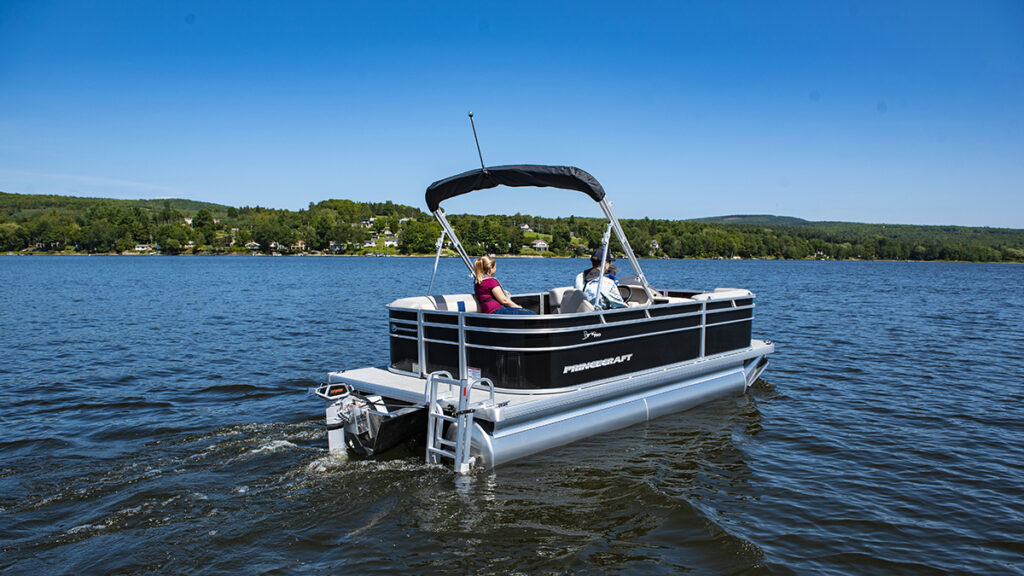
Maintaining your electric motor boat is crucial to ensuring a long life for your nautical investment. From the batteries that power your voyage to the hull that glides you through the water, every component needs your attention . Let’s dive into the specifics, starting with the most critical part of your electric boat – the batteries.
Battery Maintenance
Caring for your boat’s batteries is not just wise; it’s essential. Lithium-ion batteries have taken the boating world by storm, and here’s why: they offer a higher energy density, meaning your electric motor boat can cruise longer on a single charge. However, maintaining these batteries requires a specific approach.
- Charge it correctly : Never let your batteries fully deplete. It’s recommended to charge them before they drop below 20% capacity. Frequent charging can help maintain battery health, but be wary of overcharging; it can be just as harmful.
- Temperature matters : Remember that batteries hate extreme heat if you’re out on the water where temperatures can soar. Conversely, they don’t perform well in freezing conditions either. Aim for storage in a temperature-controlled environment.
- Regular Inspection : At least once per season, check your batteries for any physical damage, and ensure the connections are tight and clean. If you spot anything out of the ordinary, it’s time to take action. Periodic checks can prevent sudden failures.
Continued attentiveness to your electric boat’s batteries not only preserves their life but also safeguards your adventures on the water. Remember, the way you maintain your batteries reflects on the longevity of your electric motor boat, which keeps you out on the water, where you can enjoy your electric motor boat.
Related Posts

October 3, 2023
Boating: Your 10-Step Guide to Driving a Boat Safely
Boating is a fantastic way to take advantage of the great outdoors and create unforgettabl...

October 4, 2023
Water Skiing Essentials: Tips and Tricks for a Thrilling Experience
Water skiing is an exhilarating surface water sport where individuals ride on one or two s...
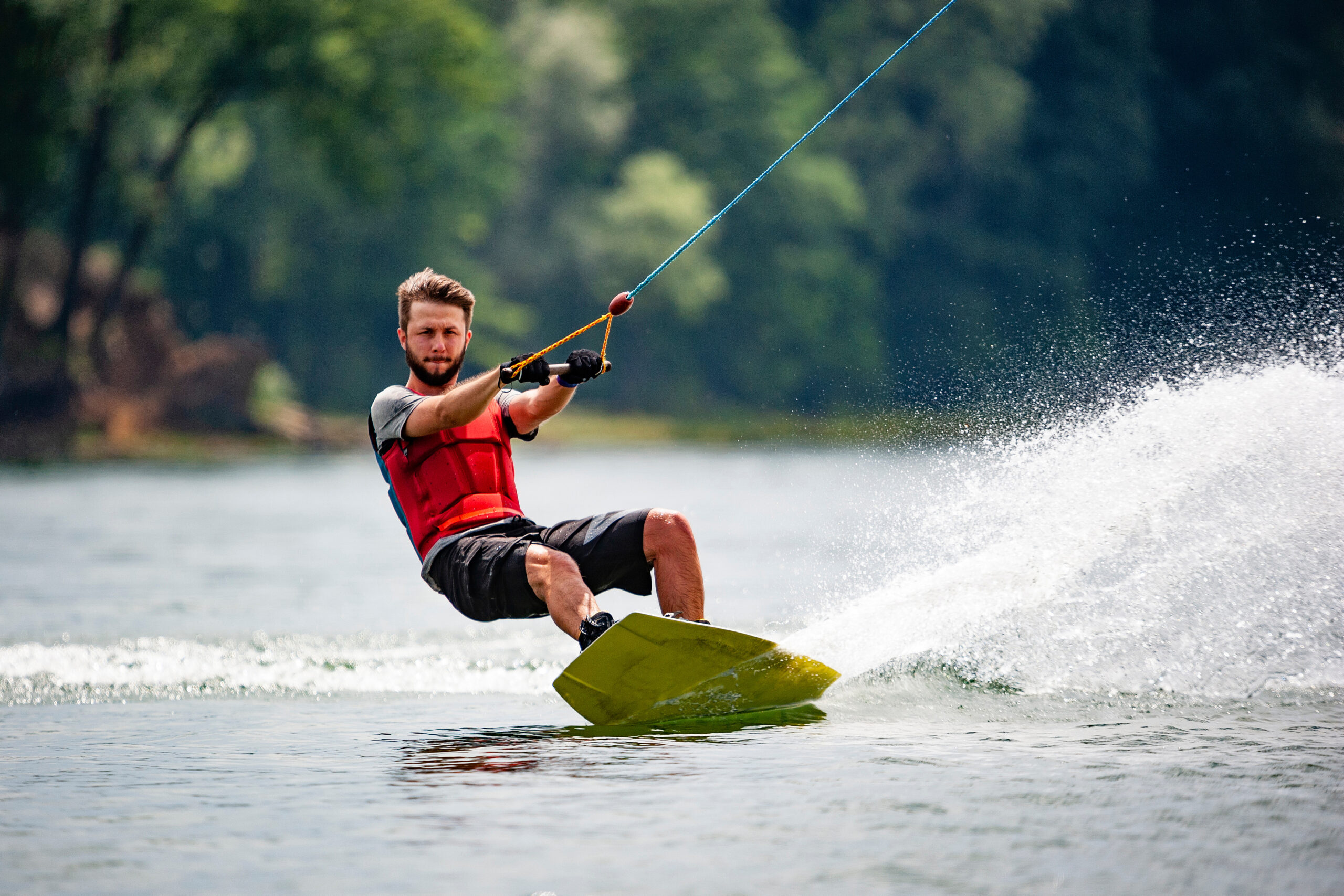
Wakeboarding Fun: Tips and Techniques for Every Skill Level
Wakeboarding is a thrilling water sport that has captured the interest of adrenaline seeke...
Don't have an account yet? Register
Already have an account? Sign In
Reset Password
Please enter your username or email address, you will receive a link to create a new password via email.

Electric boating Powered by Evoy®
Evoy® brings “irresistible boating” to the modern boater. An experience by delivering long-lasting Electric Boat Motor systems ranging from 120-400 hp continuous, accelerating the transition to emission free, blissfully quiet and sustainable boating.
Norway has led the world's adoption of electric cars. Evoy and Norway will lead the world's adoption of electric boats.

A combustion engine has on average over 2000 parts. An Evoy® motor has only 4 moving parts.

Fast-charging
Offering flexible charging solutions from standard AC to fast DC – charging in less than an hour.

Remote support & maintenance, location services, updates and charge status at your fingertips.
Evoy® Electric Outboard Motor Systems
Ready to turn heads at the local marina? The Evoy high-power outboards set the new standard for recreational boating. The continuous power is equivalent to 120 hp or 300 hp with peak power of 185 hp or 600 hp, motor depending. Available Series – Breeze 120+ hp and Storm 300+ hp.
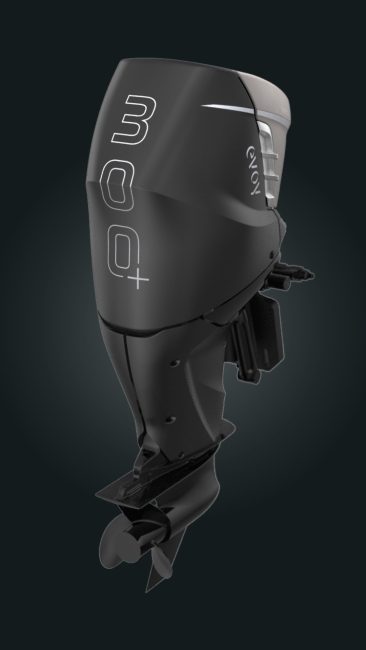
Storm outboard 300+ hp
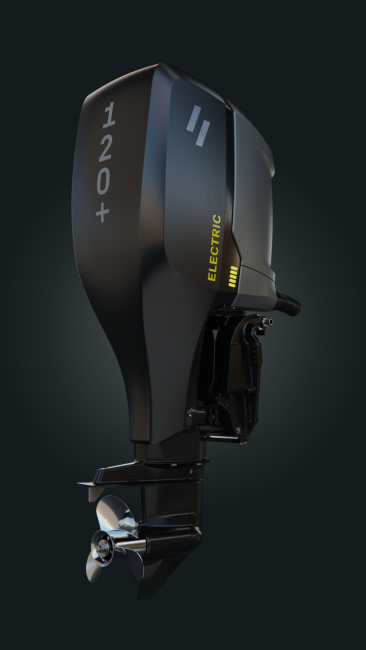
Breeze outboard 120+ hp
Evoy® electric inboard motor systems.
Evoy®’s turnkey inboard electric system is a robust system designed for 1000+ hours per year. Due to the over-the-air updates and programmable system, we can monitor, troubleshoot and update the software onboard. The system is nearly maintenance-free and very affordable to use. The system can be connected to a stern drive, water jet, or shaft. Available Series, Breeze 120+ hp, Storm 300+hp and Hurricane 400+ hp.
Ready to turn heads at the local marina? The Evoy high-power outboards set the new standard for recreational boating. The continuous power is equivalent to 120 hp or 300 hp with peak power of 185 hp or 600 hp, motor depending. Available Series – Breeze 120+ hp, Storm 300+ hp and Hurricane 400+ hp.
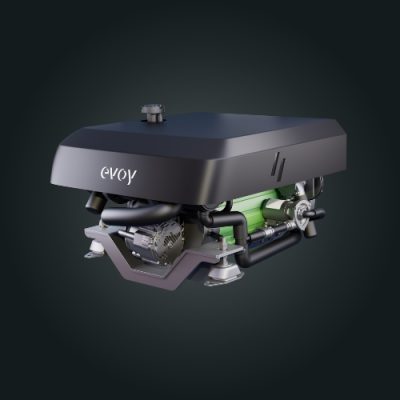
Hurricane inboard 400+ hp
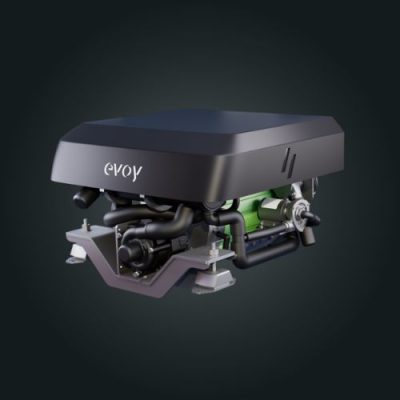
Storm inboard 300+ hp
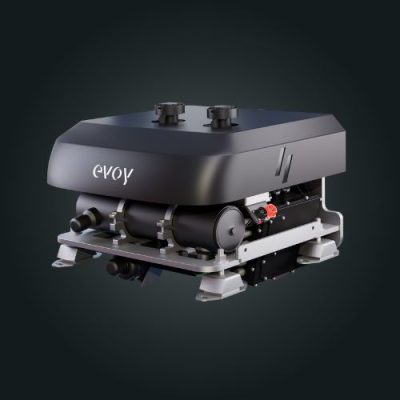
Breeze inboard 120+ hp
Meet up with us.
We know boaters love nothing more than a test drive on the water! We attend several events each year and love to connect with likeminded boaters. Find out where to meet us next and let us introduce you to the world of electric boating.
The shift to electric boating is happening now, powered by Evoy®

Accelerate to Silent Boating
Accelerate to Zero E missions
Accelerate with Evoy
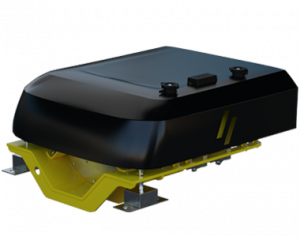
Hurricane - 400+ hp Inboard Electric Motor System
Evoy®’s turnkey inboard electric system is a robust system designed for 1000+ hours per year. Due to the over-the-air updates and programmable system, we can monitor, troubleshoot and update the software onboard. The system is nearly maintenance-free and very affordable to use. The system can be connected to a stern drive, water jet, or shaft.
The continuous power is 400+ hp and the peak power is 800 + hp.
Breeze - 120+ hp Outboard Electric Motor System
Ready to turn heads at the local marina? The Evoy Breeze sets the new standard for recreational boating. The response to our launch has been tremendous. The continuous power is equivalent to 120 hp or even 150 hp ( in cold waters) with a peak power of 185 hp.
Hold on to your hats ladies and gentlemen!
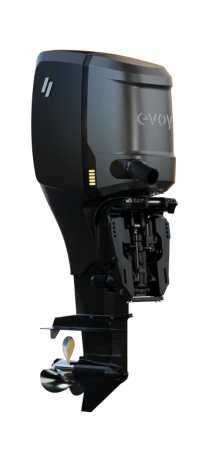
Evoy Florø, Norway
Founded in 2018, Evoy® designs, develops and distributes powerful 100% electric motor systems for commercial and leisure boats, bringing the superiority of electric voyaging into new markets with Evoy’s®ground-breaking technology.
Subscribe to our Newsletter
Enter your email *

- Order E-System
- Media & Press
© Evoy AS 2023
Privacy Policy

Privacy Overview
Get the news first.
Join our newsletter to get the latest updates from Evoy!
EJET Eco-Friendly Electric Motor & Drivetrain Yacht Tenders: New Model Announced
Boat engineering and design company EJET Electric Yacht Tenders has announced the development of its latest electric motor 9X yacht tender model.
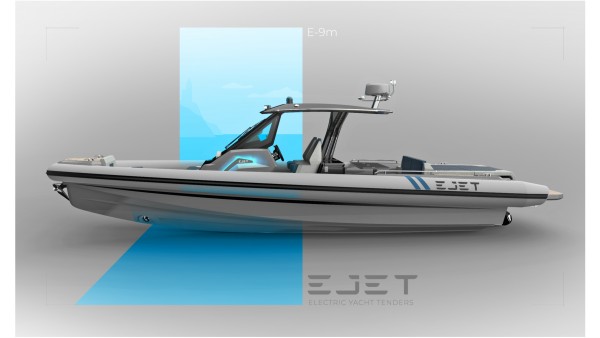
Ljubljana, Slovenia - March 21, 2024 —
Much like their highly acclaimed 4X tender, the upcoming 9X model sports EJET’s proprietary electric motor and drivetrain, going in line with founder Žiga Jarc’s mission of providing sustainable transportation options for yacht owners and guests. Both models will be available in the summer, with the 9X build slated for initial testing in July.
For more information, please visit https://ejet.co/
The announcement follows EJET’s recent appearance at the Boot Düsseldorf Boat Show. Having received the International Boat Industry’s Rising Star Award, the company revealed the development of its larger 9X model with the aim of promoting environmental responsibility within the boating industry.
Designed to be lightweight and compact without sacrificing output or speed, the new tender will be powered by a 220 kWh battery and a 300 kW motor, with an option to upgrade to 340 kW, ensuring 98% efficiency and making it suitable for sports such as water skiing. The boat’s V-shaped hull has been adjusted to accommodate EJET’s custom electric powertrain and is capable of withstanding turbulent waters and inclement weather conditions. Each boat is built with standard hydraulic steering mechanisms, along with the company’s military-grade jet system, allowing for easy maneuvering, reversing, and sudden stops in both low- and high-speed scenarios.
The 9X model will also feature a digital interface, which boaters will be able to use to select different driving modes and dynamics, view real-time GPS navigation and system data, and access the smart audio Bluetooth system. Additionally, amenities such as a hydraulic bathing platform, an electric grill, an ice maker, and a refrigerator will all be available as upgrade options for all 9X tenders.
About EJET Electric Yacht Tenders
Founded in 2016 by Žiga Jarc, EJET began with the goal of developing a zero-emissions electric yacht tender that did not compromise performance or safety. The company has since become a pioneer in electric propulsion systems and remains committed to future innovations in the boating industry. EJET tenders are currently the only products on the market with custom electric drivetrains.
EJET Electric Yacht Tenders, under the leadership of founder Žiga Jarc, is actively engaged in the development of its proprietary electric propulsion technology. The initiative is part of the company's broader commitment to innovation in high-performance, long-range powertrain technology for the marine industry. This effort underscores EJET's focus on delivering solutions characterized by their lightweight and compact design, high power output, and exceptional motor efficiency of up to 98%. With a specific emphasis on extending battery life, the company aims to set new benchmarks for what is achievable in electric propulsion within the boating sector.
“We built the company and the brand on three pillars: driver-centric experience, sustainability with clean electric power, and advanced electric propulsion technology,” says Ziga Jarc. “We cooperate with the best nautical partners to create unforgettable experiences for our customers.”
Interested parties can learn more by visiting https://ejet.co/contact-us/
Contact Info: Name: Žiga Jarc Email: Send Email Organization: EJET Electric Yacht Tenders Address: 16C Mokrška ulica, Ljubljana, Ljubljana 1000, Slovenia Phone: +386-41-688-998 Website: https://ejet.co/
Release ID: 89125030
If there are any errors, inconsistencies, or queries arising from the content contained within this press release that require attention or if you need assistance with a press release takedown, we kindly request that you inform us immediately by contacting [email protected]. Our reliable team will be available to promptly respond within 8 hours, taking proactive measures to rectify any identified issues or providing guidance on the removal process. Ensuring accurate and dependable information is our top priority.
Electric boats
Candela raises record funding to solve the biggest problem with electric boats.
The innovative Swedish electric boat maker Candela has just announced its biggest funding round ever, reeling in €24.5M (US $26.6M). Fresh off the announcement of the first commercial user of the company’s new P-12 electric ferry , Candela is now flying closer to its goal of replacing combustion engine watercraft with efficient electric boats in both the recreational and commercial boating industries.
The company is well on its way to achieving that goal, using an innovative design with computer-controlled hydrofoils that help its boats fly above the surface of the water. The hydrofoils enable the boats to use 80% less energy than comparable vessels covering the same route.
That efficiency improvement is an even bigger achievement in the water than on land, since electric cars only have to consider aerodynamics when they push air out of the way. Boats dealing with the hydrodynamic issues of much heavier water result in significantly lower efficiencies. Electric boats thus typically require incredibly powerful motors and massive battery banks. But Candela’s high-tech hydrofoils mean the boats can be much more efficient and economical with smaller motors and batteries that still achieve longer range.

And major boatbuilders seem to agree with Candela’s approach. In fact, one of the key contributing members of Candela’s latest record funding round is Groupe Beneteau, a leading global boat maker with a turnover of €1.46B, 15 factories, 9 brands, and more than 8,000 yachts built annually.
As the company explained, the move correlates with its own goals.
“Our investment perfectly aligns with Groupe Beneteau‘s ecological transition objectives, scaling up innovative solutions for more sustainable boating and unparalleled navigation experiences. Candela’s technology, enabling significantly more efficient electric vessels, will transform waterborne transport into its next sustainable phase”, said Bruno Thivoyon, CEO at Groupe Beneteau.
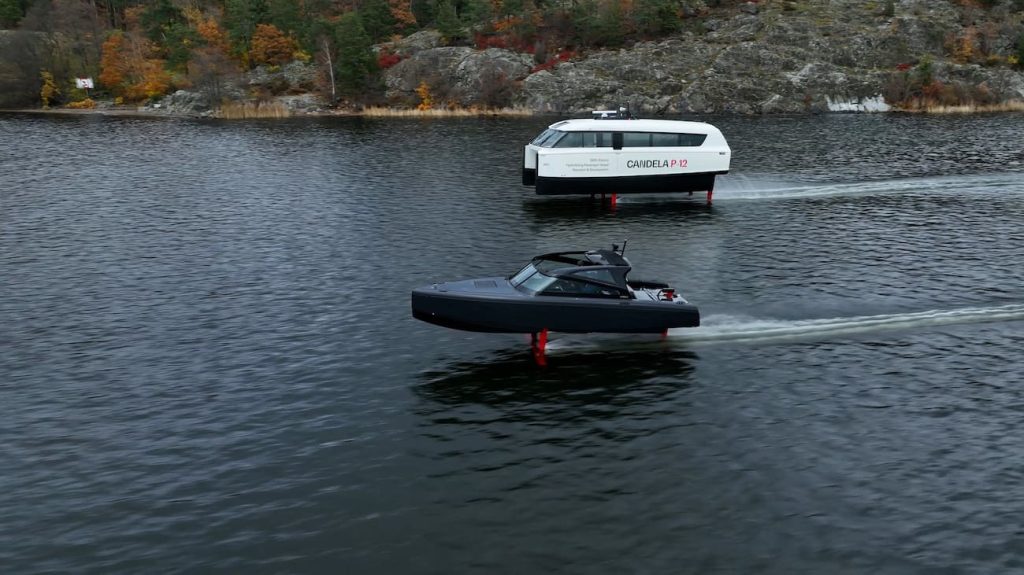
It’s a major score for Candela, as the company’s CEO Gustav Hasselskog added:
“We couldn’t be more excited about having Groupe Beneteau on board. As the leading global boat company, their trust is a stamp of approval for our technology to transform waterborne transportation. We’re excited for the possibilities ahead.”

Candela expects the new investment round to help scale up production to meet demand for the recently launched Candela P-12, the world’s first electric hydrofoil ferry.
The P-12 marks a new chapter in waterborne transport, as it’s the first fast and long-range electric ferry on the market. Its efficient hydrofoil tech cuts lifetime emissions by an impressive 97.5% compared to diesel vessels, while simultaneously cutting operators’ costs in half.
Since it generates minimal wake, the P-12 has been granted exemptions from speed limits in many no-wake areas, such as on its maiden route in Stockholm, where in July it will begin cutting travel times in half compared to road transport and legacy diesel vessels.

FTC: We use income earning auto affiliate links. More.

Micah Toll is a personal electric vehicle enthusiast, battery nerd, and author of the Amazon #1 bestselling books DIY Lithium Batteries , DIY Solar Power, The Ultimate DIY Ebike Guide and The Electric Bike Manifesto .
The e-bikes that make up Micah’s current daily drivers are the $999 Lectric XP 2.0 , the $1,095 Ride1Up Roadster V2 , the $1,199 Rad Power Bikes RadMission , and the $3,299 Priority Current . But it’s a pretty evolving list these days.
You can send Micah tips at [email protected], or find him on Twitter , Instagram , or TikTok .
Micah Toll's favorite gear

Lectric XP 3.0 e-bike sale
Best $999 electric bike ever!

Rad Power Bikes sales
Great e-bikes at great prices!

- Subscribe Now
- Digital Editions

Best electric outboard motors: 11 top options for zero-emissions propulsion
- Electric boats
- Top stories
Electric outboard motors seem to be springing up all over the place right now. We round up 11 of the best electric outboards on the market…
Electric outboard motors are nothing new, after all the humble electric trolling motor has been around for decades, but in the past couple of years a new breed of more powerful units has emerged.
Capable of powering everything from a tender to a 50-knot sportsboat, this new generation of electric outboard motors will surely play a big role in the growing trend towards all- electric boats .
We’ve rounded up 11 of the best options available on the market right now to help you track down the right one for cutting down your boat’s carbon footprint.
Compact electric outboard motors for your tender

Torqeedo 603 Travel
Weight: 15.5kg Power: 600W / 0.8hp Battery: 500Wh Range: 11nm Price: £1,499
Torqeedo has been making electric outboard motors for quite a while now, and their latest offering slots into the travel range of electric outboards between the 503 (1.5hp) and the 1103C (3hp).
All the usual Torqeedo refinements are present and correct. IP67 rated as totally waterproof, the 603 Travel has a magnetic kill cord and an onboard computer providing instant readouts of operating range at current RPM and battery-charge status displayed on the tiller arm.
You can link it to an Apple or Android app and gain even more information including a map-based range indicator.
Read more about the Torqeedo 603 Travel

Mercury Avator 7.5e
Weight: 27.1kg Power: 750W / 1hp Battery: 1kWh Range: 34nm Price: $1,500
Announced in early 2022 and launched less than a year later, the Mercury Avator 7.5e is the first electric unit from the world’s biggest builder of outboard engines .
The whole top plate hinges up to reveal the battery, which can be quickly removed from your electric boat or replaced for convenient charging.
It’s by no means the lightest electric outboard motor on the market, but its claimed range at 25% throttle is very impressive – we look forward to putting one to the test.
Not resting on its laurels, Mercury launched the Avator 20e and 35e this summer as well. These units are no bigger than the 7.5e, but need wiring in to an on-board battery bank.
Read more about the Mercury Avator 7.5e
Read more about the Mercury Avator 20e and 35e

Weight: 14.5kg (inc. bracket) Power: 1kW / 3hp Battery: 1,085 Wh Range: 14nm Price: £2,185
The idea behind the Remigo One electric outboard makes perfect sense; rather than mounting the battery on top of the shaft, like the engine on an old-school petrol outboard, the Slovenian company has integrated it into the shaft and shaped it like a rudder to minimise drag and maximise steering effect.
It is backed by a 2-year warranty and has a magnetic key/kill cord. There are some other neat ideas too. The rudder casing is waterproof to IP67 above the water and IP69 below the water so it will survive a dunking, and it’s held in place by a clamp mechanism that allows you to adjust the shaft length to suit your boat with the aid of an allen key.
The transom bracket is separate to the motor so you can leave the bracket attached to the boat and simply slot the motor on and off. The tiller also folds and locks parallel to the blade so you can use it as a perfectly balanced carry handle.
Watch our test drive video of the Remigo One electric outboard

The Kicker is exceptionally light and surprisingly powerful
Thrustme Kicker
Weight: 4.4kg Power: 1kW / 3hp Battery: 259kWh Range: 5nm Price: £1,250
If it’s light weight and value that you prioritise over cruising range, then this Norwegian option is hard to beat.
Launched in 2021, the Kicker boasts enough range and grunt to get one person from ship to shore and back again in calm conditions, as editor Hugo proved in a week-long test.
The only downside is that the battery isn’t removable, which can make charging a little more difficult.
Read more about the Thrustme Kicker

Weight: 15kg Power: 1kW / 3hp Battery: 740Wh Range: Up to 1hr Price: €2,850
A brand new option from France, the TEMO-1000 doesn’t look anything like a traditional outboard motor.
The design doesn’t have any rectangular box on top, just a rudder-shaped shaft with an electric motor at the bottom and a long slim battery that simply slides down into it, connecting automatically to your electric boat without having to plug wires into it.
The tiller arm does the same, meaning it disappears completely when not in use and yet it is never detached and therefore never mislaid.
Read more about the TEMO-1000

Haswing Ultima 3
Weight: 16kg Power: 1kW / 3hp Battery: 1.03kWh Range: 18nm Price: £1,570
A top-of-the-range option from trolling motor stalwarts Haswing, the Ultimate 3 is suitable for boats up to 7m long.
The brushless DC motor produces 3hp (claimed to be equivalent to a 4hp petrol outboard motor), and it’s available in short and long shaft versions as well as the standard length.
Not only is the detachable battery unusually light at 5kg (lightest in class, according to the manufacturer), it also connects to the engine in a single simple operation without the need for connecting cables or other fiddly parts – no bad thing when you’re bobbing about in a tender!
Read more about the Haswing Ultima 3

ePropulsion Spirit 1.0 Plus
Weight: 19.3kg Power: 1kW / 3hp Battery: 1,276Wh Range: 22nm Price: £1,600
The original Spirit 1.0 has actually been in production for six years with over 10,000 units built. Featuring a 1,000W brushless motor, this electric outboard motor is claimed to be equivalent to a 3hp petrol engine, ideal for tender duties or small to medium sized dinghies.
This Plus version, launched in 2020, is the same weight, size and power – the big gain is where it’s needed most, run time. It has been achieved by upgrading the battery from 1,018Wh to 1,276Wh.
At the same time, the power cord has been upgraded for durability and reliability, and the voltage has been changed from 40.7V to 48V, making it compatible with an external 48V battery. The battery will even float if dropped overboard!
Read more about the ePropulsion Spirit 1.0 Plus
Most powerful electric outboard motors for day boats

Yamaha Harmo
Weight: 55kg Power: 3.7kW / 9.9hp Battery: Sold separately Range: Depends on battery Price: £TBC
Announced in 2022 and tested on a 12m Venmar water taxi, the Yamaha Harmo electric boat drivetrain may be a rather modestly powered 3.7kW motor, equivalent to a 9.9hp petrol engine, but it is being seen as a major statement of intent from the Japanese brand synonymous with big, powerful four-stroke outboards.
Intriguingly, the Harmo is neither an outboard engine nor a sterndrive but a new propulsion package that borrows ideas from both camps.
It is mounted on the transom just above the waterline much like a sterndrive leg, but in keeping with the outboard engine ethos it’s an entirely self-contained unit that includes the motor and steering mechanism.
Read more about the Yamaha Harmo electric rim drive

RAD Propulsion RAD40
Weight: 100kg Power: 40kW / 55hp Battery: 20-60kWh Range: 100nm Price: £28,000 (ex. battery)
The RAD40 drive from British start-up RAD Propulsion appears to be far more than just a conventional outboard leg with an electric motor bolted on top.
Every single element of it has been designed from the ground up to maximise the benefits of electric power. The result is a brand new drive system that is not only much cleaner, quieter and more efficient than a petrol outboard engine but also smaller, lighter, cheaper to maintain and even more manoeuvrable.
In its current 40kW guise (equivalent to around 55hp) it’s powerful enough to propel everything from a 25-knot planing RIB to a 10-knot displacement craft but with a larger 160hp RAD120 as well as a portable tiller steered RAD2 already in development, it’s clear that RAD Propulsion has its eyes set on a much wider market.
Read more about the RAD Propulsion RAD40 electric outboard

E-Motion 180E
Weight: 580kg Power: 110kW / 180hp Battery: 70kWh Range: 70nm Price: $78,990
Launched in 2021 by Canadian firm Vision Marine Technologies, the E-Motion 180E looks like a genuine alternative to the 150-200hp petrol outboard motors that power the vast majority of 18-25ft sportsboats and RIBs.
The outboard engine itself weighs around 180kg, compared to 216kg for a 200hp V6 Mercury Verado, but that relatively modest saving pales into comparison next to the 400kg weight of the 70kWh battery pack.
Admittedly, a fair chunk of that will be offset by the lack of fuel tank and starter batteries, but unlike a petrol boat, the battery pack’s weight stays constant whether full or close to empty.
Read more about the E-Motion 180E

The Evoy Storm looks, feels and goes like a well-matched petrol outboard engine
Weight: 350kg Power: 222kW / 300hp Battery: 2x 63kWh Range: 25nm Price: €144,700
Although currently still in development, the Evoy Storm is a working prototype that has already been fitted to a number of partner brands’ boats, including an Iguana amphibious craft and an Axopar 25 that we tested at last year’s Cannes Yachting Festival .
Despite a 450kg weight penalty over a fully fuelled petrol boat, and five passengers, we still recorded a top speed of over 50 knots – vastly quicker than any other electric boat we’ve tested and not far off the world speed record for a production electric boat of 57.7 knots (held by a Goldfish X9 powered by a 400hp Evoy inboard).
The anticipated price for this electric Axopar 25 is €185,000 (ex tax), which looks pretty good value given that the price of the motor alone is €74,900 plus another €69,800 for the batteries. Whether Axopar can maintain, or even reduce, that price once the Evoy Storm enters production in 2024 remains to be seen.
Read more about the Evoy Storm
Tip of the iceberg
If this seems like a lot of choice, there are even more options coming down the pipeline in 2024. MBY understands that several major outboard manufacturers are planning on entering the electric outboard market, so watch this space…
If you enjoyed this…
Be first to all the latest boats, gadgets, cruising ideas, buying advice and readers’ adventures with a subscription to Motor Boat & Yachting . Available in both print and digital formats, our monthly magazine will be sent directly to your home or device at a substantial discount to the usual cover price. See our latest offers and save at least 30% off the cover price.
New Cauldwell outboard motor: Petrol performance & diesel reliability?
‘we had no real plan for how to get back onto our boat’ – lessons from a man overboard, the new ‘transformer’ megayacht concept that expands at anchor, latest videos, fairline targa tour: sensational new british sportscruiser, navan s30 & c30 tour: exceptional new axopar rival, galeon 440 fly sea trial: you won’t believe how much they’ve packed in, parker sorrento yacht tour: 50-knot cruiser with a killer aft cabin.
- Participants/Employees
- Employers / Sponsors
- Financial Partners

EJET Eco-Friendly Electric Motor & Drivetrain Yacht Tenders: New Model Announced
Boat engineering and design company EJET Electric Yacht Tenders has announced the development of its latest electric motor 9X yacht tender model.

Ljubljana, Slovenia - March 21, 2024 —
Much like their highly acclaimed 4X tender, the upcoming 9X model sports EJET’s proprietary electric motor and drivetrain, going in line with founder Žiga Jarc’s mission of providing sustainable transportation options for yacht owners and guests. Both models will be available in the summer, with the 9X build slated for initial testing in July.
For more information, please visit https://ejet.co/
The announcement follows EJET’s recent appearance at the Boot Düsseldorf Boat Show. Having received the International Boat Industry’s Rising Star Award, the company revealed the development of its larger 9X model with the aim of promoting environmental responsibility within the boating industry.
Designed to be lightweight and compact without sacrificing output or speed, the new tender will be powered by a 220 kWh battery and a 300 kW motor, with an option to upgrade to 340 kW, ensuring 98% efficiency and making it suitable for sports such as water skiing. The boat’s V-shaped hull has been adjusted to accommodate EJET’s custom electric powertrain and is capable of withstanding turbulent waters and inclement weather conditions. Each boat is built with standard hydraulic steering mechanisms, along with the company’s military-grade jet system, allowing for easy maneuvering, reversing, and sudden stops in both low- and high-speed scenarios.
The 9X model will also feature a digital interface, which boaters will be able to use to select different driving modes and dynamics, view real-time GPS navigation and system data, and access the smart audio Bluetooth system. Additionally, amenities such as a hydraulic bathing platform, an electric grill, an ice maker, and a refrigerator will all be available as upgrade options for all 9X tenders.
About EJET Electric Yacht Tenders
Founded in 2016 by Žiga Jarc, EJET began with the goal of developing a zero-emissions electric yacht tender that did not compromise performance or safety. The company has since become a pioneer in electric propulsion systems and remains committed to future innovations in the boating industry. EJET tenders are currently the only products on the market with custom electric drivetrains.
EJET Electric Yacht Tenders, under the leadership of founder Žiga Jarc, is actively engaged in the development of its proprietary electric propulsion technology. The initiative is part of the company's broader commitment to innovation in high-performance, long-range powertrain technology for the marine industry. This effort underscores EJET's focus on delivering solutions characterized by their lightweight and compact design, high power output, and exceptional motor efficiency of up to 98%. With a specific emphasis on extending battery life, the company aims to set new benchmarks for what is achievable in electric propulsion within the boating sector.
“We built the company and the brand on three pillars: driver-centric experience, sustainability with clean electric power, and advanced electric propulsion technology,” says Ziga Jarc. “We cooperate with the best nautical partners to create unforgettable experiences for our customers.”
Interested parties can learn more by visiting https://ejet.co/contact-us/
Contact Info: Name: Žiga Jarc Email: Send Email Organization: EJET Electric Yacht Tenders Address: 16C Mokrška ulica, Ljubljana, Ljubljana 1000, Slovenia Phone: +386-41-688-998 Website: https://ejet.co/
Source: PressCable
Release ID: 89125030
Should there be any problems, inaccuracies, or doubts arising from the content provided in this press release that require attention or if a press release needs to be taken down, we urge you to notify us immediately by contacting [email protected] . Our efficient team will promptly address your concerns within 8 hours, taking necessary steps to rectify identified issues or assist with the removal process. Providing accurate and dependable information is central to our commitment.
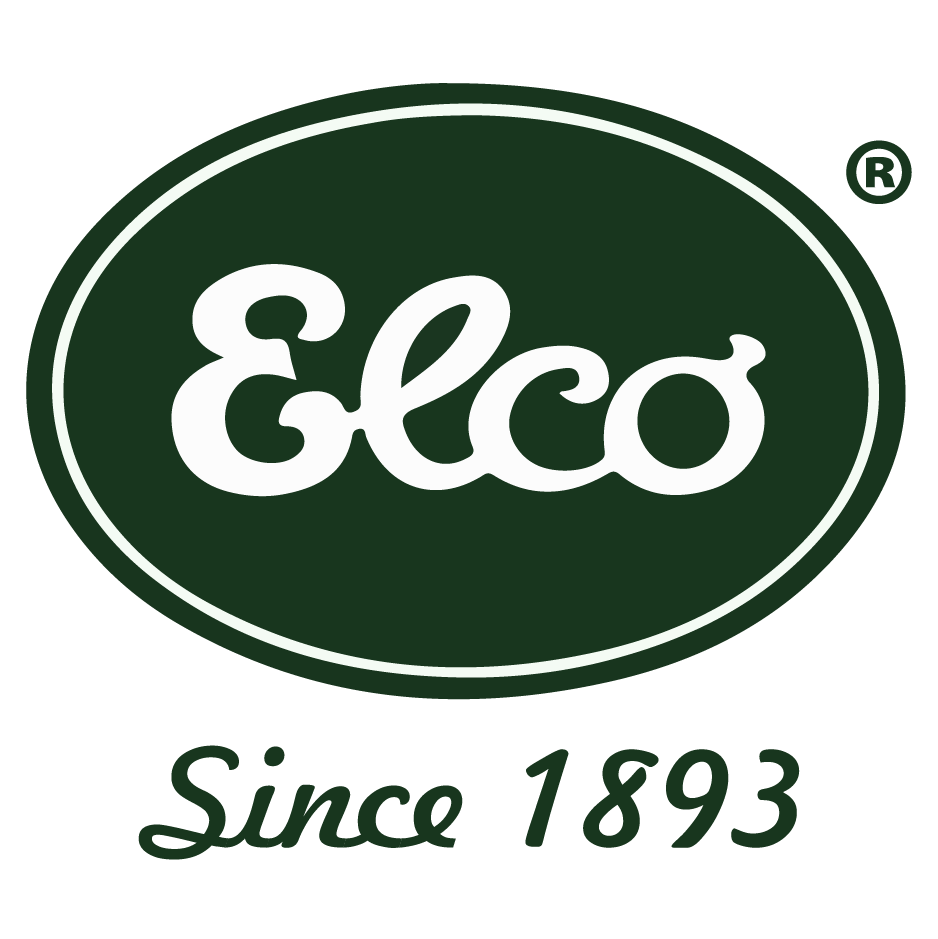
EP-50 Electric Outboard
$ 9,950.00
Comparable HP: 50HP Voltage: 96 Volts Suggested Battery Package Options: Deep Cycle AGM – Victron – 12V / 220ah (8 pack) Lithium Iron Phosphate – 96V / 200ah (4 pack minimum)
Congratulations on getting one step closer to purchasing your award-winning Elco Electric Outboard. Select the options and accessories below.
Download Dimensions Sheet
If your transom is 15″ or longer, a long shaft is recommended.
Step 2. Select Throttle Control, if remote throttle was chosen above.
(Remote throttle selection is not needed if tiller was chosen above)
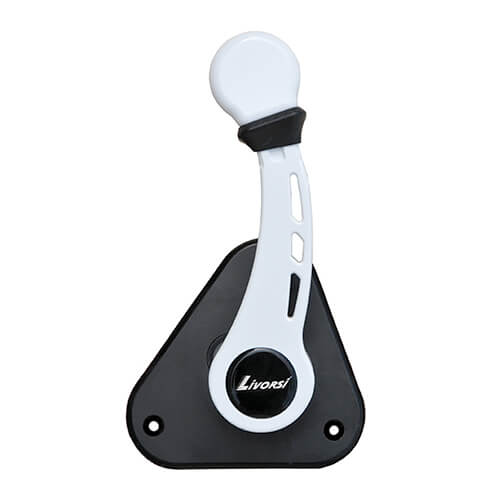
LIVORSI SIDE MOUNT REMOTE THROTTLE
$ 450.00
To be mounted on the side. Throttle includes 16 foot throttle cable, key with on/off switch, and safety lanyard.
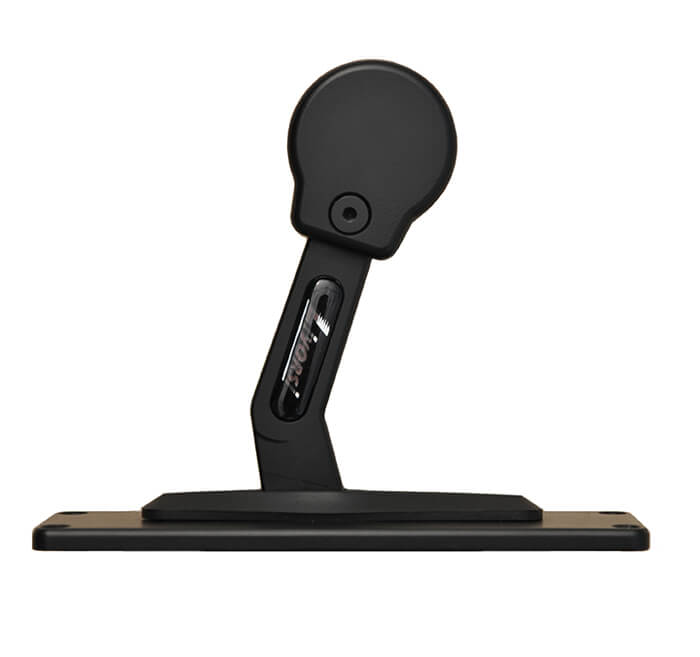
LIVORSI TOP MOUNT REMOTE THROTTLE
$ 650.00
To be mounted on the top. Throttle includes 16 foot throttle cable, key with on/off switch, and safety lanyard.
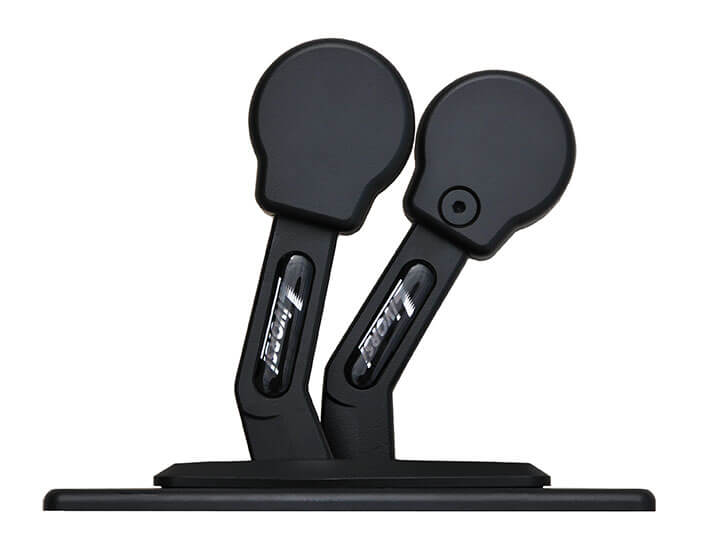
LIVORSI DUAL TOP MOUNT THROTTLE
$ 1,300.00
For Twin-Powered Systems. Throttle includes 16 foot throttle cable, key with on/off switch, and safety lanyard.
Step 3. Select Batteries & Charger
If you do not have batteries and a charger, you will need to select either AGM or Lithium batteries with the matching charger type. If you already have batteries but need a charger, select the applicable charger based on the type of battery you have.
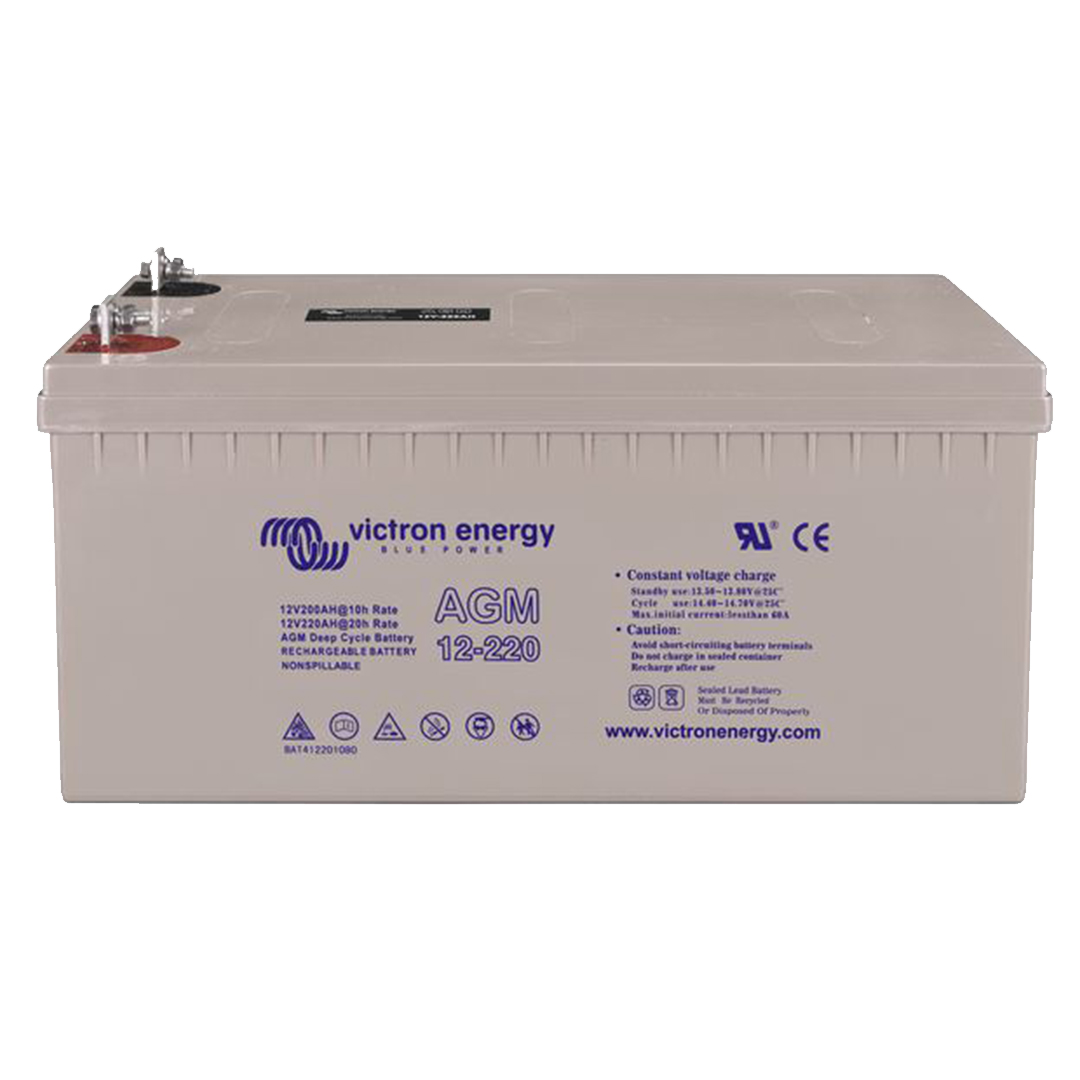
VICTRON 12V AGM – 220AH (8 PACK)
$ 5,352.00
Victron 12v AGM batteries have extremely low internal resistance suitable for high current discharge marine applications like inverters, thrusters, and winches, as well as engine starting.
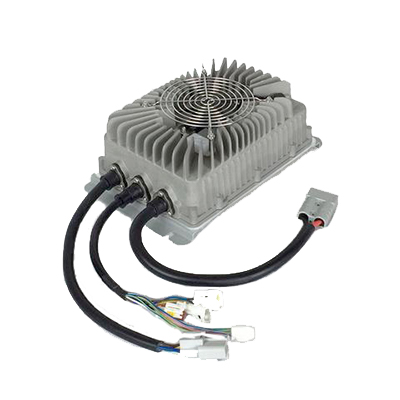
EV – AGM – 96V BATTERY CHARGER ONBOARD
$ 895.00
* Deep Cycle chargers are only compatible with Deep Cycle Batteries.
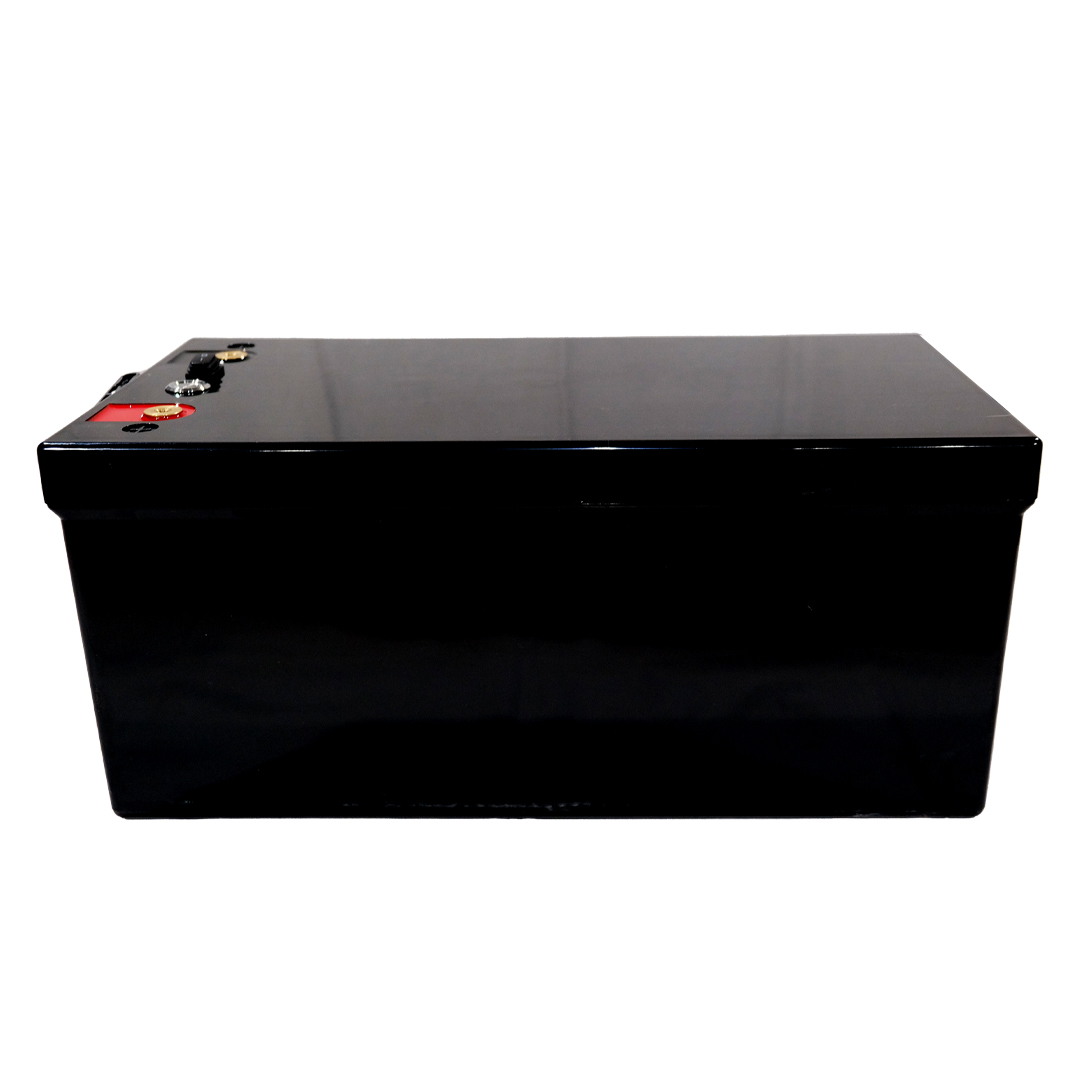
LITHIUM IRON PHOSPHATE BATTERY – 96V – 200AH = (4) 100AH BATTERIES
$ 11,800.00
Recommended Motors: EP-30 (96V- 4 pack) Size (L x W x H): 25″ x 9.8″ x 9″ Weight: 101lb/ea Long Life Cycle: Grade A LiFePO4 Cells make the 200Ah battery more stable, lighter, and greater.
LITHIUM IRON PHOSPHATE BATTERY – 96V – 300AH = (6) 100AH BATTERIES
$ 17,700.00
Recommended Motors: EP-50 (96V- 6 pack) Size (L x W x H): 25″ x 9.8″ x 9″ Weight: 101lb/ea Long Life Cycle: Grade A LiFePO4 Cells make the 300Ah battery more stable, lighter, and greater.
LITHIUM IRON PHOSPHATE BATTERY – 96V – 400AH = (8) 100AH BATTERIES
$ 23,600.00
Recommended Motors: EP-50 (96V- 8 pack) Size (L x W x H): 25″ x 9.8″ x 9″ Weight: 101lb/ea Long Life Cycle: Grade A LiFePO4 Cells make the 400Ah battery more stable, lighter, and greater.
EV – LITHIUM – 96V BATTERY CHARGER
* Lithium chargers are only compatible with Lithium Batteries.
Step 4. Select Battery Connection Kit
Pre-assembled battery connection cables simplify motor installation. Our 7-foot electric battery cables and 18-inch battery jumper cables are adequately sized based on the motor amp draw. Swaged terminal ends are sealed with epoxy-impregnated heat-shrink tubing where they connect to marine-grade fuse blocks, Anderson motor connectors, and batteries.
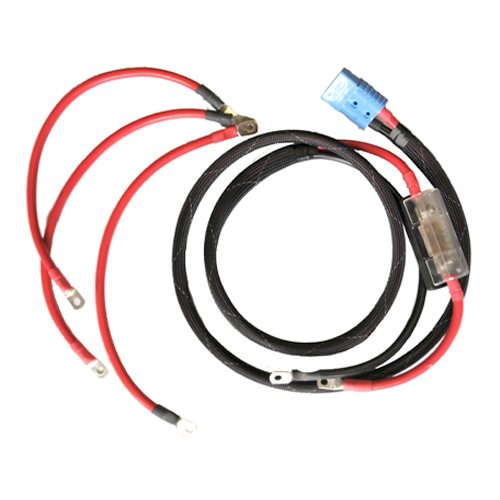
BATTERY CONNECTION KIT | 96V-144V
$ 290.00
Use this 7ft Battery Connection Harness to connect your batteries.
Compatible with following motors:, outboards: ep-30 | ep-50, inboards: ep-40 | ep-70 | ep-100, step 5. select battery monitor.
Battery monitors help you take better care of your battery. Your battery monitor also provides real-time and historical information on voltage, power consumption, and more.
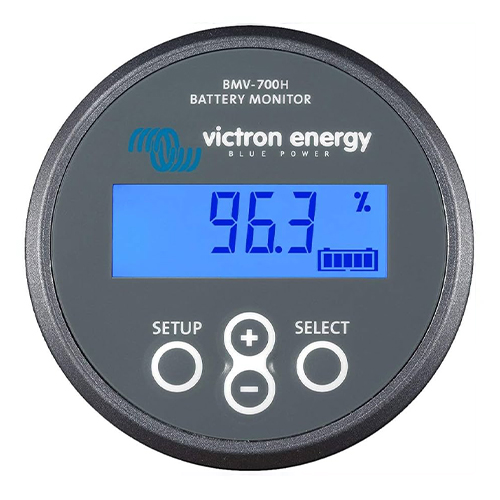
VICTRON BMV-700H
$ 728.00
This monitor is used to see how much charge you have left in your batteries.
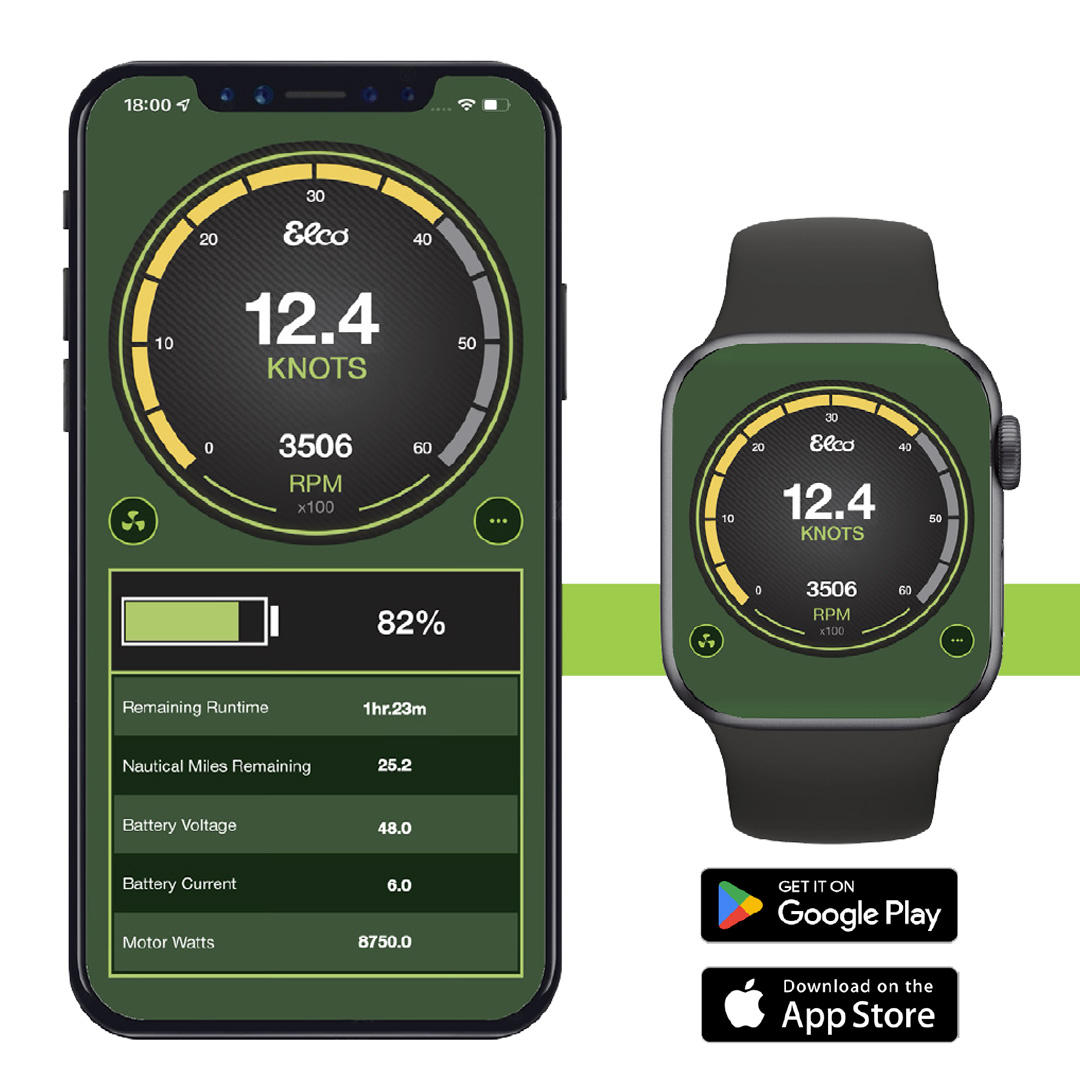
Elco DASH App – Bluetooth Connector
$ 345.00
Elco’s D ASH motor app wirelessly turns any iOS or Android mobile device into a full-function dashboard.
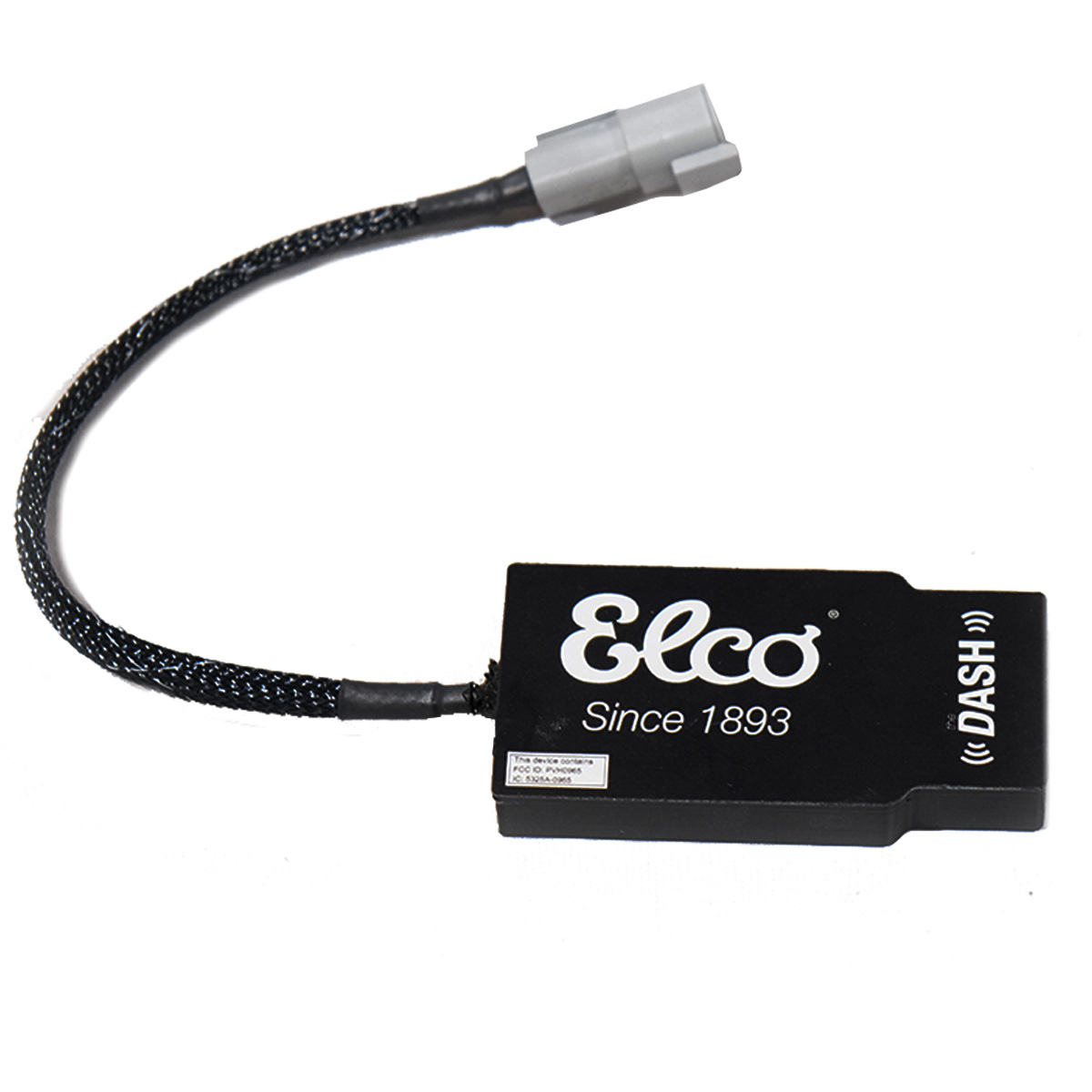
Click Store to Download after install

Step 6. Select Electric Trim and Tilt
Electric trim and tilt units simplify boat operation, increase performance and safety. This electric trim and tilt model matches this electric outboard.
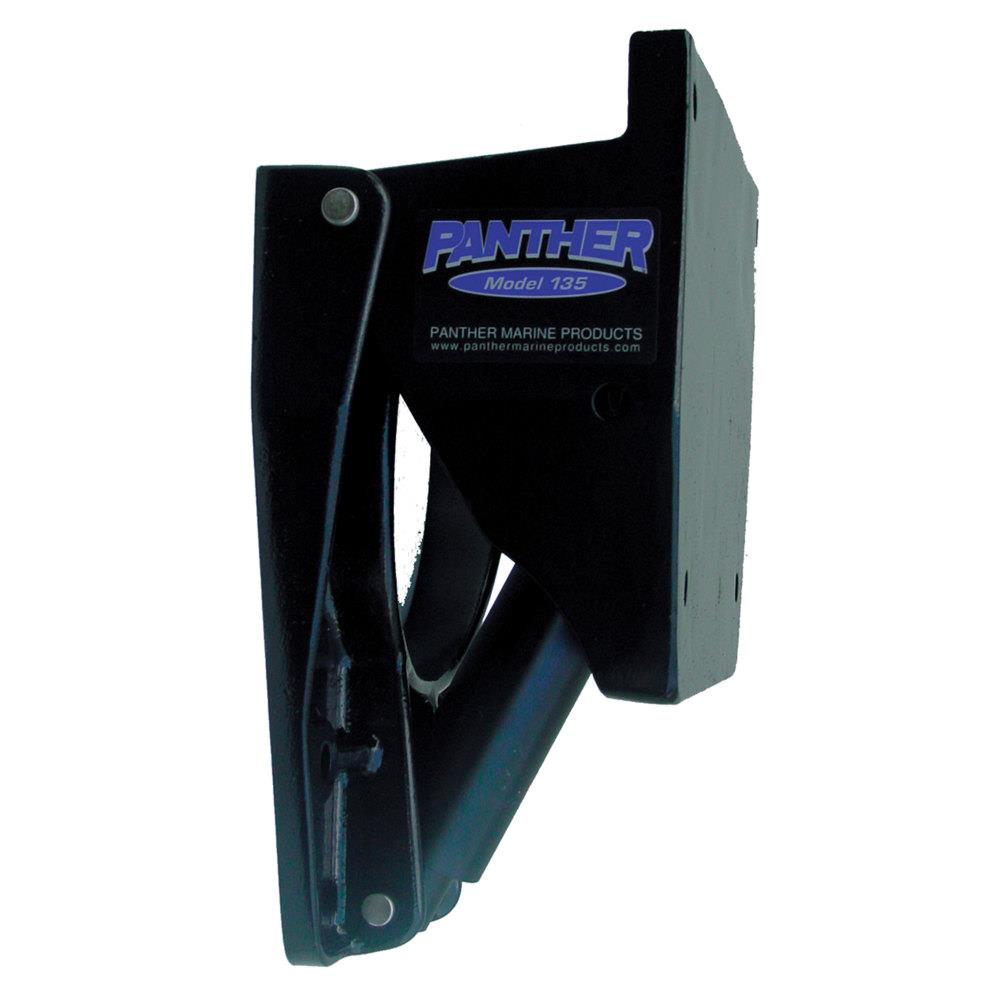
PANTHER ELECTRIC HYDRAULIC MODEL 135 TILT AND TRIM
$ 995.00
Electric trim and tilt
Product total
Options total
Grand total
- Description
Specifications
Experience a blend of history and innovation with Elco’s EP-50 electric outboard. This 50-hp electric outboard motor, built on a legacy dating back to the 1893 World’s Columbian Exhibition in Chicago, offers powerful and quiet propulsion for your boating adventures. The EP-50 electric outboard is more than just a motor; it’s a testament to Elco’s unwavering commitment to sustainability and technological advancement. Customize your 50-hp electric boat motor with accessories like remote throttles and a dash app for real-time battery charge monitoring. Journey with Elco Motor Yachts and make a difference with every nautical mile you traverse.
EP-50 ELECTRIC OUTBOARD FEATURES AND BENEFITS
• Reliable and durable construction with minimal maintenance required • Available in tiller or top- and side-mount throttle control • All motors available in long- or short shaft models • Traditional aluminum casting so replacement parts are readily available • Water-cooled system that prevents over-heating • Multiple safety precautions including over-speed protection, overload protection, temperature protection, over-voltage and over-current protection • Consistent power throughout the speed range • Brushless PMAC motor that is over 90-percent efficient • Cruise with peace of mind thanks to our “Get Home Safe” battery alert system • Clean cruising without the hassles and hazards of gasoline • Low cost of operation compared to traditional gas motors
See how easy it is to install the Elco electric outboard.
Related products
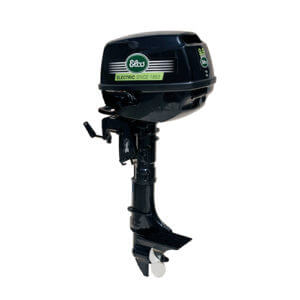
EP-9.9 Electric Outboard
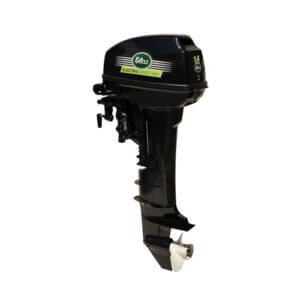
EP-14 Electric Outboard
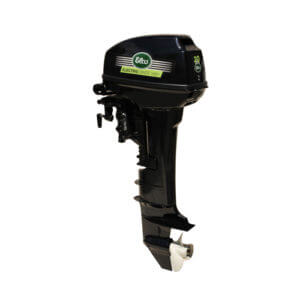
EP-20 Electric Outboard
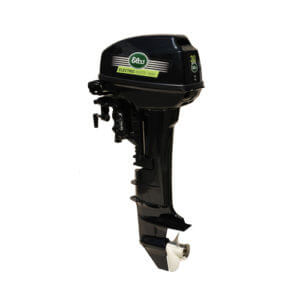
EP-30 Electric Outboard
Quick shopping links.
- Electric Outboard Motors
- Electric Outboard Motor 5 HP
- Electric Outboard Motor 9.9 HP
- Electric Outboard Motor 14 HP
- Electric Outboard Motor 20 HP
- Electric Outboard Motor 30 HP
- Electric Outboard Motor 50 HP
- Electric Inboard Motors
- Electric Inboard Motor 6 HP
- Electric Inboard Motor 12 HP
- Electric Inboard Motor 20 HP
- Electric Inboard Motor 40 HP
- Electric Inboard Motor 70 HP
- Electric Inboard Motor 100 HP
- Electric Inboard Motor 200 HP
Battery Chargers
- NOCO GEN 2 Deep Cycle Battery Charger
- NOCO GEN 3 Deep Cycle Battery Charger
- NOCO GEN 4 Deep Cycle Battery Charger
- NOCO GX2440 Lithium Battery Charger
- NOCO GX4820 Lithium Battery Charger
- EV- AGM / Lithium Battery Charger
- Electric Boat Motor Batteries & Accessories
- Elco Classic Launches
- Elco in the News
- Customer Stories
- Press Releases
- Get Updates
- Benefits of Going Green
- Our Technology
- Frequently Asked Questions
- Honoring Heroes
- Tell us about your boat
- Dealer Application
- Dealer Log-In
- Return Policy
© 2024 Elco Motor Yachts. All Rights Reserved. Sitemap.
- Privacy Overview
- Strictly Necessary Cookies
This website uses cookies so that we can provide you with the best user experience possible. Cookie information is stored in your browser and performs functions such as recognising you when you return to our website and helping our team to understand which sections of the website you find most interesting and useful.
Strictly Necessary Cookie should be enabled at all times so that we can save your preferences for cookie settings.
If you disable this cookie, we will not be able to save your preferences. This means that every time you visit this website you will need to enable or disable cookies again.
- Motorcycles
- Car of the Month
- Destinations
- Men’s Fashion
- Watch Collector
- Art & Collectibles
- Vacation Homes
- Celebrity Homes
- New Construction
- Home Design
- Electronics
- Fine Dining
- Baja Bay Club
- Costa Palmas
- Fairmont Doha
- Four Seasons Private Residences Dominican Republic at Tropicalia
- Reynolds Lake Oconee
- Scott Dunn Travel
- Wilson Audio
- 672 Wine Club
- Sports & Leisure
- Health & Wellness
- Best of the Best
- The Ultimate Gift Guide
- Lexus Just Unveiled a Speedy New 68-Foot Yacht
The 68-footer can only be ordered in Japan—for now, at least.
Rachel cormack.
Digital Editor
Rachel Cormack's Most Recent Stories
- Fabergé’s Newest Bejeweled Egg Is Inspired by the James Bond Classic ‘Octopussy’
- A U.S. Lawmaker Is Accusing Loro Piana of Exploiting Peruvian Workers
- Share This Article

Lexus just unveiled the most powerful vehicle in its lineup, but it won’t ever reach the road.
Related Stories
- Boeing’s CEO Will Leave the Embattled Aircraft Maker by End of the Year
- Why Bentley Is Remaking One of Its Oldest Models
- The New Mercedes-Benz G-Class Gets More Aerodynamic Ahead of Its Electric Era
The luxury yacht, or LY for short, was designed to “feel like a hideout in the middle of the sea,” according to Lexus. The exterior reflects the automaker’s “L-finesse” design philosophy, with curvy, head-turning lines and a sharp bow creating a sporty profile.

The interior centers around a “comfortable living space,” Lexus says. With a beam of nearly 19 feet, the yacht offers a decent amount of space onboard, too. The nameplate didn’t divulge many details regarding decor, but Italian design powerhouse Nuvolari Lenard spearheaded the interior design of the 650. In terms of layout, the 680 is equipped with three cabins on the lower deck and a light-filled salon, galley, and helm station on the main deck.
The exterior is bigger—and perhaps better—than that of the 650. The flybridge has been extended by about 4.5 feet and adorned with a plush lounge and grill. The aft swim platform has also been lengthened by roughly 2.3 feet.
In terms of performance, the 680 will be powered by a pair of 12.8-liter turbocharged Volvo D13 engines capable of delivering 1,350 hp each to IPS drives. (The yacht can also be equipped with slightly less powerful 1,050 hp engines.) The 650 sported the same propulsion system and could reach 33.5 knots at full tilt.
Click here to see all the photos of the Lexus LY680.

Rachel Cormack is a digital editor at Robb Report. She cut her teeth writing for HuffPost, Concrete Playground, and several other online publications in Australia, before moving to New York at the…
Read More On:
- Horizon Group
More Marine

This New High-Performance Electric RIB Can Hit a Ferocious 50 Knots at Full Tilt

This New 144-Foot Superyacht Has a Glassed-In Dining Room With Ocean Views

This Insane Submarine Concept Doubles as a 107-Foot Superyacht

Taking a Bow: How Yacht Makers Are Rethinking the Front End

Culinary Masters 2024
MAY 17 - 19 Join us for extraordinary meals from the nation’s brightest culinary minds.
Give the Gift of Luxury
Latest Galleries in Marine
Lexus ly680 yacht in photos.

From Diving to Shipwrecks to Kayaking Luminous Waters: 10 Caribbean Experiences You Can Only Access by Boat
More from our brands, e.l.f. cosmetics partners with liquid death for heavy metal-inspired makeup collection, the 100 most valuable sports teams in the world, hybe strikes 10-year deal with universal music group, archaeologists uncover earliest known iron age house in greek village, the best yoga blocks to support any practice, according to instructors.

IMAGES
VIDEO
COMMENTS
Cheoy Lee Clipper on Lake Superior. Jan 2, 2023. Sailing with an Electric Motor In 2021 we installed the QuietTorque™ 10.0 Electric Motor by Electric Yacht on our 1972 Cheoy Lee Clipper Sailboat, which we use for day charters from May through October on Lake Superior. We have been extremely satisfied with the...
A modern electric yacht can come in all shapes and sizes, from the latest high-tech speed boats with recently developed high-performance electric engines, to a traditional tender with an electric outboard on the back. Increasingly yachts are going electric too as electric engines become increasingly capable of propelling boats weighing several tonnes, and with the rigging for sails, at a ...
With the Spirit 1.0 Evo electric sailboat motor, you can go 5.5 mph (8.8 kph) at top speed on the 21 ft RS21 sailing boat, or troll for 20 hours continuously at 2.2 mph (3.5 kph) according to our test. This electric sailboat motor with regeneration allows you to recover energy from the prop while under sail.
ALVA Yachts, the German builder of luxury electric solar catamarans and sail boats, has announced it is currently building the world's first fuelless 90ft superyacht catamaran with wings, the OCEAN ECO 90 H2. The first superyacht catamaran to run without fossil fuels and producing zero emission, the OCEAN ECO 90 H2 is designed with luxury ...
Based in Quebec, Canada, Vision Marine Technologies has been in the boating industry for 25 years and produced some very innovative electric boats. In 2021, they launched E-Motion 180E, one of the most powerful electric outboards on the market. Frauscher 740 Mirage Air with Torqeedo Deep Blue 100i 2400.
Elco Motor Yachts has been at the forefront of marine innovation, proudly boasting a rich history spanning over 130 years. The company supplied 55 groundbreaking electric launches at the 1893 Chicago World's Fair. The vessels, powered by Elco's electric boat motors, swiftly captured the hearts of boating enthusiasts worldwide.
In addition to emissions-free yachting, electric yachts deliver quiet, vibration-free rides that are easy to get used to. Courtesy Sunreef Yachts. Finally, there can also be the grin factor. "The Eelex 8000 can accelerate from 0 to 20 knots in 4.2 seconds," Wästberg says.
Electric Yacht Offers a complete package designed to make an electric repower as easy and straight forward as possible: uses state of the art permanent magnet ac (PMAC) motors and vector motor controllers, maximizing efficiency across the entire operating envelope. offers adjustable regeneration that can be optimized to your boat, propeller and sailing conditions.
Zennstrom shared his views on the future of electric racing in a CNN article in 2018: "Having gone through the design, build and initial test cycle there is no doubt to me that the future for racing yachts is electric propulsion. It's lighter, less drag, quieter, and most importantly it is environmentally friendly.".
Our electric inboard boat motor conversion kits can turn a noisy gas-powered boat into a serene pleasure boat for quiet enjoyment of nature's beauty. Our electric inboard boat motors, ranging from 6HP to a robust 200HP, are a testament to Elco's commitment to innovation and sustainability. We meticulously craft each electric inboard motor ...
Silent 28 Speed. Silent Yachts ' electric-powered Silent 28 Speed grabbed headlines at the 2022 Cannes Yachting Festival thanks to a claimed top speed of more than 60 knots and an impressive range of 70nm at 30 knots. The secret to its performance is a foil-assisted hull with unique surface-piercing propellers.
The Vantage is the company's primary propulsion motor. Most Popular Motor: The Vantage ($1,549.99) is not Minn Kota's most popular motor, but it's a top contender in the boat market where electric propulsion is desired or required. The tiller-steered Vantage is ideal for use as a kicker for trolling, or propulsion for a tender or small ...
The Eegle 20m looks set to be the first production electric trawler yacht and it has the speed and range to rival its diesel-powered counterparts... Silent Yachts may have led the way with its electric cruising catamarans but now a Swiss entrepreneur is hoping to appeal to monohull enthusiasts with the first battery-powered trawler yacht, the ...
Electric boat motors are becoming more popular and are a great option for tenders. Yacht companies also use hybrid and electric motor systems in their top-of-the-line yachts. Some adventurous voyagers are even converting old boats into all-electric vessels. However, it's important to consider what's right for you and the limitations of this technology. The future of the traditional diesel ...
Electric motors achieve instant torque with Electromotive Force while internal combustion engines need to build RPMs gradually by increasing piston firing frequency. Hydro Generation At sailing speeds over 6 knots Oceanvolt systems are able to generate significant power for recharging the battery bank by activating at the touch of a button.
This summer, the world of competitive sailing is set to witness a historic moment as the Dutch sailing organization introduces their first-ever emission-free, hydrogen-powered coach boat, equipped with a Torqeedo Deep Blue electric motor. Learn why this is a pivotal moment in the effort to protect our climate and local air quality.
Torqeedo. When it comes to electric boats, Torqeedo is synonymous with advanced technology and sustainability. This German manufacturer has been a major player in the electric boat motor industry, setting standards for high-efficiency outboards, inboards, and hybrid drive systems since its inception. Electric boating and Torqeedo go hand in hand.
EP-50 Electric Outboard. $ 9,950.00. Comparable HP: 50HP. Voltage: 96 Volts. Suggested Battery Package Options: Deep Cycle AGM - Victron - 12V / 220ah (8 pack) Lithium Iron Phosphate - 96V / 200ah (4 pack minimum) Buy in monthly payments with Affirm on orders over $50. Learn more.
Evoy®'s turnkey inboard electric system is a robust system designed for 1000+ hours per year. Due to the over-the-air updates and programmable system, we can monitor, troubleshoot and update the software onboard. The system is nearly maintenance-free and very affordable to use. The system can be connected to a stern drive, water jet, or shaft.
Boat engineering and design company EJET Electric Yacht Tenders has announced the development of its latest electric motor 9X yacht tender model. Ljubljana, Slovenia - March 21, 2024 — Much like ...
Boating Made Effortless. An Avator electric outboard is designed to let anyone take the helm with confidence. Intuitive tiller or remote controls are comfortable, responsive and easy to use, putting boating freedom in your hands. And with its near-zero-maintenance design, it's ready to go when you are.
The innovative Swedish electric boat maker Candela has just announced its biggest funding round ever, reeling in €24.5M (US $26.6M). Fresh off the announcement of the first commercial user of ...
Specs. Weight: 15.5kg. Power: 600W / 0.8hp. Battery: 500Wh. Range: 11nm. Price: £1,499. Torqeedo has been making electric outboard motors for quite a while now, and their latest offering slots into the travel range of electric outboards between the 503 (1.5hp) and the 1103C (3hp). All the usual Torqeedo refinements are present and correct.
Much like their highly acclaimed 4X tender, the upcoming 9X model sports EJET's proprietary electric motor and drivetrain, going in line with founder Žiga Jarc's mission of providing sustainable transportation options for yacht owners and guests. Both models will be available in the summer, with the 9X build slated for initial testing in July.
LONG SHAFT TRANSOM HEIGHT. 22.5″. LONG SHAFT OVERALL ( HEIGHT, WIDTH, LENGTH) 50.4″ x 14.8″ x 27.7″. MSRP. $9,950. The EP-50 electric outboard is Elco's most powerful electric boat motor. Experience the tranquility of quiet electric operation with the power your boat needs.
The Japanese luxury marque first forayed into the marine industry in 2016, creating a one-off Lexus 42 Sport Yacht concept with Marquis Yachts. Two years later, Lexus designed the 65-foot LY650 ...
19 likes, 0 comments - elcomotoryachts on March 14, 2024: "The "Wenona" has been lovingly restored and still operates just the same as it did back in 1899. #eboat ...